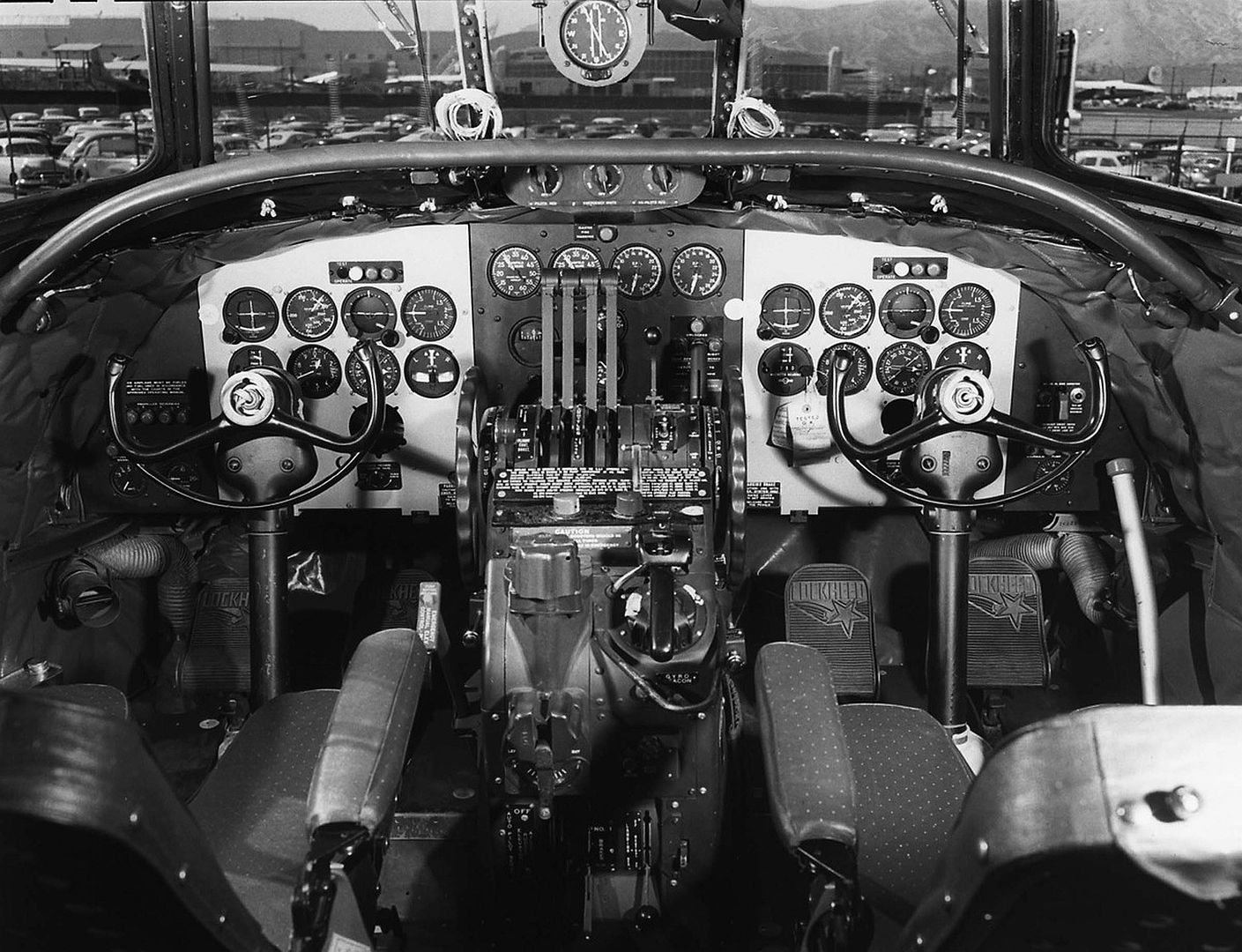Forums
- Forums
- Duggy's Reference Hangar
- USAAF / USN Library
- Lockheed Constellation
Lockheed Constellation
Post a reply
- Go to Previous topic
- Go to Next topic
- Go to Welcome
- Go to Introduce Yourself
- Go to General Discussion
- Go to Screenshots, Images and Videos
- Go to Off topic
- Go to Works in Progress
- Go to Skinning Tips / Tutorials
- Go to Skin Requests
- Go to IJAAF Library
- Go to Luftwaffe Library
- Go to RAF Library
- Go to USAAF / USN Library
- Go to Misc Library
- Go to The Ops Room
- Go to Made in Germany
- Go to Campaigns and Missions
- Go to Works in Progress
- Go to Juri's Air-Raid Shelter
- Go to Campaigns and Missions
- Go to Works in Progress
- Go to Skinpacks
- Go to External Projects Discussion
- Go to Books & Resources
-
5 years agoSun Jun 06 2021, 12:42pmDuggy
 Main AdminJust before the outbreak of World War II, the Lockheed Aircraft Corporation began work on a four-engine prop airliner, the "Constellation". It flew during the conflict, but played no real role in it; however, after the of the war, the Constellation -- and its improved "Super Constellation" derivative -- became mainstays of commercial aviation, and were extensively flown by the US military.
Main AdminJust before the outbreak of World War II, the Lockheed Aircraft Corporation began work on a four-engine prop airliner, the "Constellation". It flew during the conflict, but played no real role in it; however, after the of the war, the Constellation -- and its improved "Super Constellation" derivative -- became mainstays of commercial aviation, and were extensively flown by the US military.
Text from here as always thanks http://www.airvectors.net/avconnie.html
CONSTELLATION ORIGINS / C-69 / MODEL 049
By the mid-1930s, aviation technology had advanced to the state where commercial air transport was in a position to boom, with the Civil Aviation Act of 1938 establishing the Civil Aeronautics Administration to provide regulation for the booming industry. Both Douglas and Boeing flew prototypes of pressurized four-engine airliners -- the "DC-4E" and "Stratoliner" respectively -- in that year, but the Lockheed Corporation was overburdened with building small twins. Lockheed engineers were tinkering with the design of a four-engine pressurized airliner, the 30-seat "L-044 Excalibur" -- very much along the lines of an enlarged Lockheed Model 10 Electra twin -- but there was no push at the time for full development.
On 9 June 1939, Lockheed headquarters was paid a visit by well-known millionaire Howard Hughes, who had secretly obtained a majority share in Trans-World Airways (TWA). Hughes arrived in the company of Jack Frye, who Hughes had made TWA's president. TWA was bleeding money; Hughes believed that TWA's fortunes would be greatly improved if the airline obtained a leading-edge four-engine pressurized airliner, with trans-Atlantic range and a cruise speed of 480 KPH (300 MPH).
Lockheed's competitors had turned down the request, finding it too aggressive; but Lockheed president Bob Gross called in his chief engineers -- Clarence "Kelly" Johnson and Hall Hibberd -- and told them: "Come up with something." The Excalibur couldn't do the job as was, but it was a starting point. Long meetings were discreetly conducted at a Hughes place in Hollywood, leading to Lockheed offering Hughes the "L-049 Constellation". Hughes asked the price, to be told: $425,000 USD. Hughes mulled that over, then replied: "Hell, TWA can't pay, the airline's broke. Go ahead and build 40. I'll pay for them myself."
With America's entry into World War II on 7 December 1941, production of commercial airliners effectively came to a stop for the duration. Work on the Model 049 nonetheless continued, since US Army Air Force (USAAF) effectively hijacked the program for war needs in 1942. Initial flight of the first prototype from Burbank, California -- some sources claim it was from Muroc Air Base in California -- was on 9 January 1943, the aircraft being piloted by Lockheed test pilot Milo Burcham and Boeing test pilot Eddie Allen.
Allen was there at the insistence of the USAAF, no doubt due to his familiarity with four-engine aircraft. According to the tale, after Allen got back on the ground, he said: "This machine works so well, you don't need me any more." -- and went back to Seattle. Then again, he may have just wanted to get home; he was killed a little over a month later in a ghastly crash of a Boeing B-29 Superfortress prototype. In any case, the "C-69", as the USAAF designated it, was painted in thoroughly military olive-green colors, though also sporting Lockheed company logos. It would be the only one of the C-69s to have such a color scheme, all others being delivered in natural metal finish.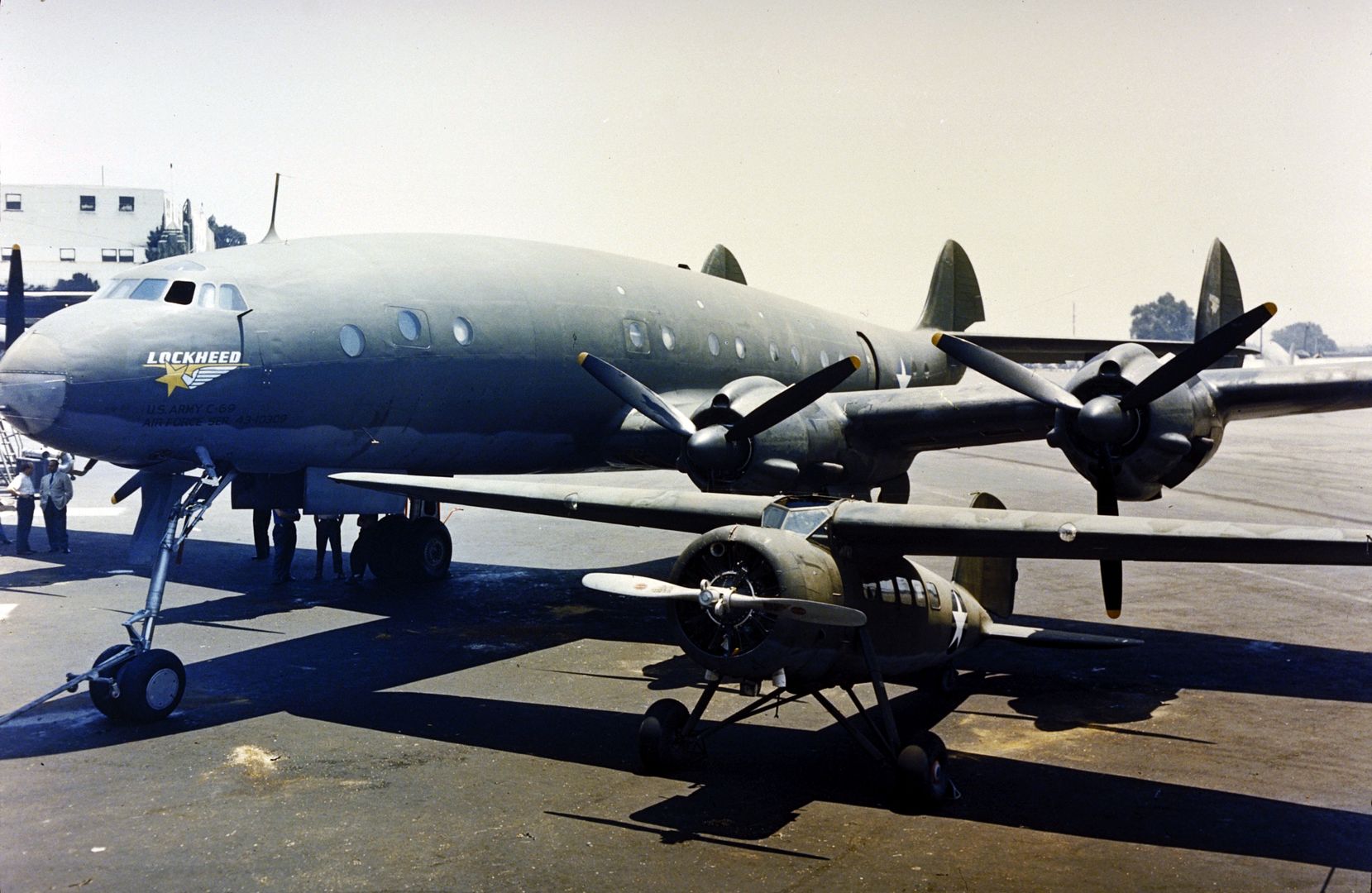
The Constellation was made mostly of aircraft aluminum alloy, and featured:
A sleek fuselage, something like an elongated fish with smooth curves, featuring a circular cross-section, a snub nose, and a triple-fin tail. Triple tailfins were selected because a single tailfin would have been too tall to fit into typical hangars.
A low-mounted wing with four two-row 18-cylinder air-cooled Wright R-3350-35 Duplex Cyclone radial engines, providing 1,640 kW (2,200 HP) each. The wing was derived from that of the Lockheed P-38 Lightning twin-engine fighter. The wings had two spars, each wing stowing inboard and outboard fuel tanks; the four tanks provided a total fuel capacity of 17,775 liters (4,690 US gallons).
A conventional flight control surface arrangement: flaps, ailerons, rudders, elevators, with tabs for trimming. The flaps were in six sections. All controls were hydraulically-actuated, which was something of an innovation at the time. Early production machines had fabric-covered ailerons; the ailerons were metal-skinned in later production. The rudders and elevators were fabric-covered. All flight surfaces could be optionally fitted with pneumatic de-icing boots.
Tricycle landing gear, an innovative feature at the time. All gear had twin wheels, the nose gear retracting backwards, the main gear retracting forward into the inboard engine nacelles. The nose gear castored but was not steerable, complicating ground handling; steerable nose gear would be added in later Model 049 production. The landing gear was very tall, giving the Constellation high ground clearance.
There had been thought of a perfectly streamlined cockpit, giving the aircraft something of the appearance of a whale -- but as the Model 049 actually flew, it had a conventional stepped cockpit. There had also been consideration of highly streamlined engine nacelles, with air inlets in the wings to provide reverse airflow, but that wasn't done either.
The C-69 was configured as a troop transport, with 44 seats on the right and four folding four-seat benches on the left, for a total of 60 passenger seats. There were two lavatories in the rear. The C-69 was fitted with militarized avionics, including radios, navigation / landing aids, and identification friend or foe (IFF) transponder. The "C-69A" was to be a military troop transport with 100 seats, as well as window ports through which troops could fire their weapons, while the "C-69B" was to be a long-range version of the C-69A; neither was built.
In April 1944, to publicize the Constellation, Howard Hughes flew the second C-69 from Burbank to Washington DC nonstop in six hours, 57 minutes, and 51 seconds, setting a transcontinental speed record. Although it was on loan from the military, Hughes had large "TWA" logos painted on it. However, at the time, the C-69 was still suffering from teething troubles, and it would never reach full service status during the war.
The USAAF had placed orders for 22 C-69s, including 9 originally to be built for TWA, and 13 from a projected military buy of 180. One was configured as a VIP transport, being designated "C-69C"; it would end up in service as a pilot trainer, then later sold off to the British Overseas Airways Corporation / BOAC. Only 15 C-69s were actually delivered to the USAAF, the military finding the Douglas DC-4 / C-54 generally satisfactory for the personnel transport / cargolifter mission -- though it was smaller, slower, and lacked pressurization. The end of the war resulted in the cancellation of further production of C-69s. Two C-69s were obtained by the US Navy under the designation of "R7O-1".
The prototype C-69 was retained by Lockheed for development, being fitted with four Pratt & Whitney (P&W) R-2800 Double Wasp two-row 18-cylinder air-cooled radial engines with 1565 kW (2,100 HP) each, as well as a thermal de-icing system, to be redesignated "XC-69E". The interest in the Double Wasp was driven by the fact that the Duplex Cyclone had a number of problems early on, notably a tendency to catch on fire; but the problems were resolved. Although early on, Lockheed offered customers a choice of the Wright Duplex Cyclone, the P&W Double Wasp, and even the British Bristol Centaurus two-row 18-cylinder radial -- clearly with UK sales in mind -- nobody ever ordered the Constellation with Double Wasp or Centaurus engines.
Lockheed bought back the seven unfinished C-69s on the Army order, with the military selling off eleven 69s to civil service as well. Lockheed fitted them all out as civil airliners, with improved accommodations and climate control, plus a galley. The climate control did not work well, with some passengers roasting while others froze. The navigator's compartment could be used as a crew rest area for overseas flights; additional seating for eight passengers; or as a lounge. Emergency escape was in a primitive state in those days, with passengers and crew expected to get out using a rope ladder. Eventually, emergency chutes were installed instead.
TWA obtained the first of 27 Model 049s in November 1945, with commercial service of the Constellation beginning in early 1946. As production of the Model 049 went on, it was reinforced to permit higher maximum take-off (MTO) weights, from the original 39,115 kilograms (86,250 pounds), rising by increments from the improved "Model 049A" through "Model 049E" models to 40,815 kilograms (90,000 pounds). A total of 88 C-69s/L-049s was built, with 82 ending up in commercial service. The big buyers were TWA (31) and Pan-Am (20); but they were also sold in smaller numbers to American Overseas Airlines (7), BOAC (6), the Dutch KLM airline (6), Intercontinental US (4), Air France (4), Capital (2), and Lineas Aereas Venezuela / LAV (2).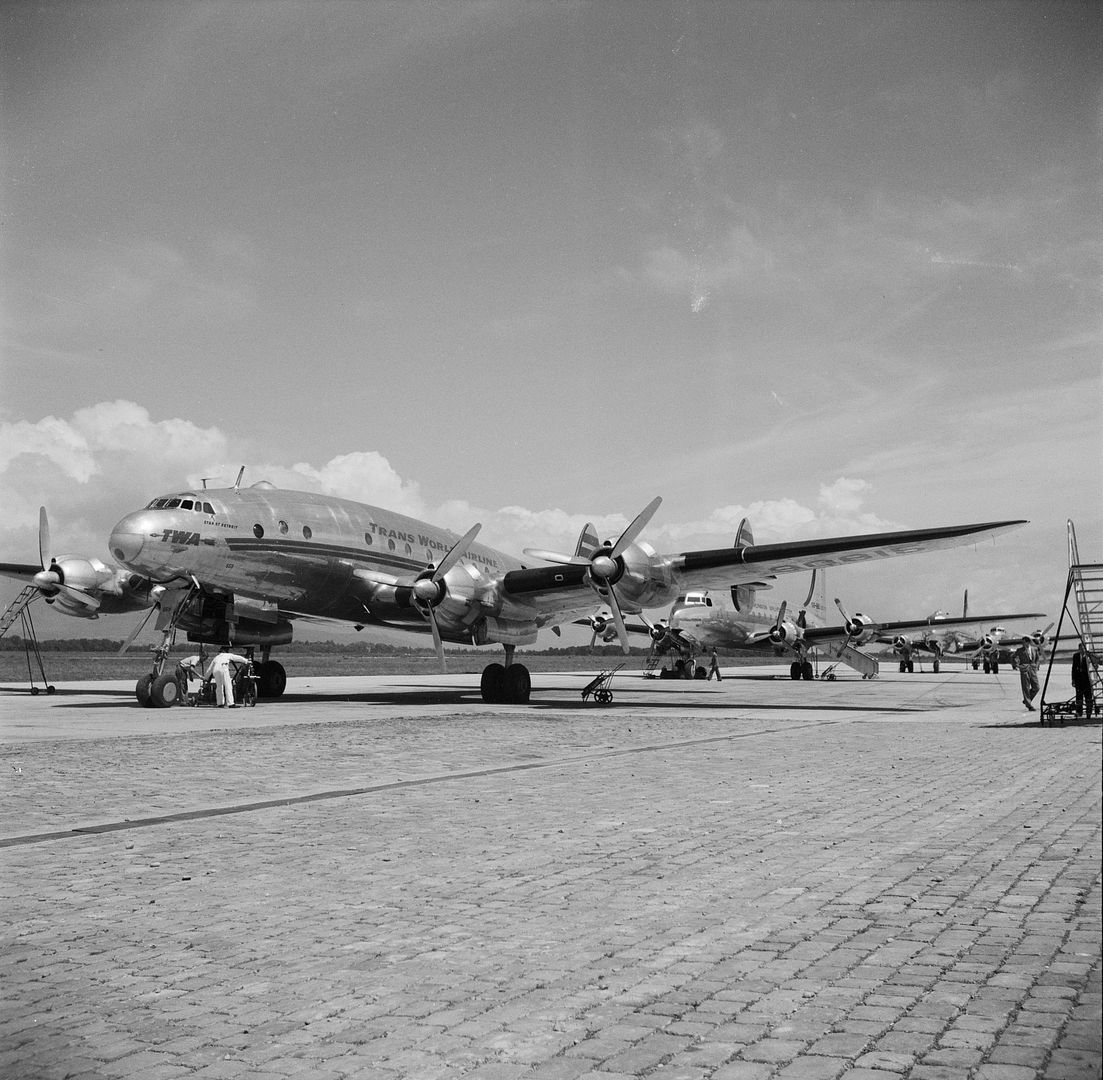

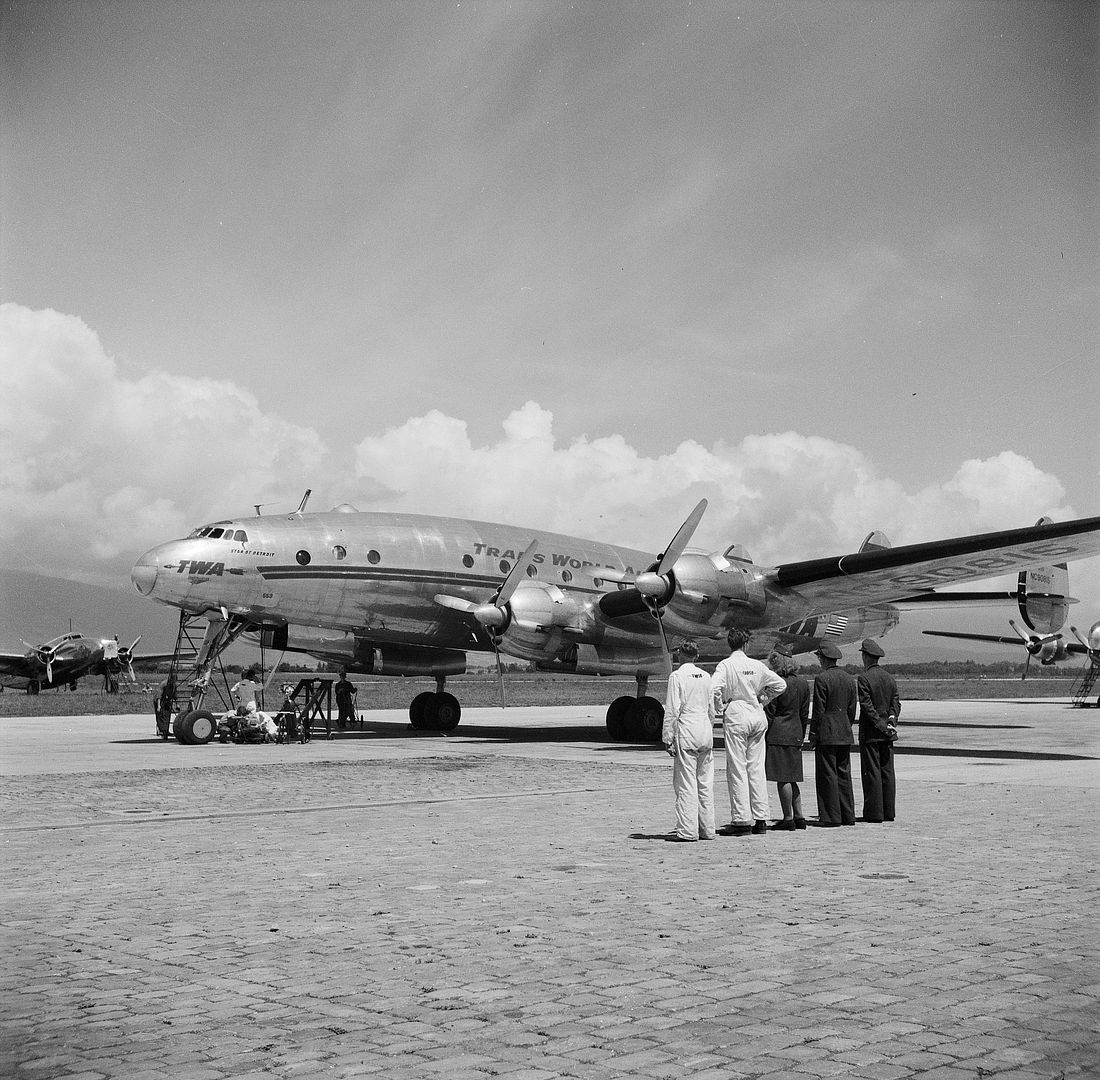

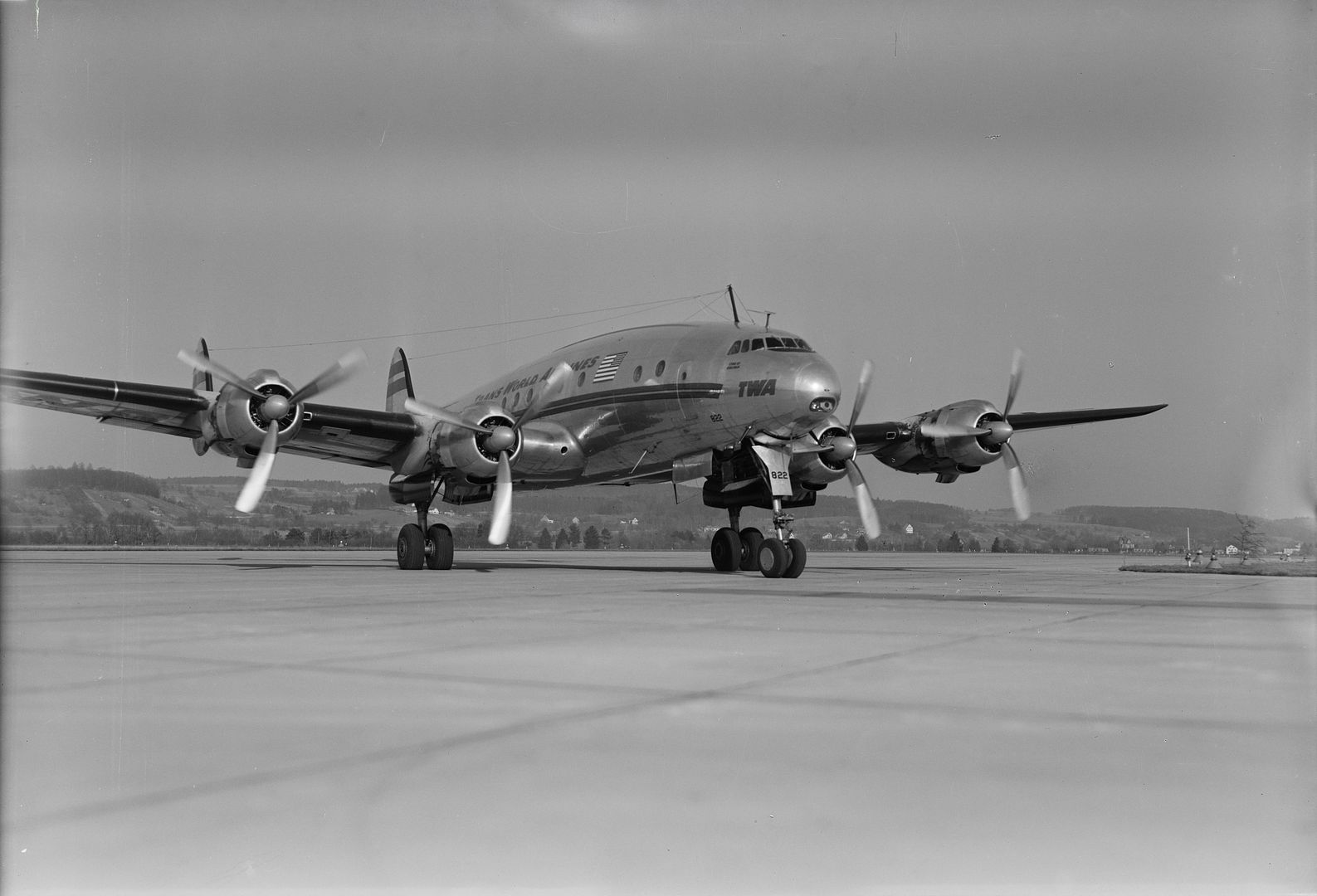
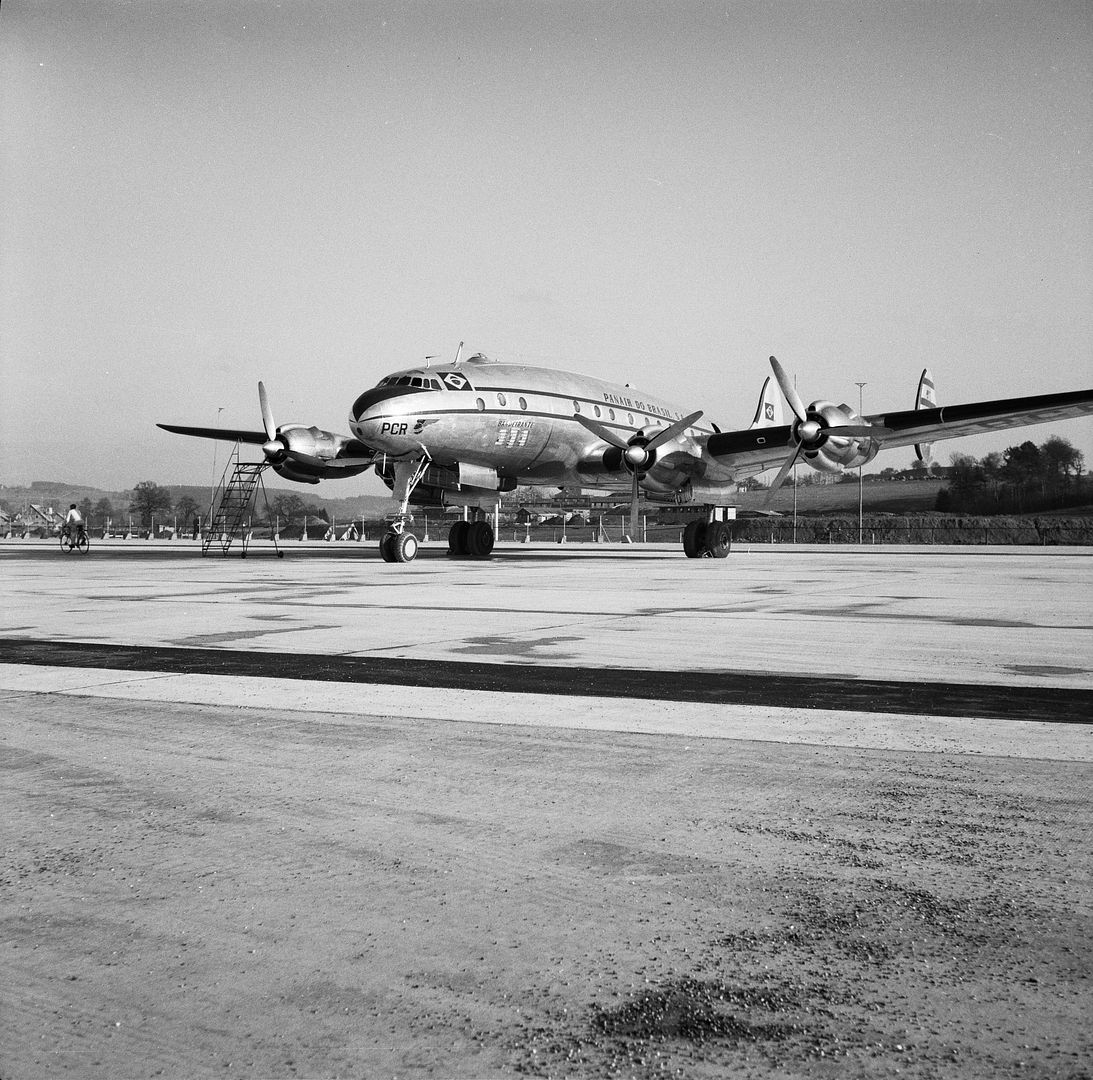
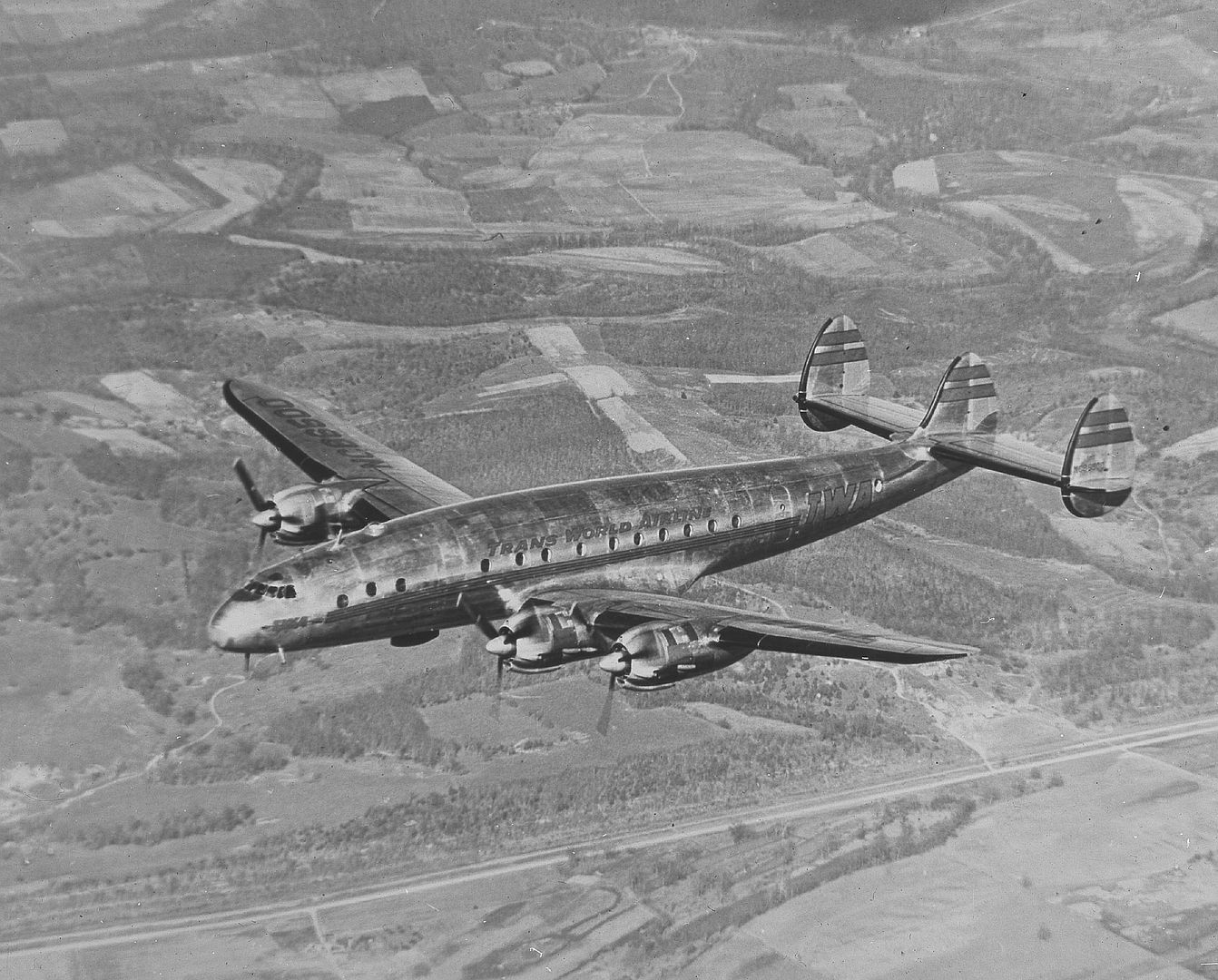
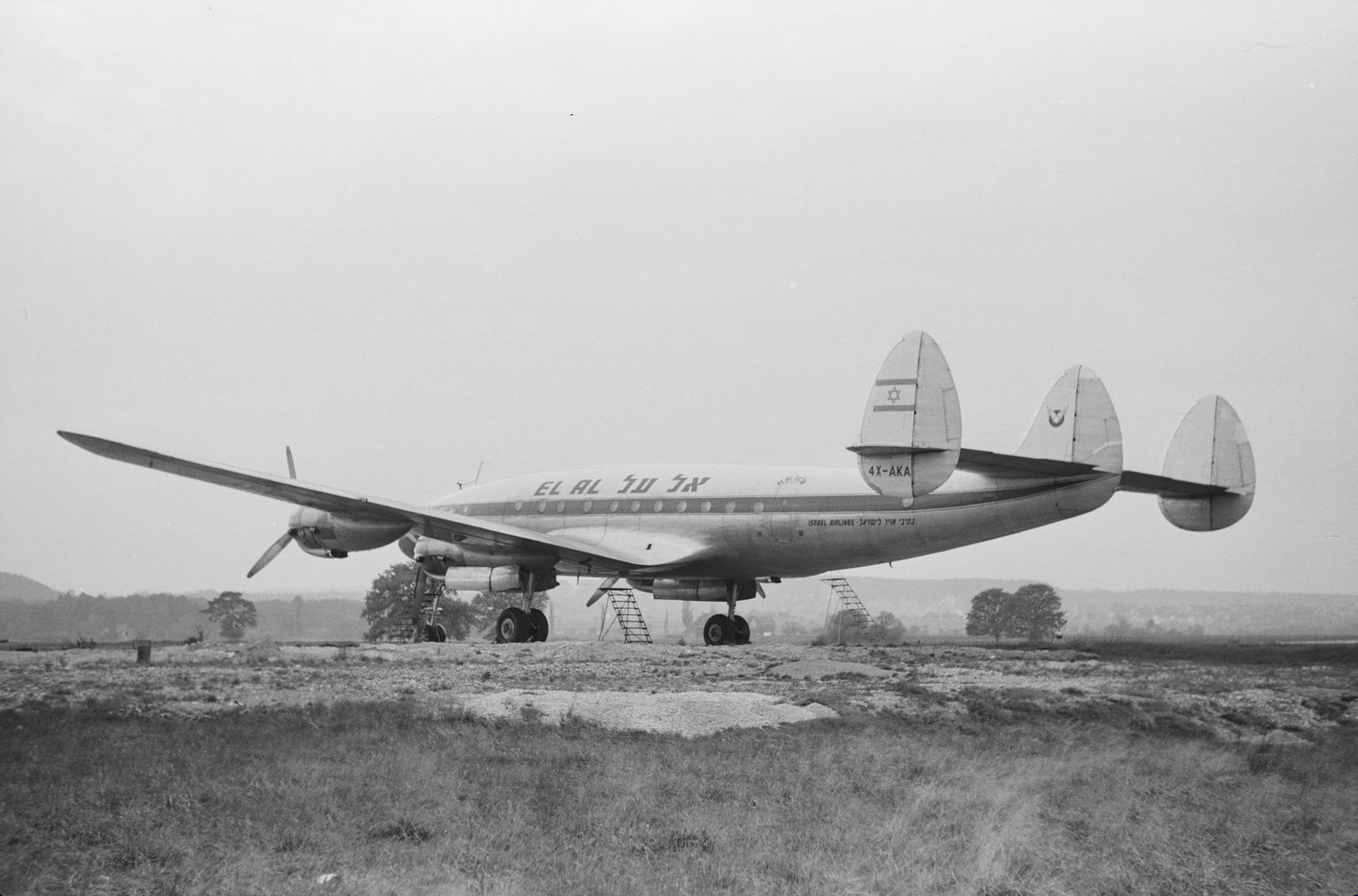
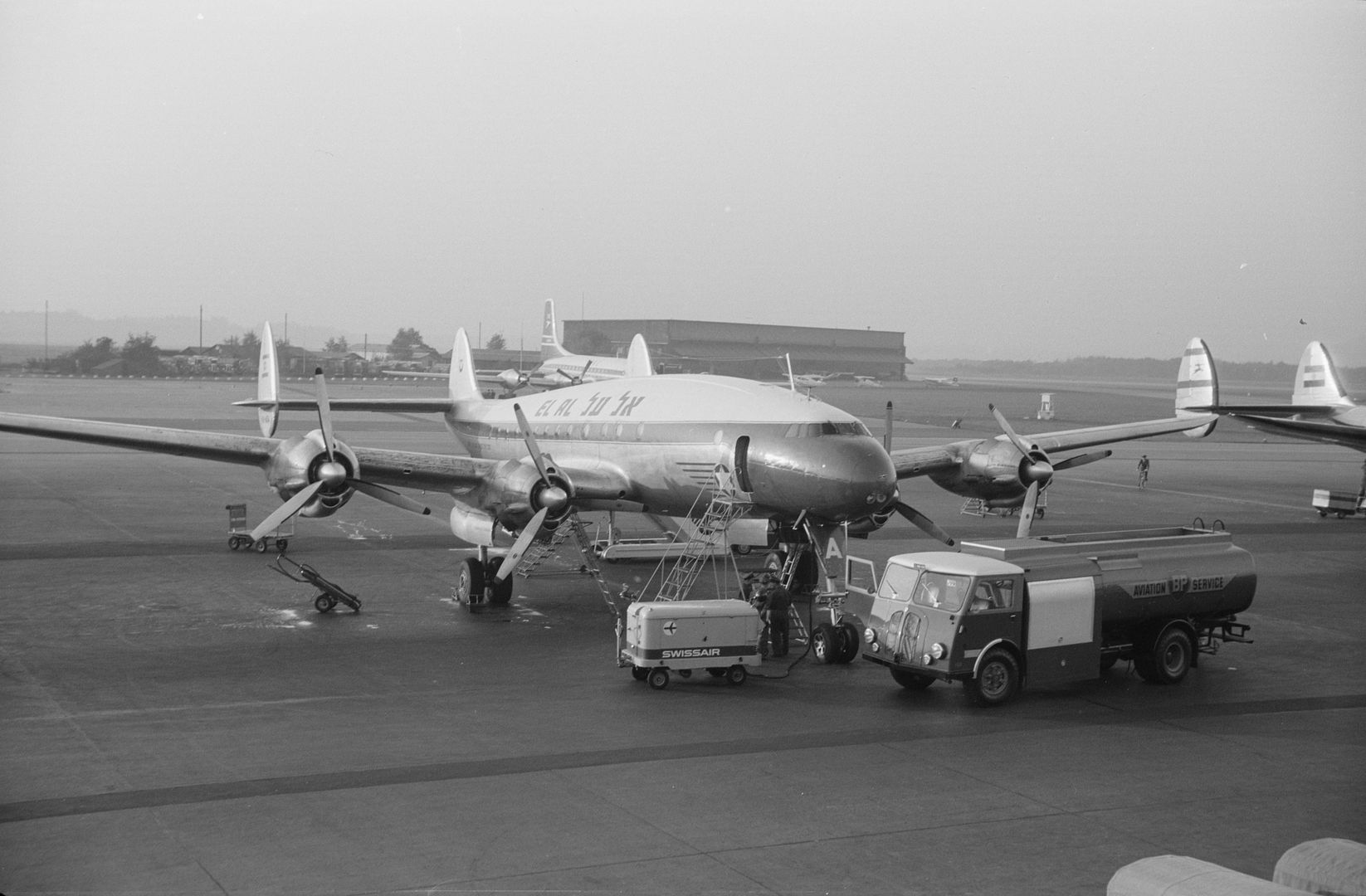
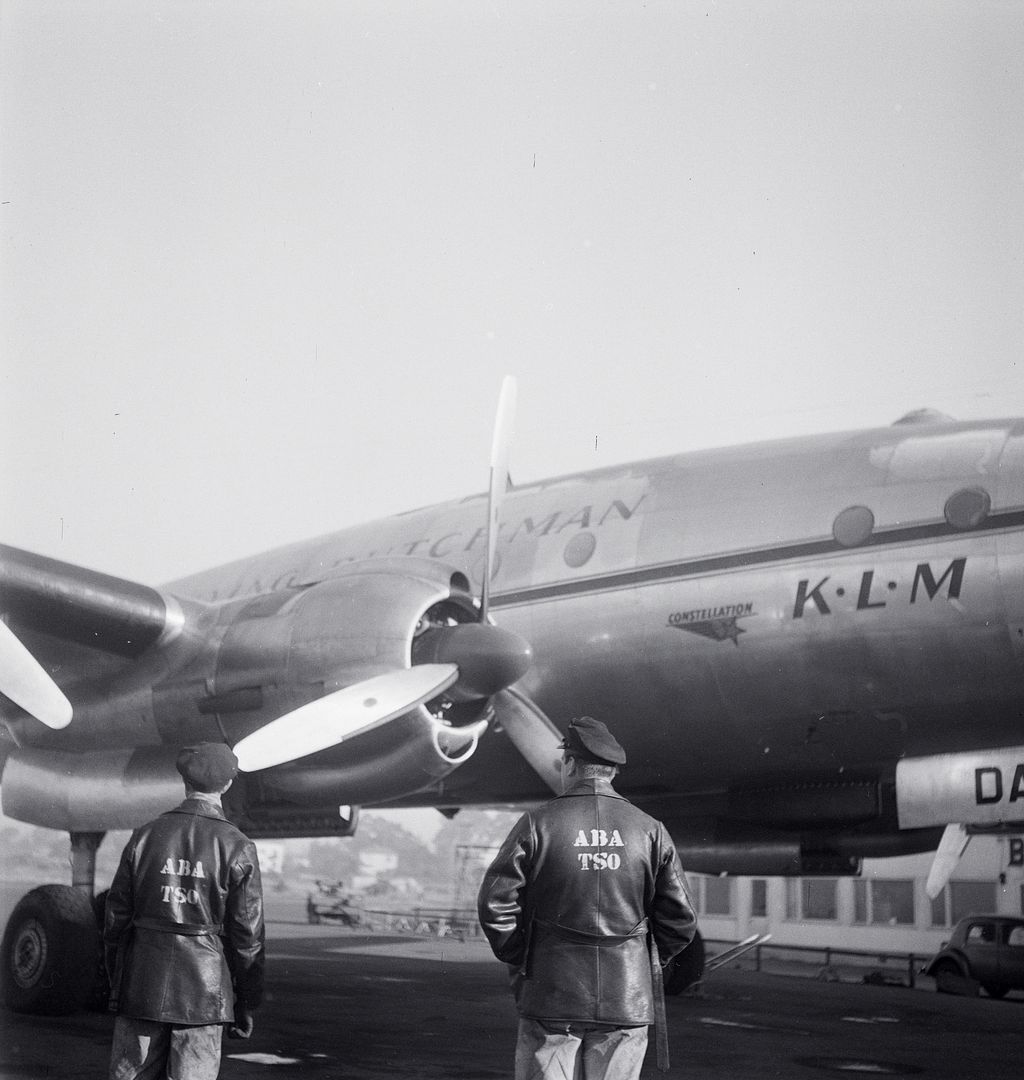
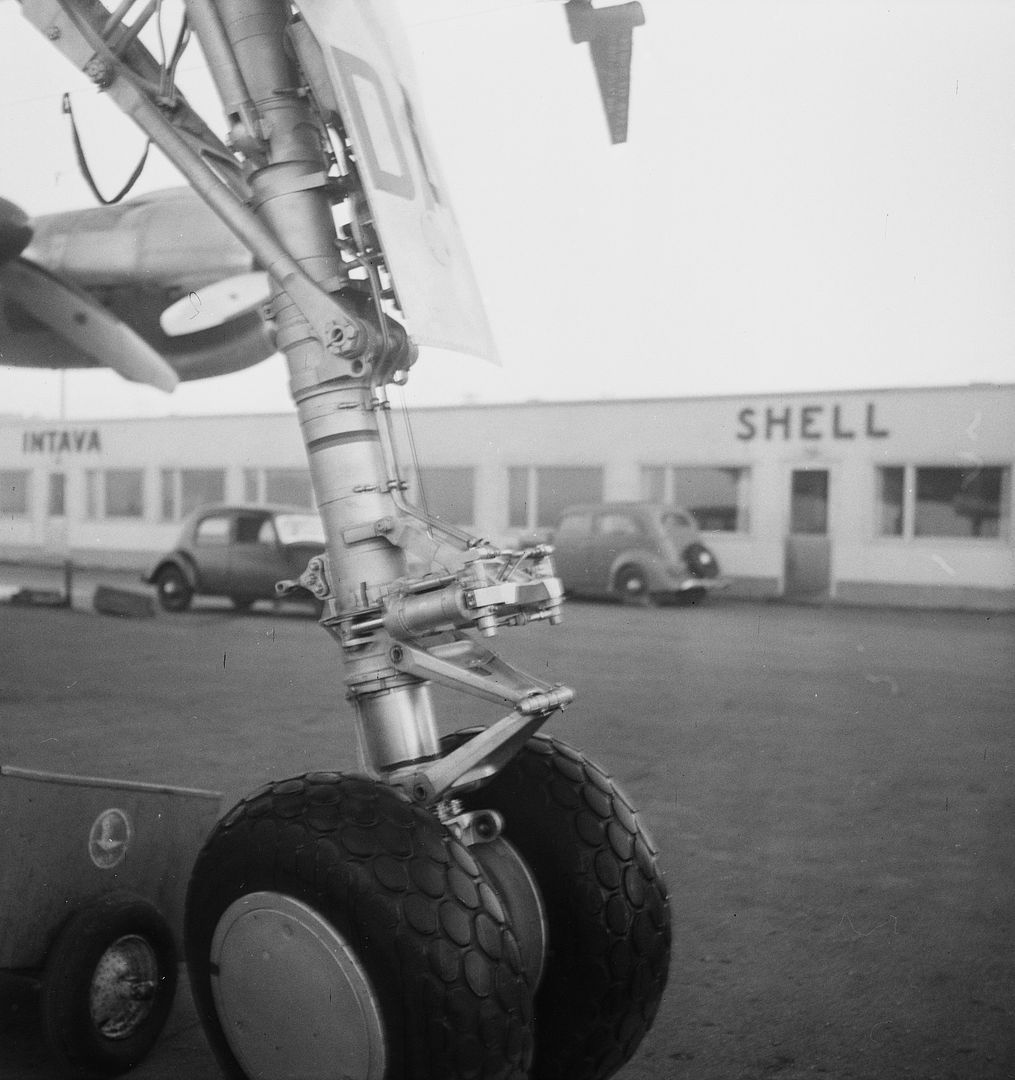

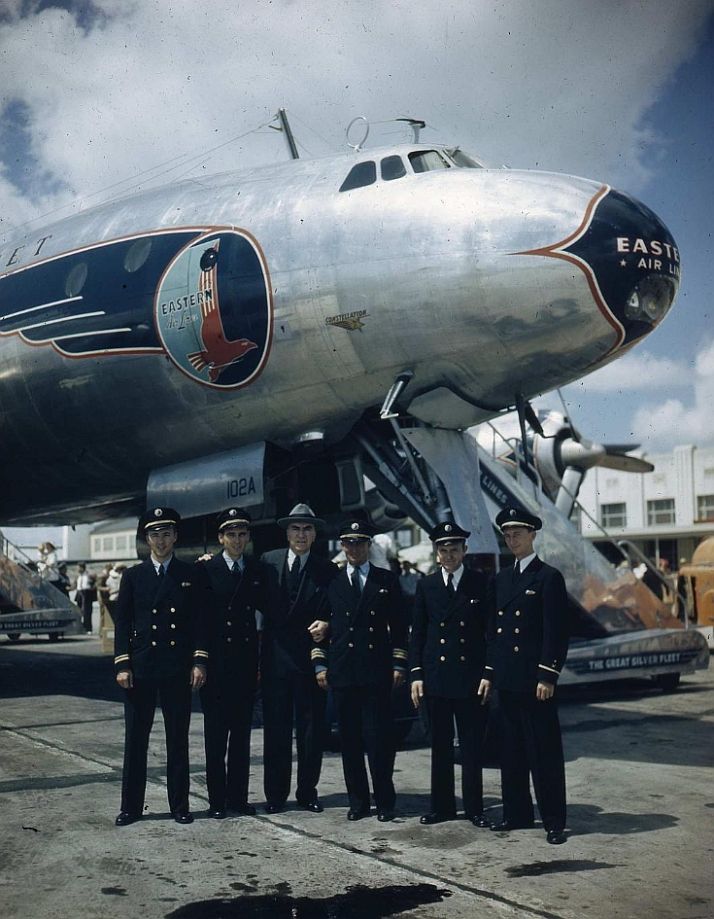
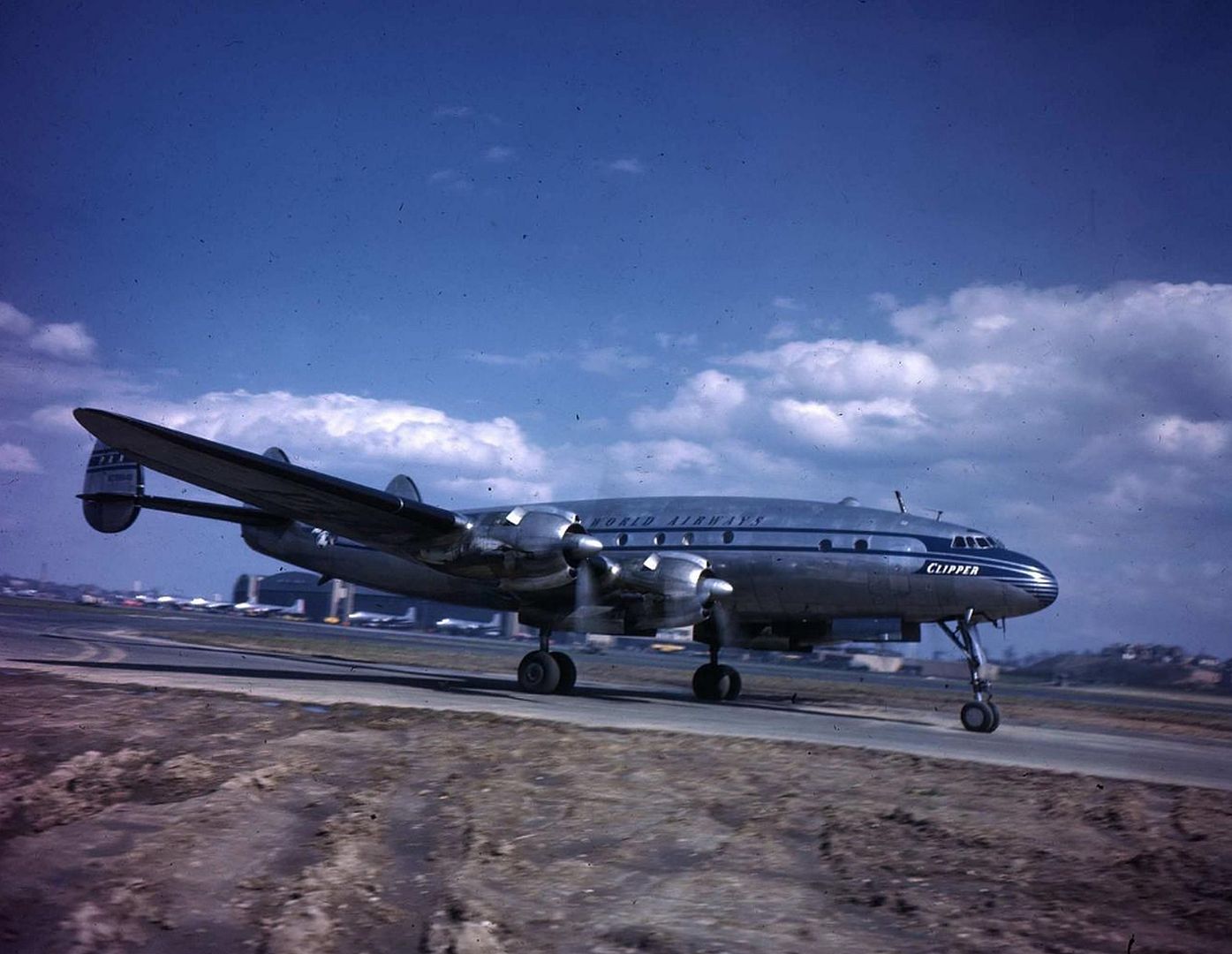
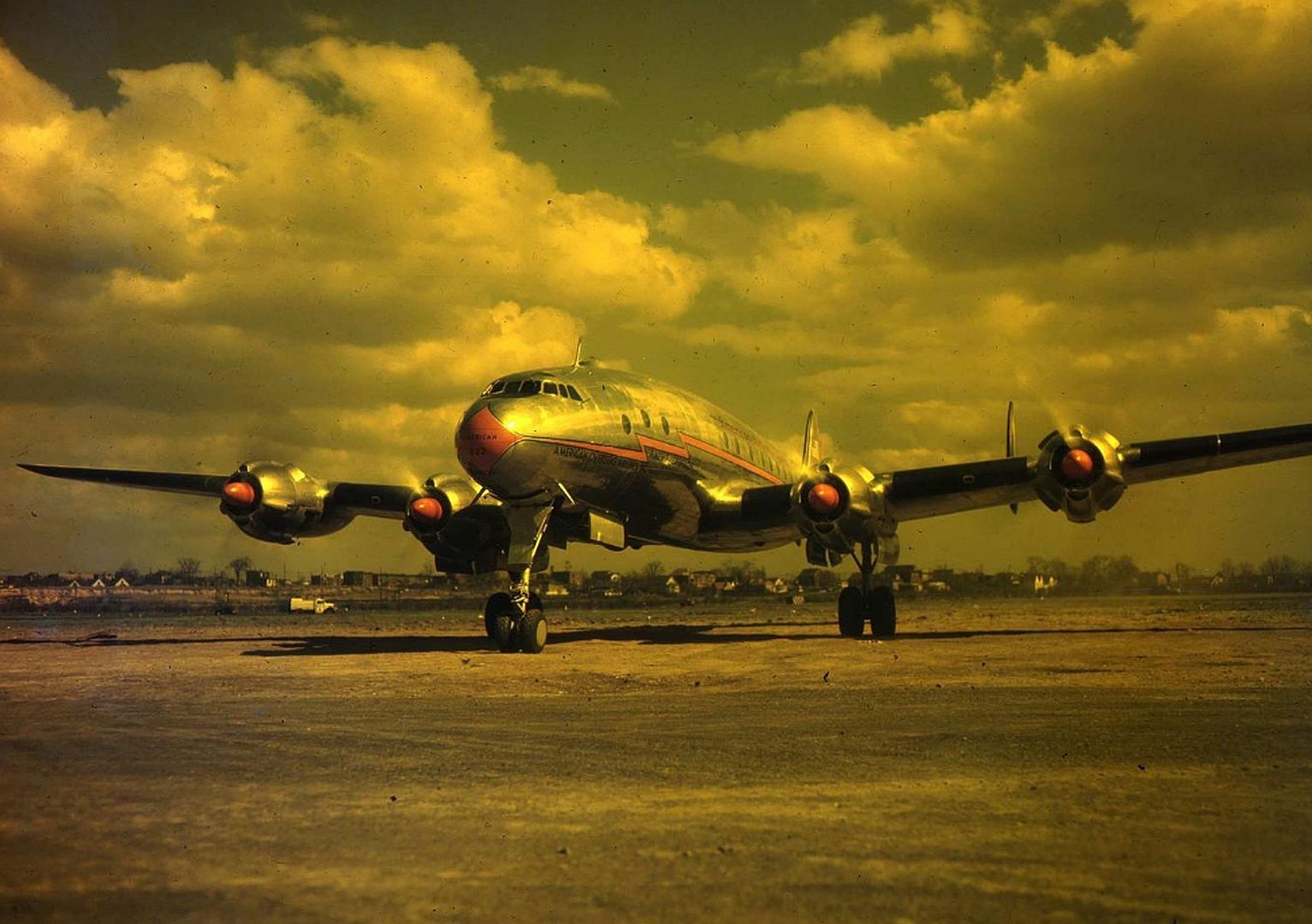

MODEL 649 & 749 CONSTELLATIONS
The Model 49 Constellation was an immature design, suffering from engine fires and propeller failures. On 11 July 1946, a TWA training flight out of Reading, Pennsylvania crashed, five of the six crew being killed; a six-week grounding followed, with over 95 changes made to the Constellation to get it back into the air.
The grounding didn't slow down the Constellation much, with the "Model 649" introduced in October 1946. The primary change was fit of Wright R-3350-BD1 Duplex Cyclones with 1,865 kw (2,500 HP each), permitting a further increase in MTO to 42,640 kilograms (94,000 pounds). The engines drove new reversible-pitch props, which shortened landing roll. Passenger accommodations and fittings were re-thought, with climate control brought up to proper spec, and noise levels reduced considerably.
The Model 649 was such an improvement over the Model 049 that it became known as the "Gold Plate Connie". Late production Model 649s -- and all subsequent standard Connies -- could be fitted with an optional "Speedpack" cargo module under the belly to boost the cargo load for short- and medium-range flights. The Speedpack was developed at the request of Eastern airlines, and was tested on a C-69; it could be loaded with up to 3,765 kilograms (8,300 pounds) of cargo. It looked something like an oversized bathtub, being snugged up against the belly using an electric winch system, and had sets of semi-recessed twin wheels fore and aft for rolling around on the tarmac. It caused no problems with flight handling, and cut top speed by only 19 KPH (12 MPH).
Eastern was the only buyer of new-build Model 649s, obtaining a total of 14 machines. TWA had been forced to cancel orders due to a strike, and there were no other buyers. Lockheed, faced with stiff competition from the Douglas DC-6, quickly came out with the "Model 749" -- which was much like the Model 649, but had additional fuel tanks in the outer wings, providing an increase in fuel capacity of 5,895 liters (1,555 US gallons) -- for a total fuel capacity of 23,670 liters (6,245 US gallons). That permitted a range increase of 1,600 kilometers (1,000 miles). MTO weight was raised to 46,260 kilograms (102,000 pounds). Engines remained the same as with the Model 649, though late-production aircraft had engines with "jet exhausts" that provided an increment of speed, if at the cost of increased noise.
Many of the airlines that had ordered the Model 649 upgraded their orders to the Model 749. 60 were built, with Lockheed retaining one for company use, the buyers of the others being KLM (13), TWA (12), Air France (9), Eastern (7), Aerlinte Eireann Teoranta of Ireland (5), Pan Am (4), QANTAS (4), Air India (3), and LAV (2).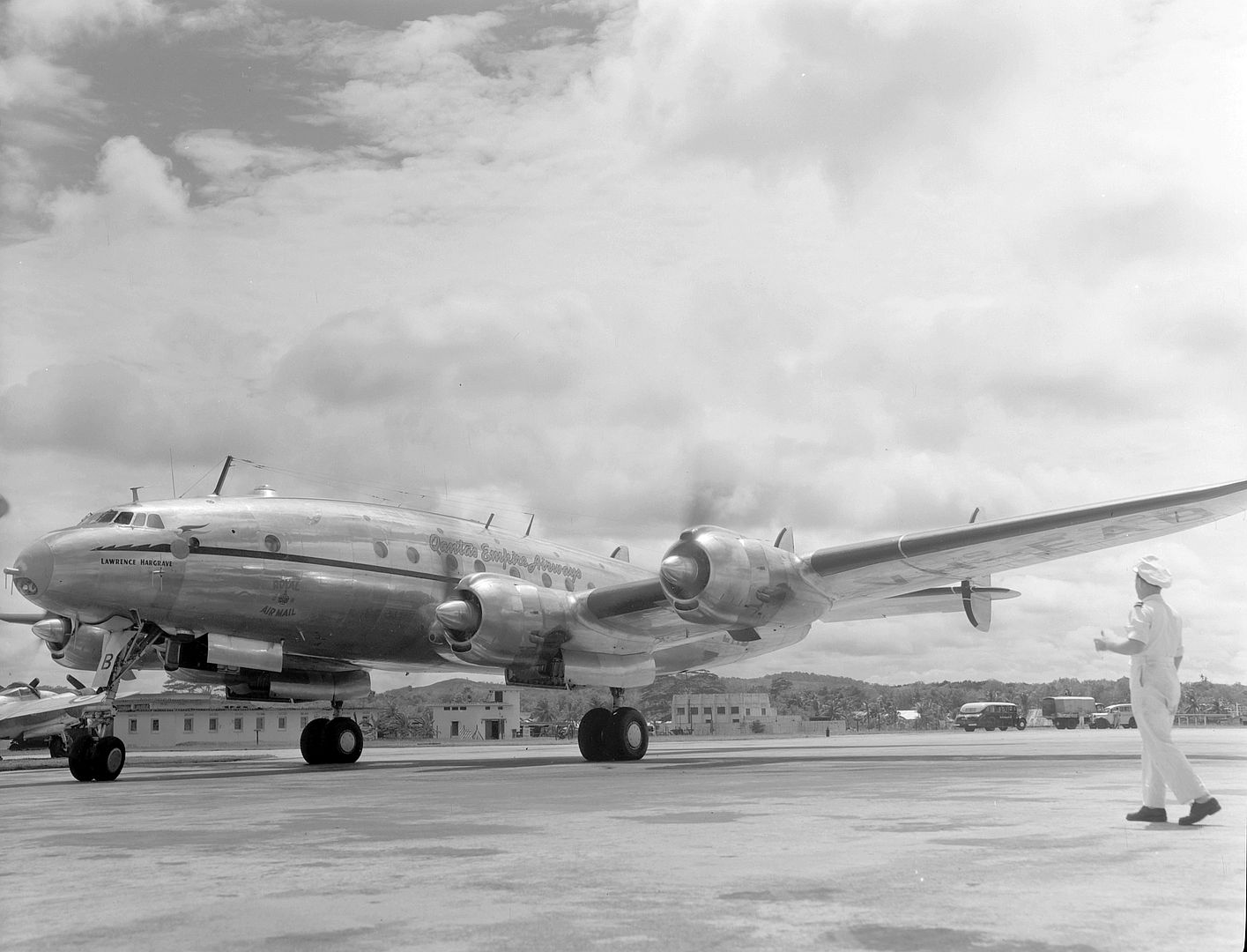

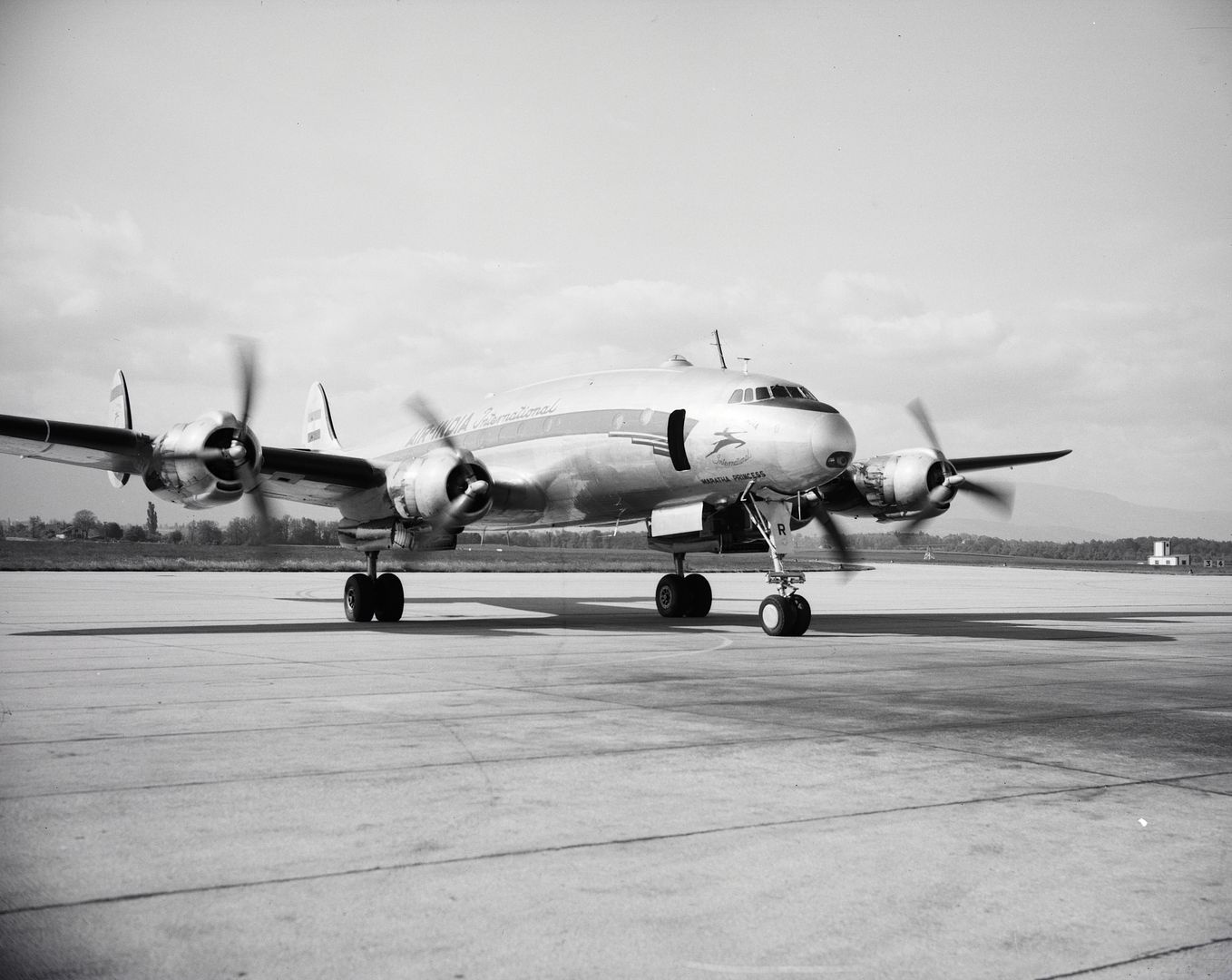
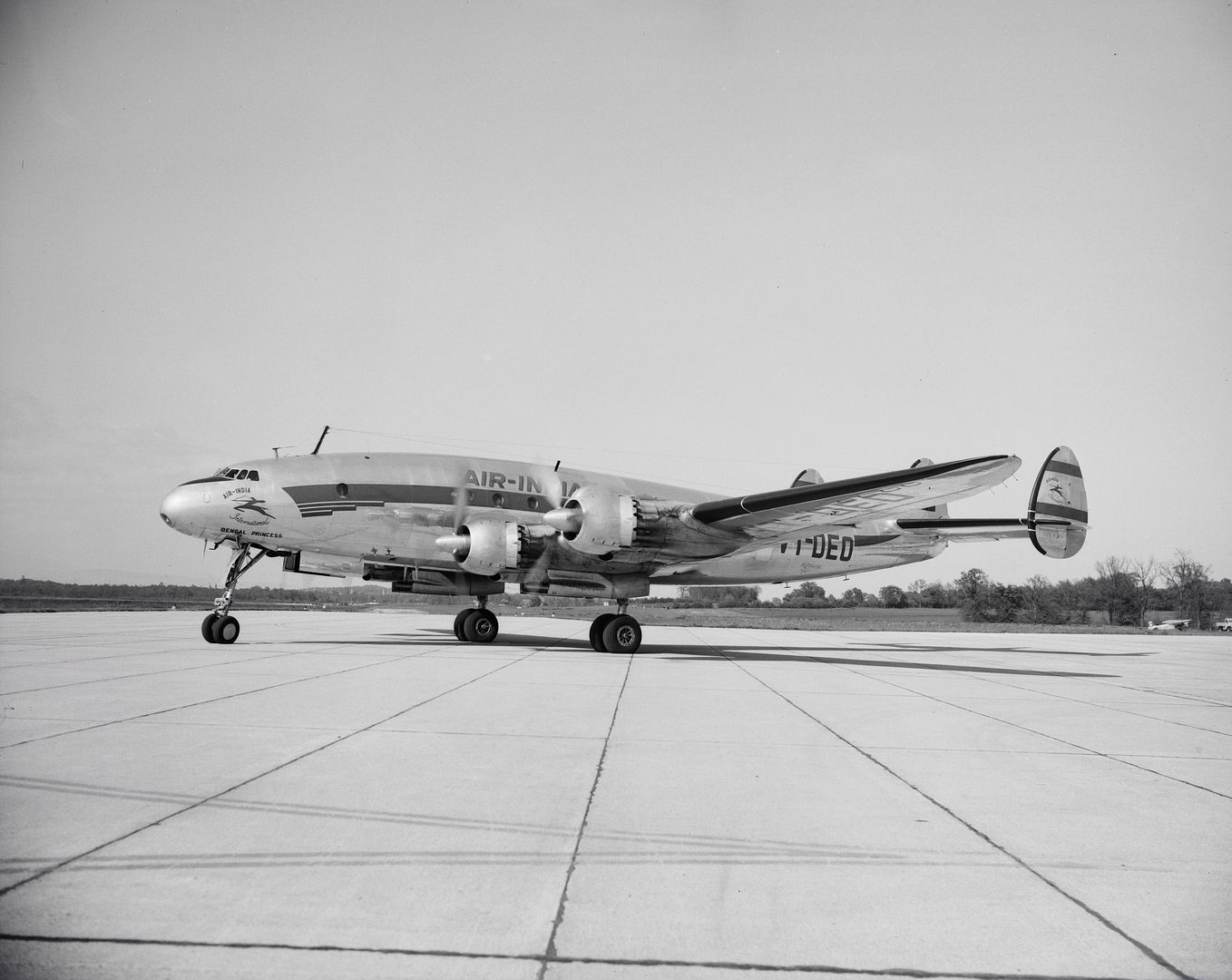
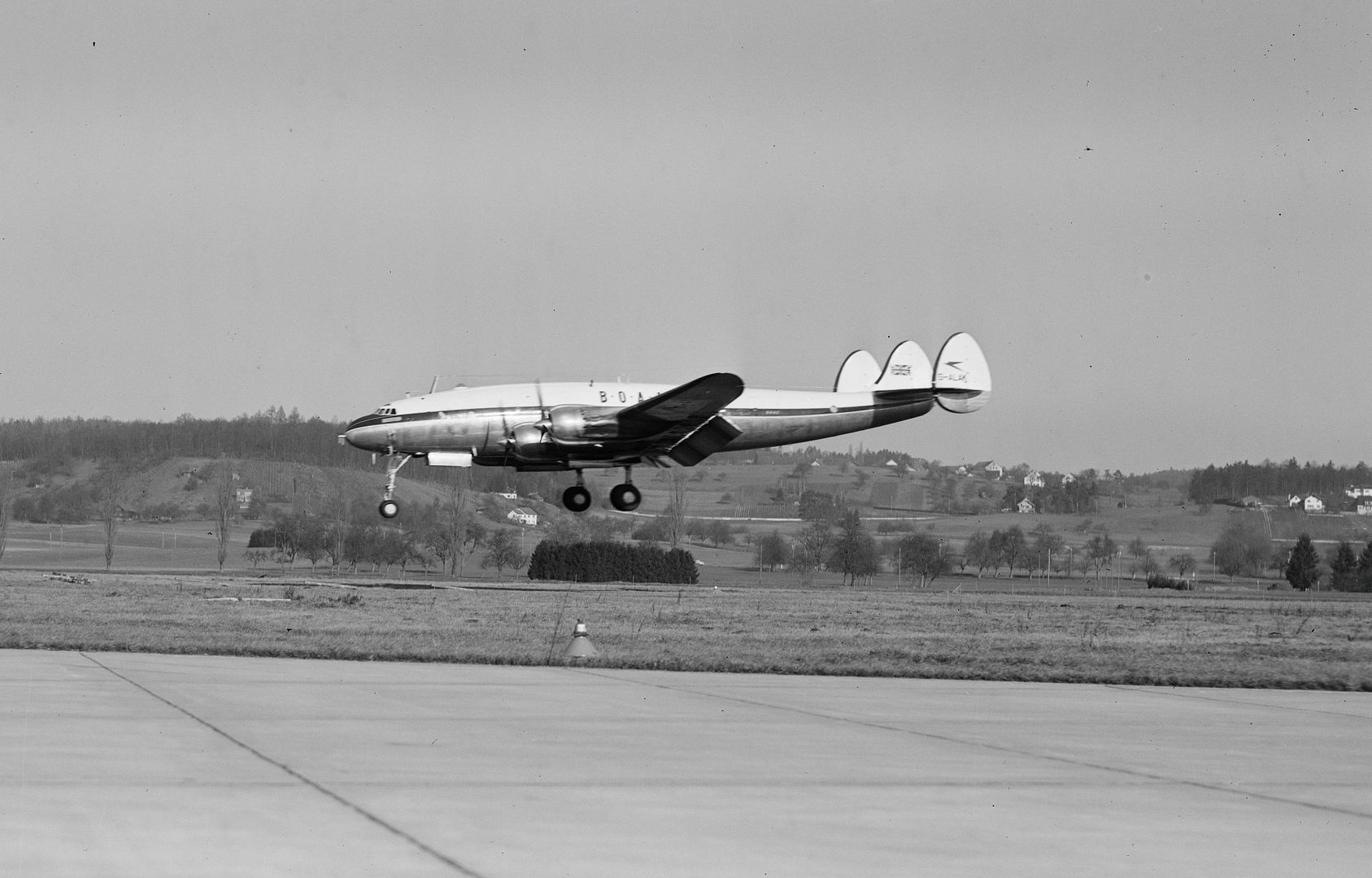


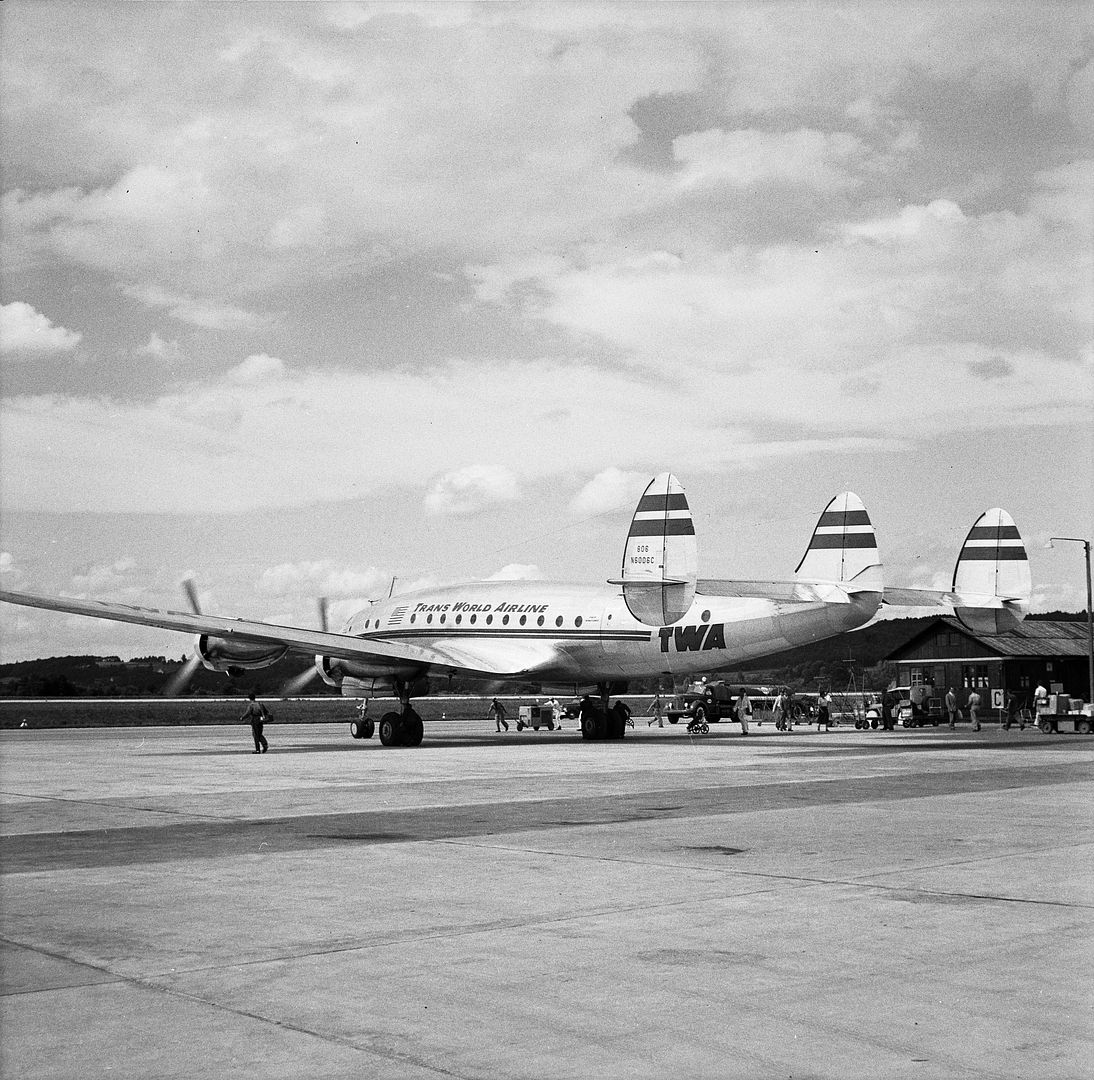

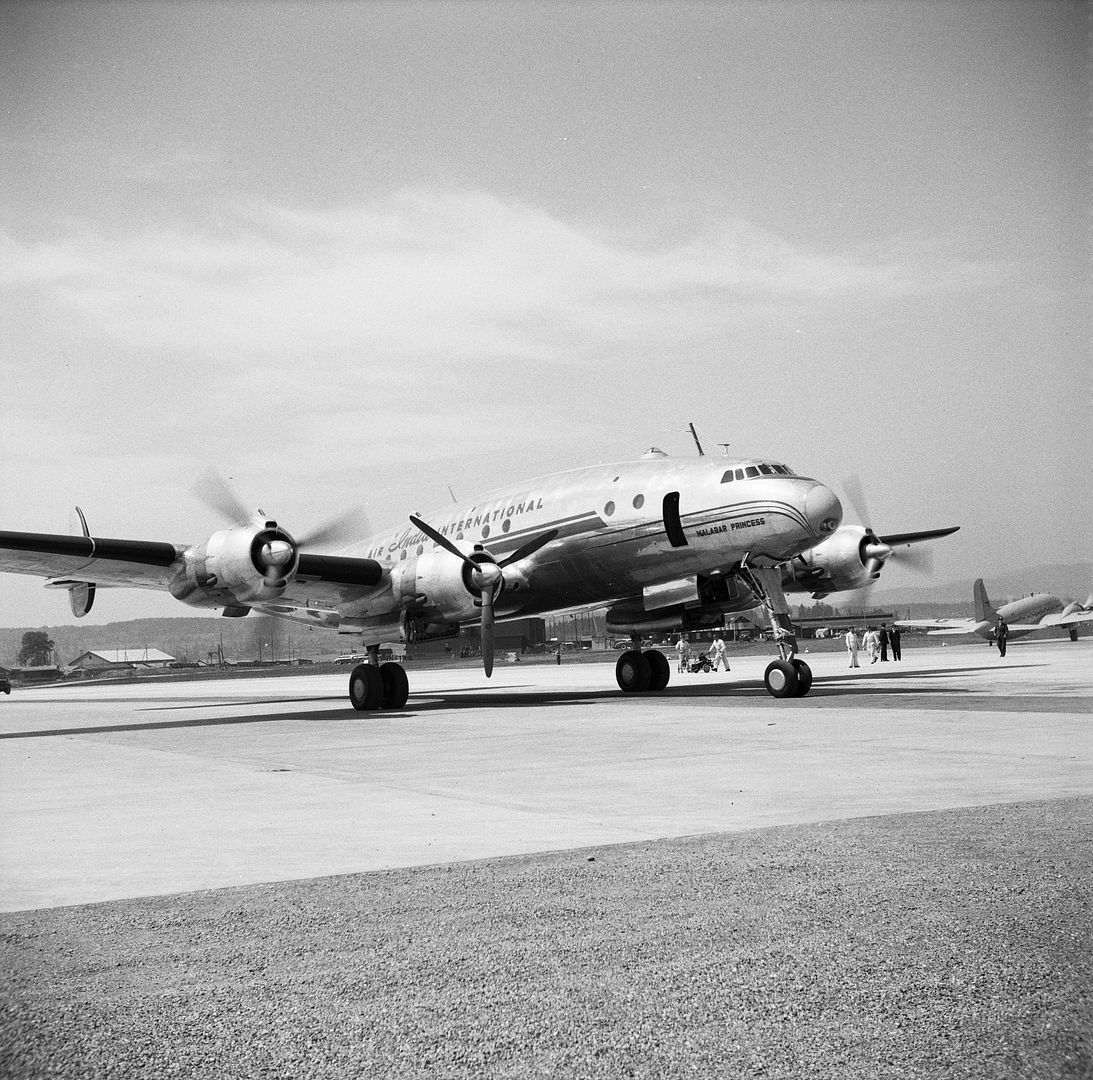
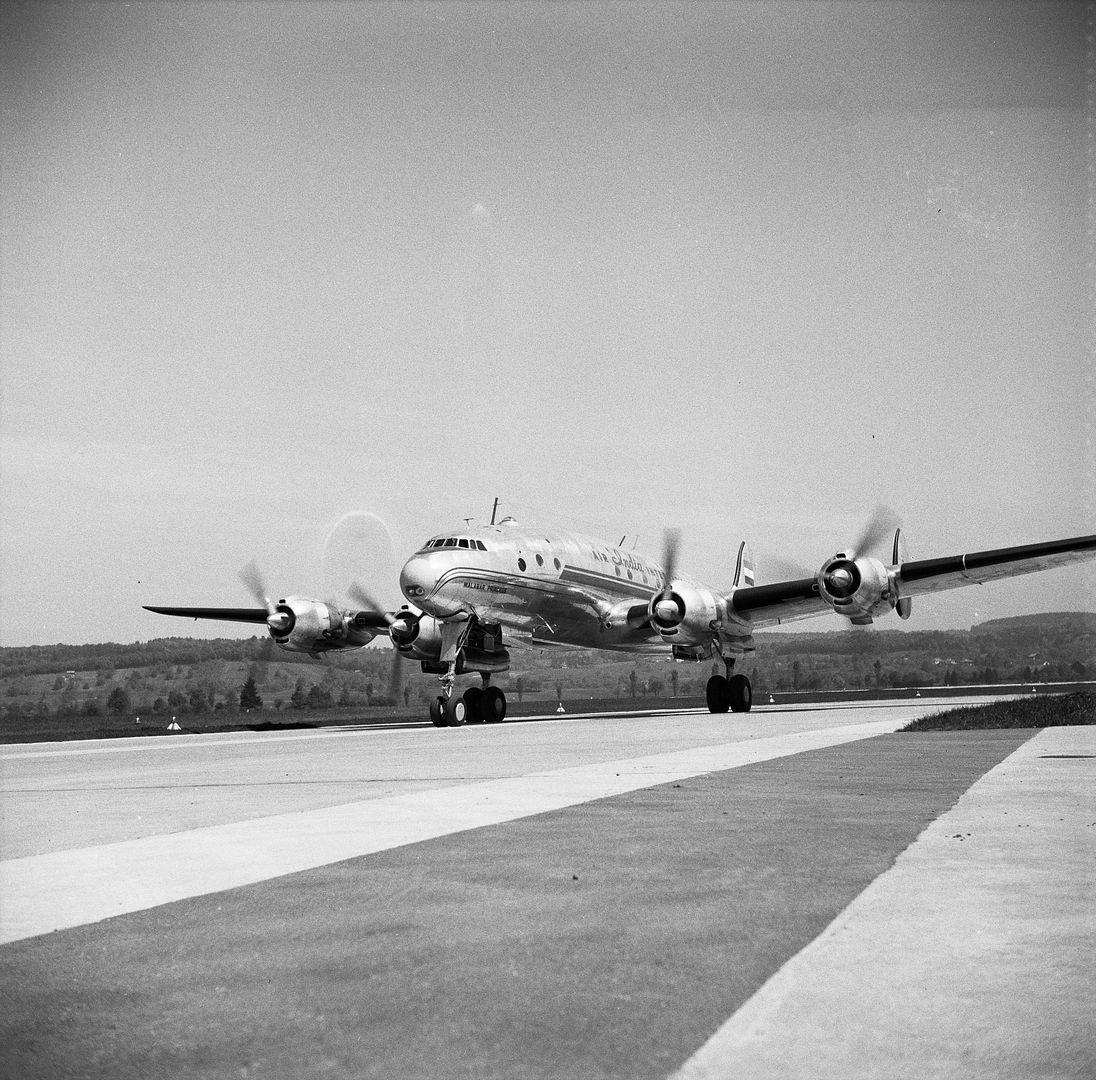
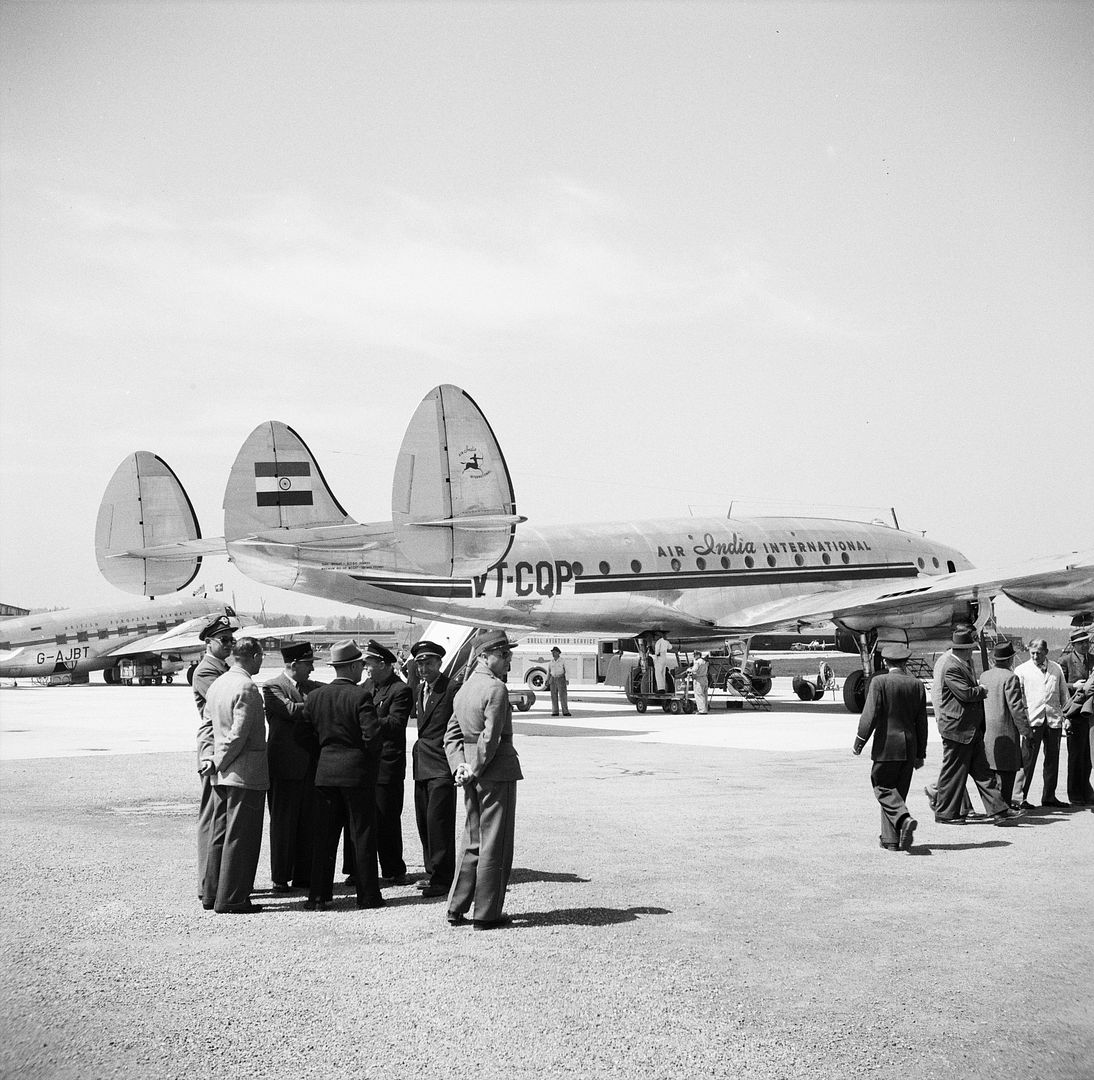
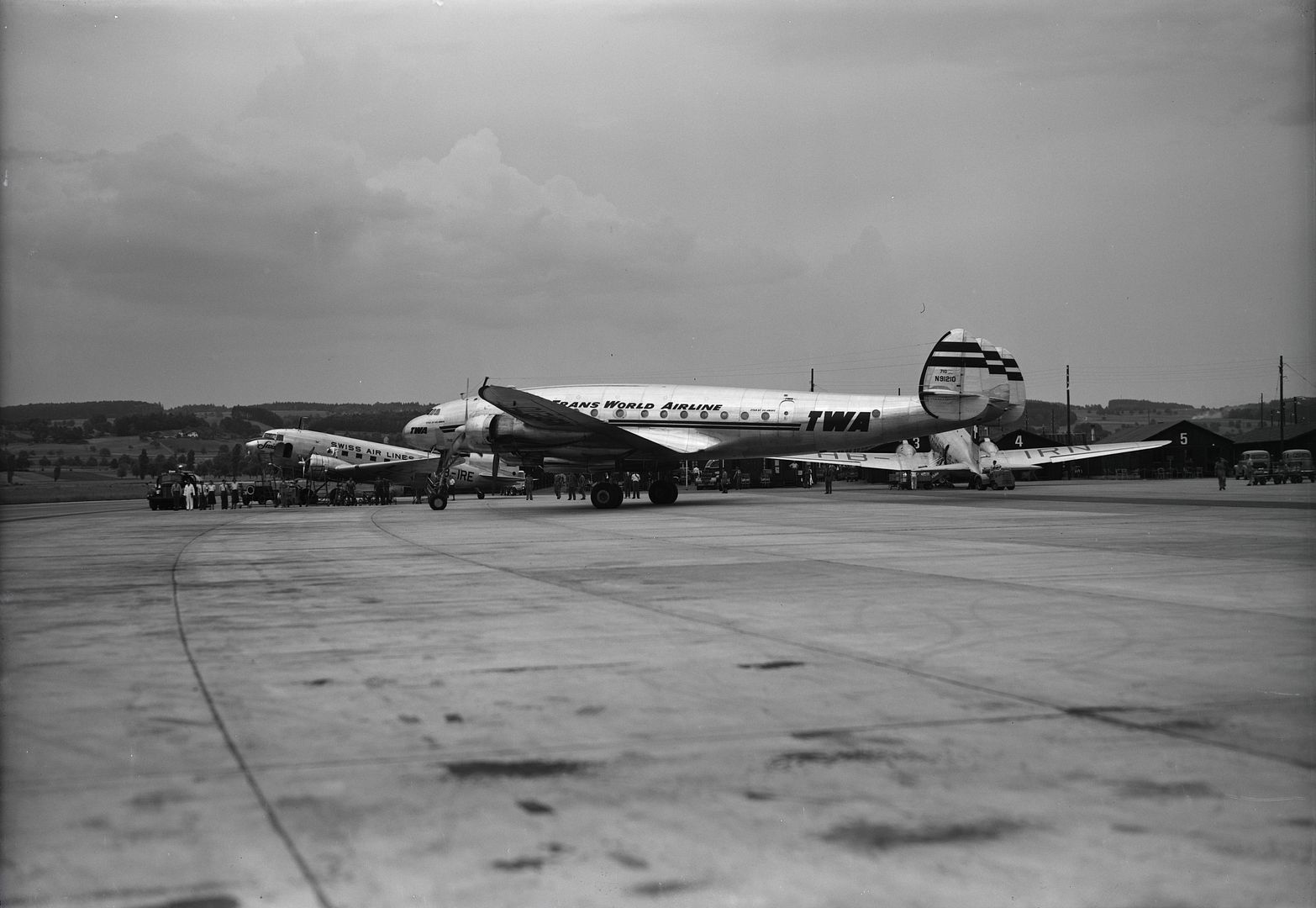

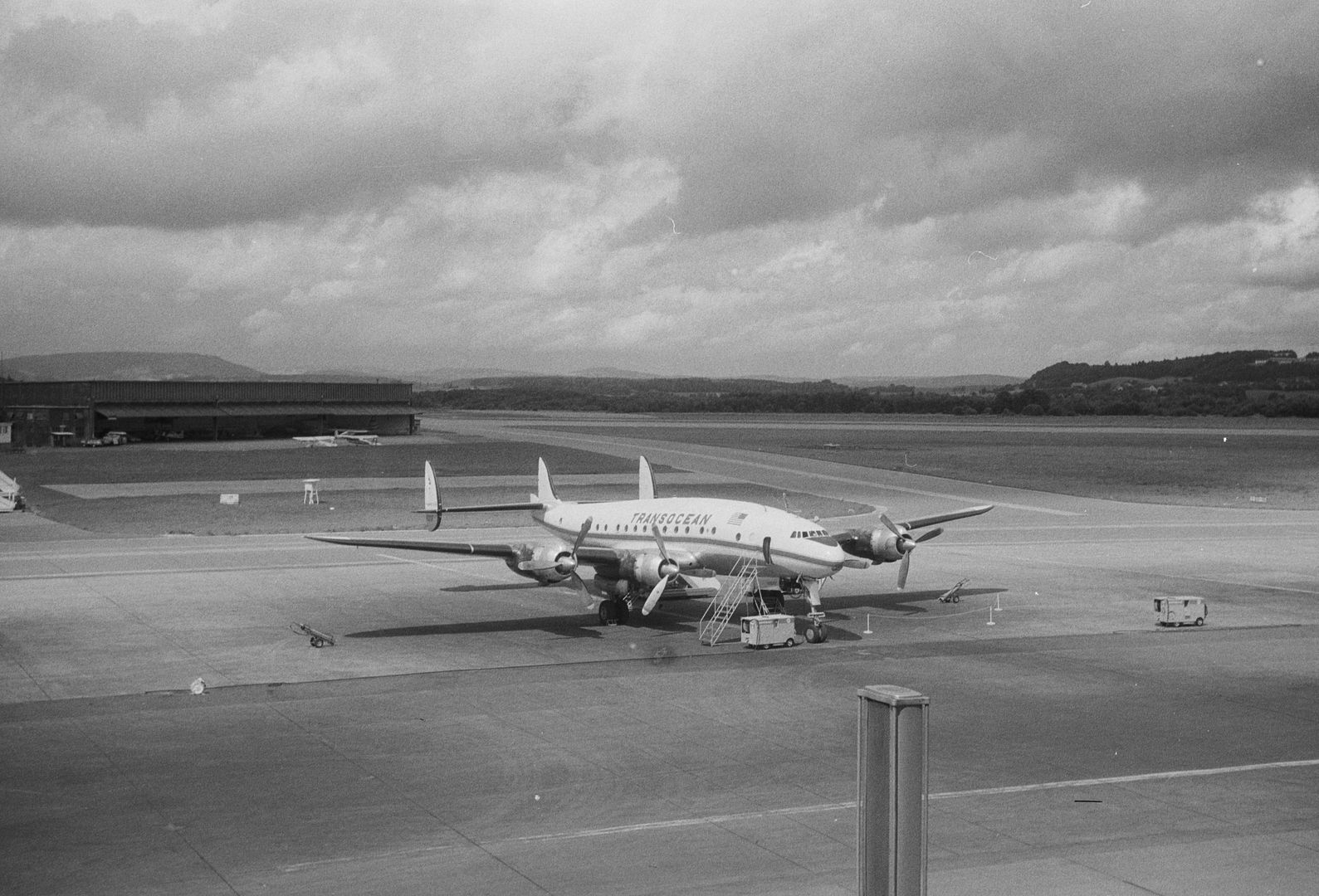
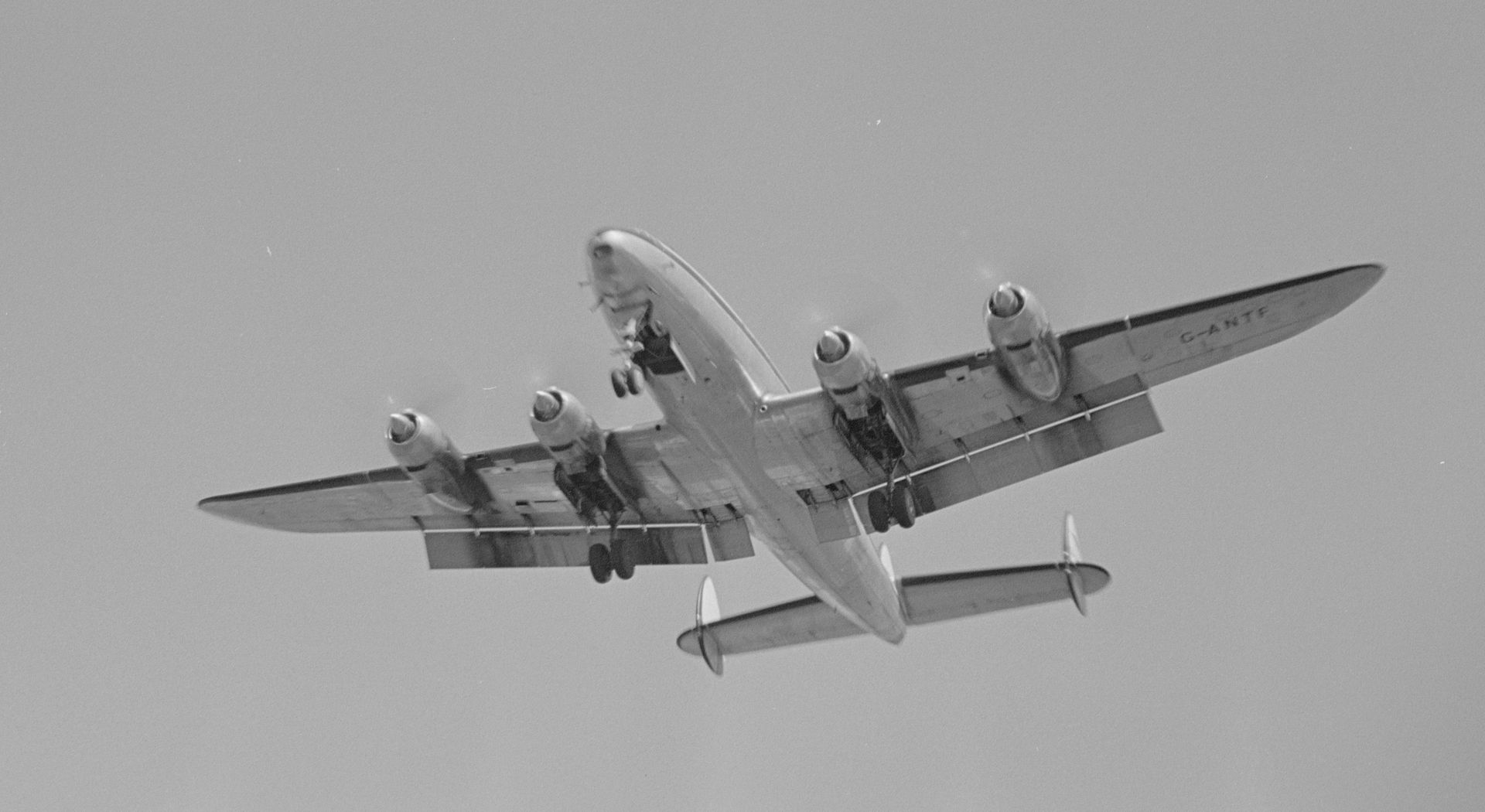

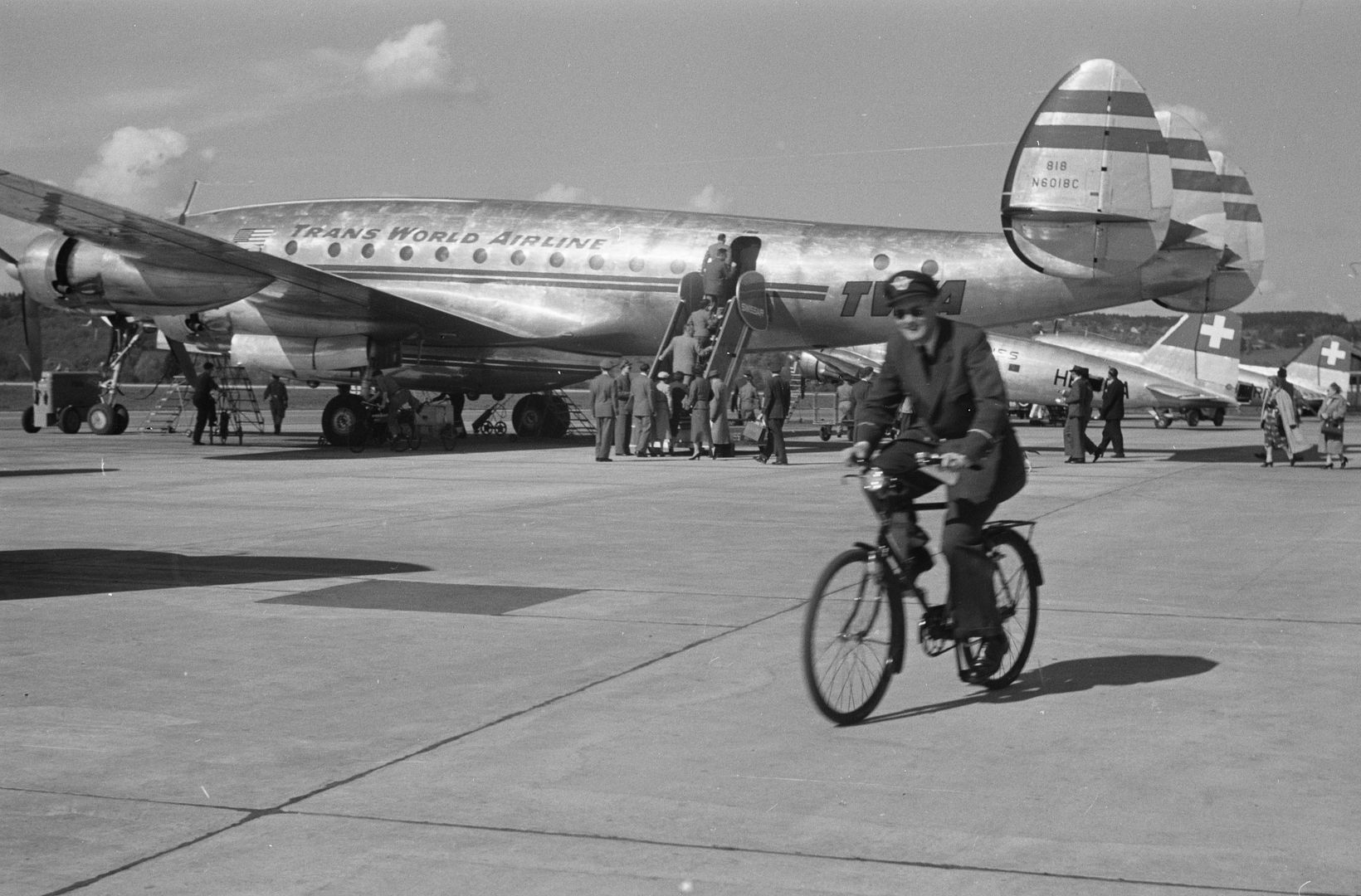

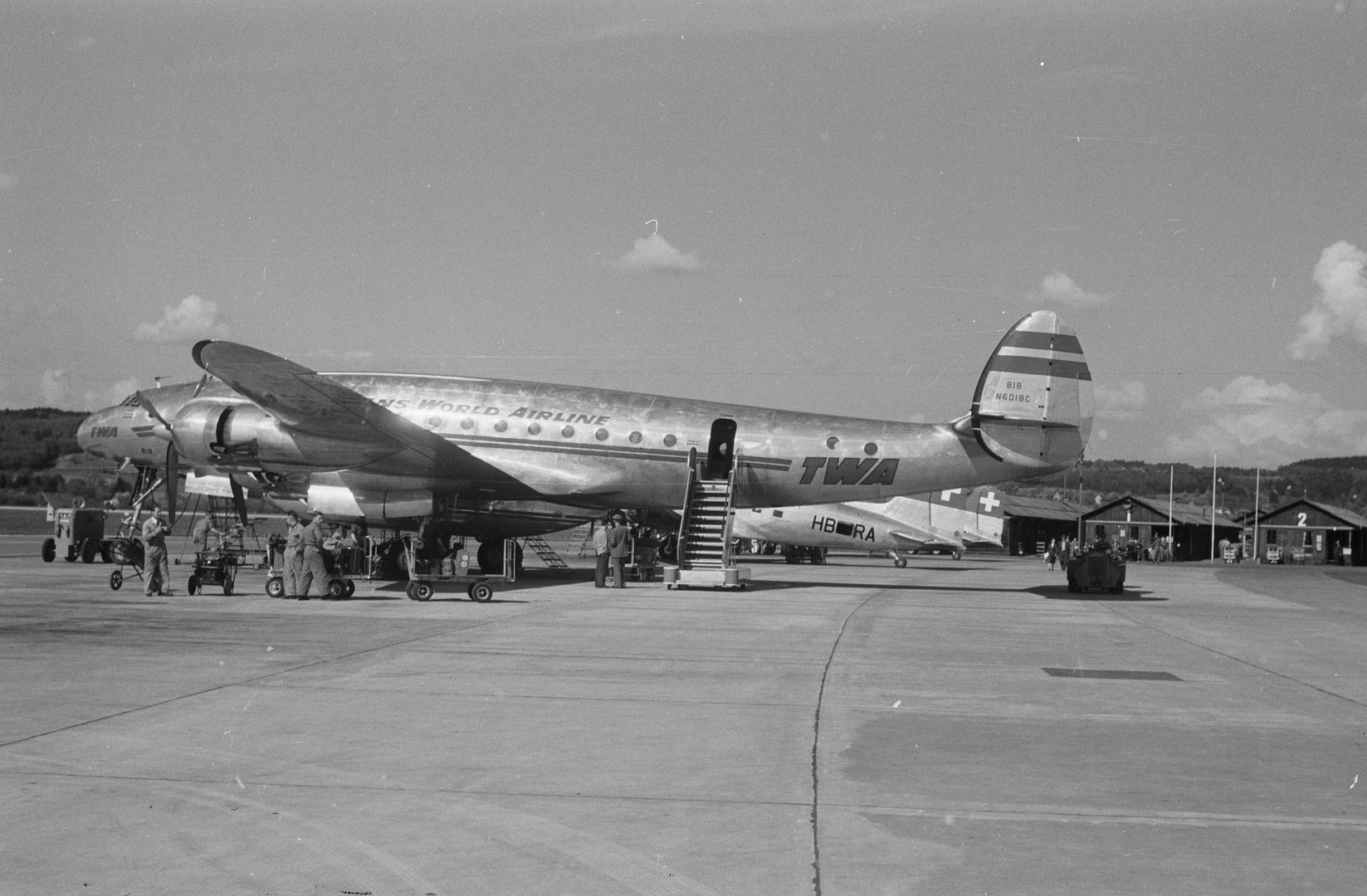
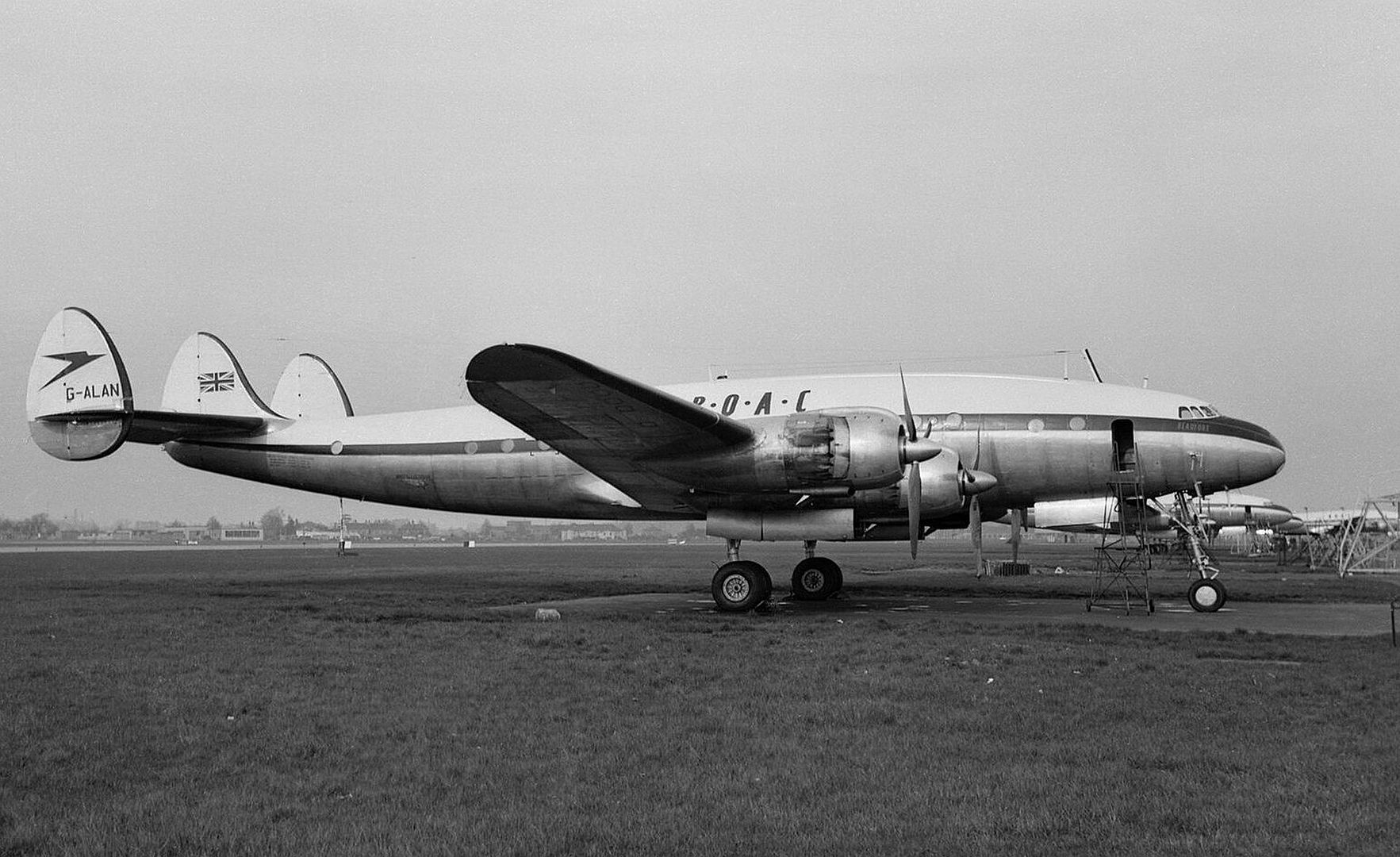

The baseline Model 749 was followed by the "Model 749A", which featured Curtiss paddle-blade propellers, and structural reinforcement for operation at higher MTO, raised to 48,525 kilograms (107,000 pounds). Although Constellation sales went dangerously soft for a time, the program was saved by the purchase of ten Model 749As to the US Air Force -- the USAF having become an independent service in 1947 -- under the designation of "C-121", and two to the Navy with the designation of "PO-1W". It is a minor puzzle as to why the Air Force chose to give the designation of "C-121", instead of assigning them a designation in the "C-69" sequence; possibly USAF brass wanted to reassure Congress that the service was obtaining a "new" aircraft, and not buying an update of the C-69, which hadn't worked out well in service.
Nine of the USAF machines were "C-121As", which were combination passenger-cargo machines, a configuration later given the name "combi", with a reinforced floor and an upward-hinging cargo door on the left rear fuselage. Along with cargo, they could haul 44 seated passengers, or 20 litters with medical attendants. Initially, they flew in natural metal colors, but were later painted white on top to keep them from heating up, with selective high-visibility orange markings added later. They saw extensive service during the Berlin Airlift of 1948:1949 -- not flying into and out of Berlin, instead on the trans-Atlantic support route. Incidentally, Lockheed offered a combi version of the 749A to civil buyers, but got no takers.
The other C-121 -- actually, the first to be delivered -- was produced as a VIP transport. It was expedited on the presumption that Tom Dewey was going to win the 1948 presidential election, and that it would become his presidential VIP transport. Harry Truman scored a legendary upset victory over Dewey, with Truman preferring to stay with his DC-6, named INDEPENDENCE. The C-121B still remained a VIP transport, being used by high government officials.
The nine C-121As were quickly converted to VIP transports as well, becoming "VC-121As" -- the C-121B was similarly redesignated "VC-121B", with six of the VC-121As being upgraded to become VC-121Bs as well. One VC-121A was used by General Dwight Eisenhower from late 1950 into mid-1952 as a personal transport, supporting his role as supreme military commander in Europe; the machine was named COLUMBINE, after the state flower of Colorado, where his wife Mame was from. When Eisenhower became president in 1953, he also used a VC-121A for a time, which was of course named COLUMBINE II. General Douglas MacArthur also used a VC-121A, named BATAAN, during his short stint as supreme commander during the Korean War.
After more modern VIP transports were introduced, the VC-121s mostly reverted to C-121s for cargo hauling, to be generally sold off to civil users in the late 1960s. MacArthur's VC-121A ended up in utility use for the US National Aeronautics & Space Administration (NASA).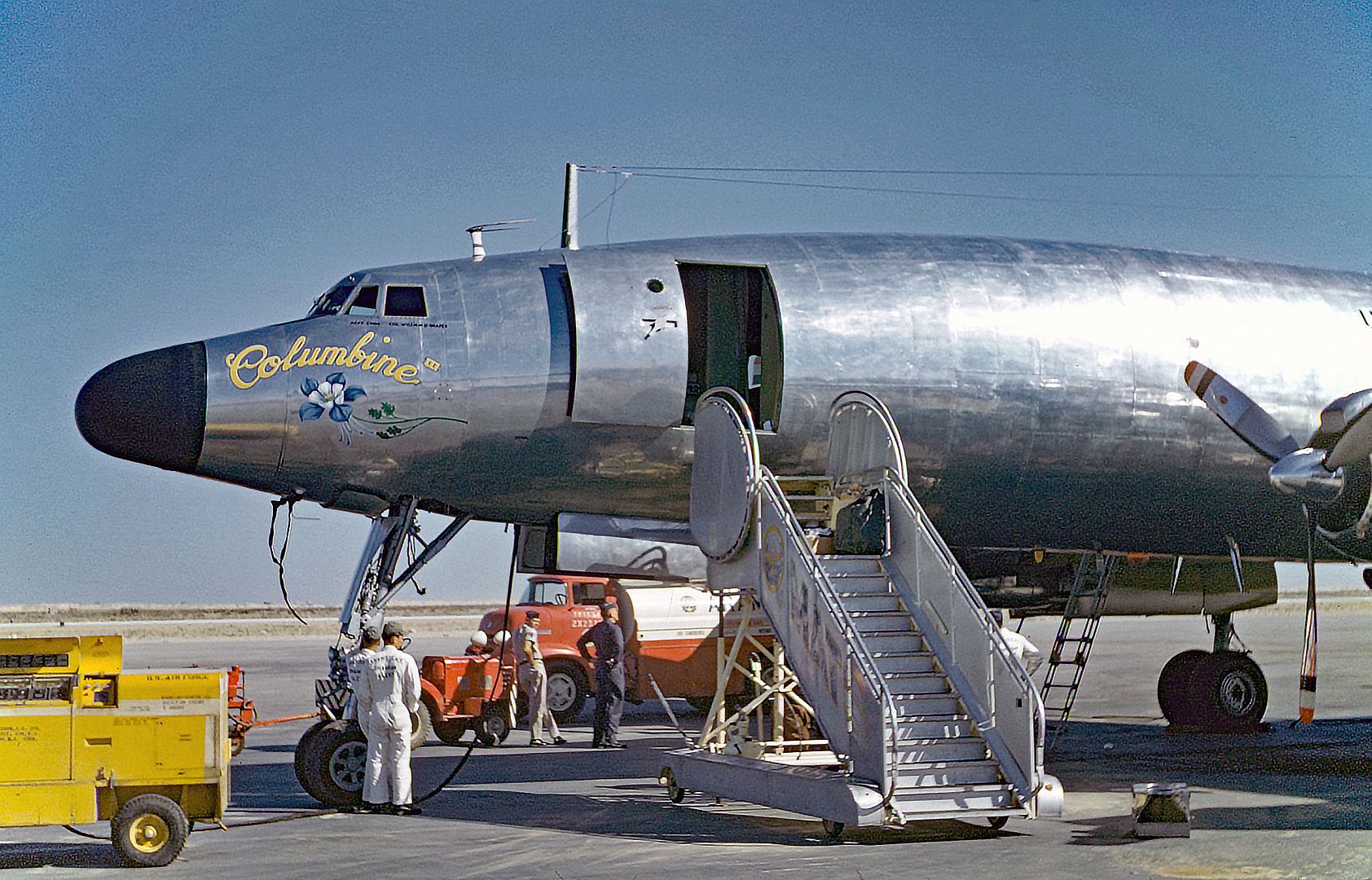
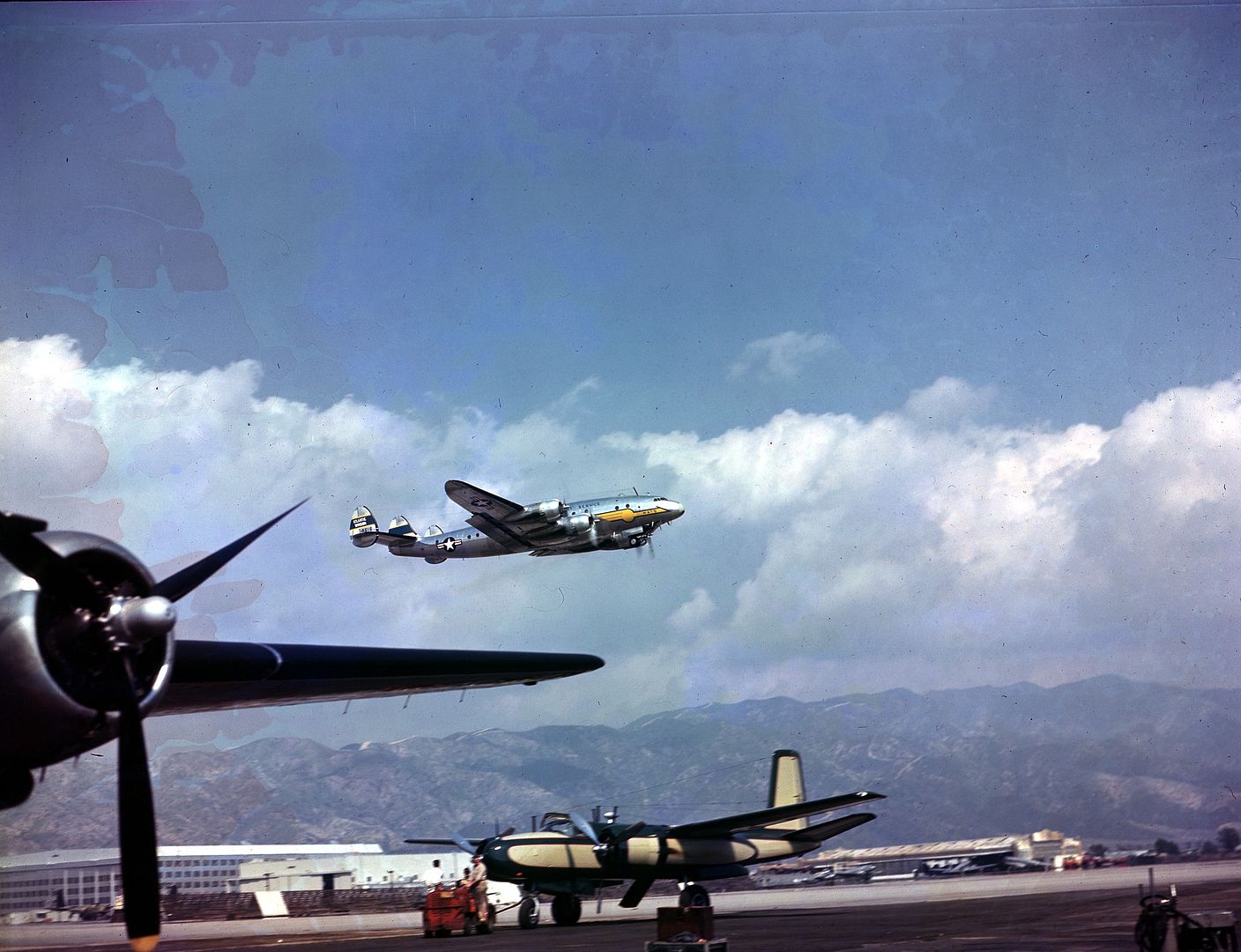

The two Navy PO-1W machines were strictly trial military radar platforms -- the mission would be later called "airborne early warning (AEW)" -- though they did retain the cargo door; first flight was in June 1949. The designation letters stood for "Patrol", (somehow) "Lockheed", and (radar) "Warning". They were, of course, nicknamed "Po' Ones", with crews being know as "Po' Boys".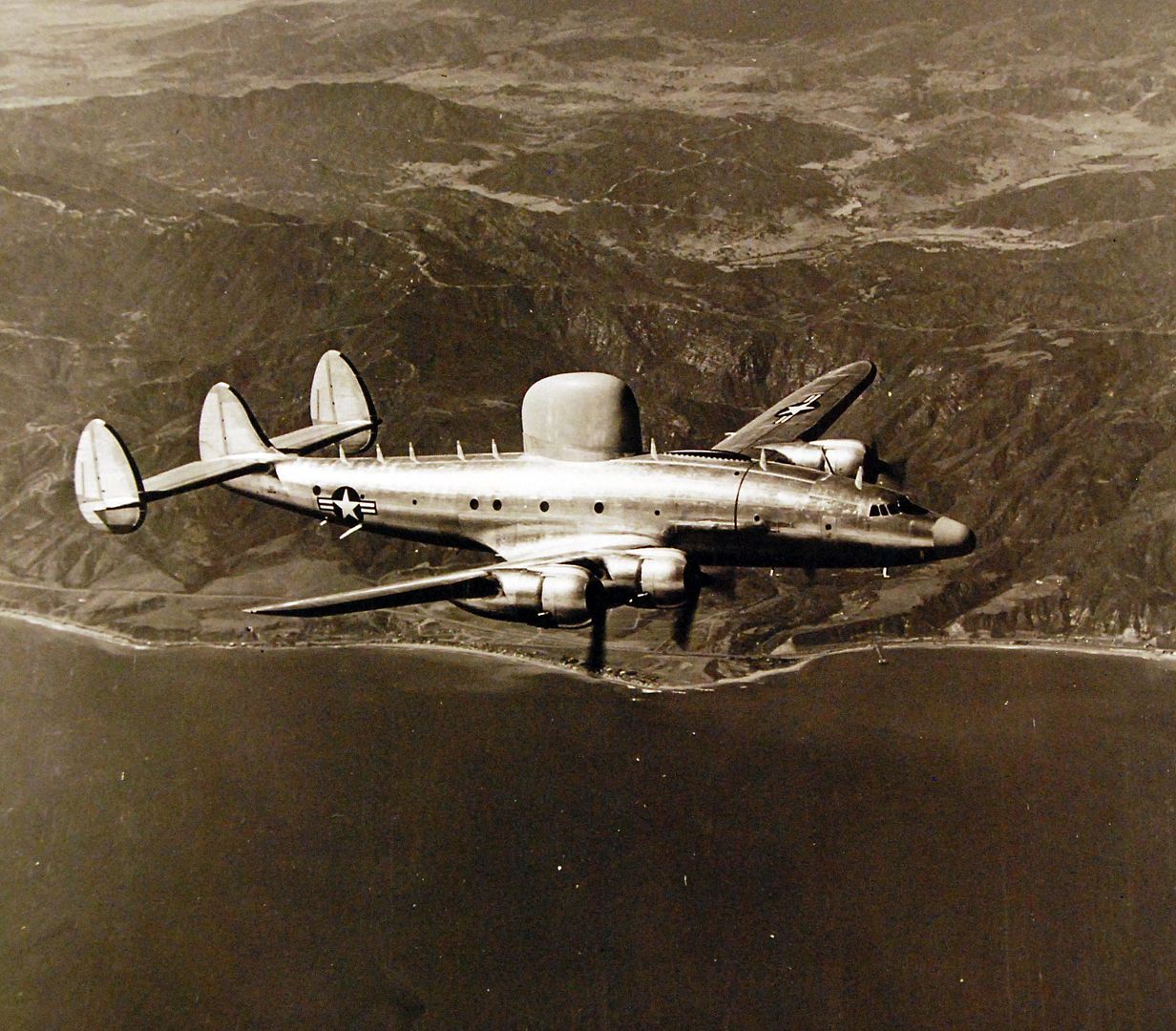
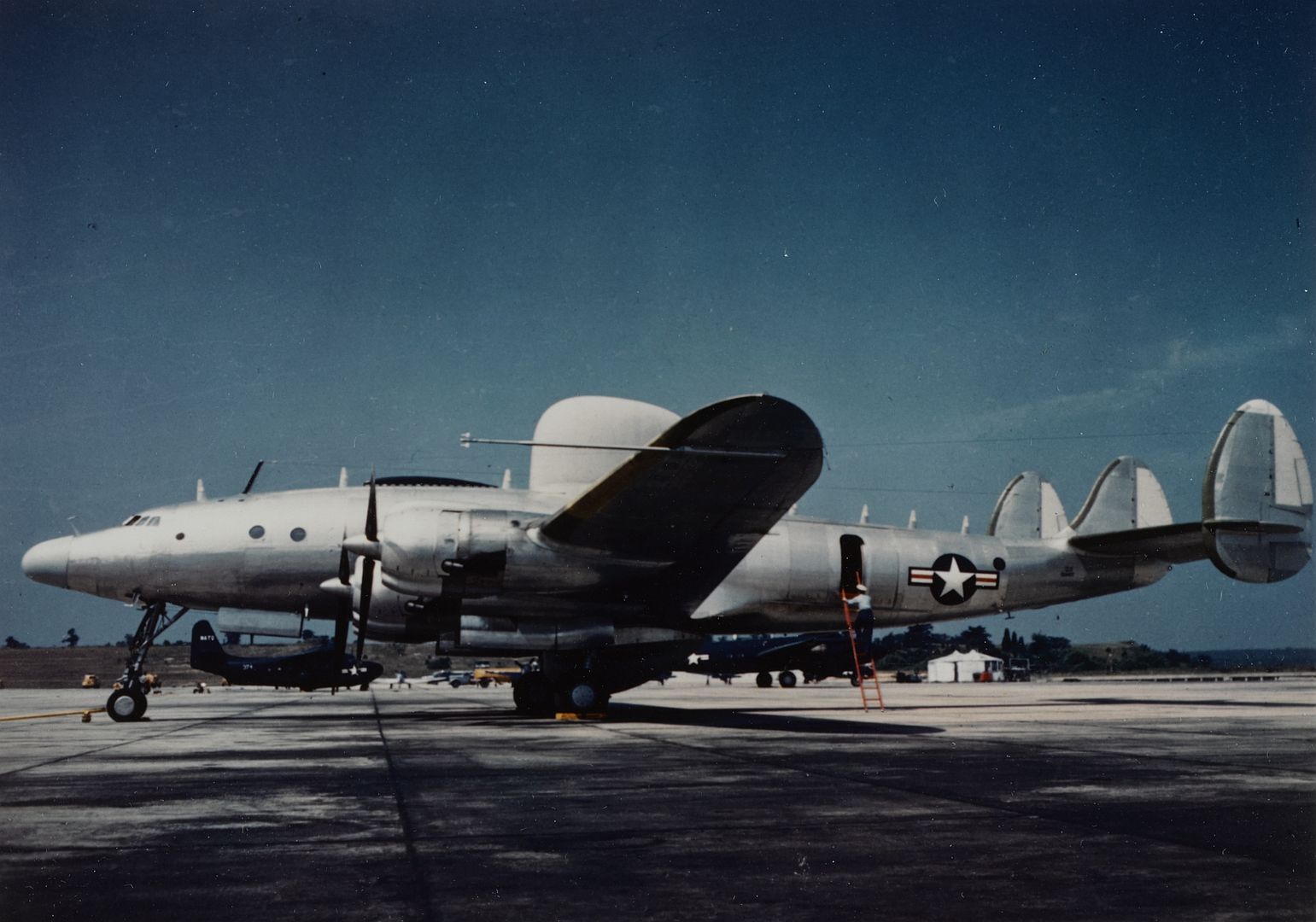
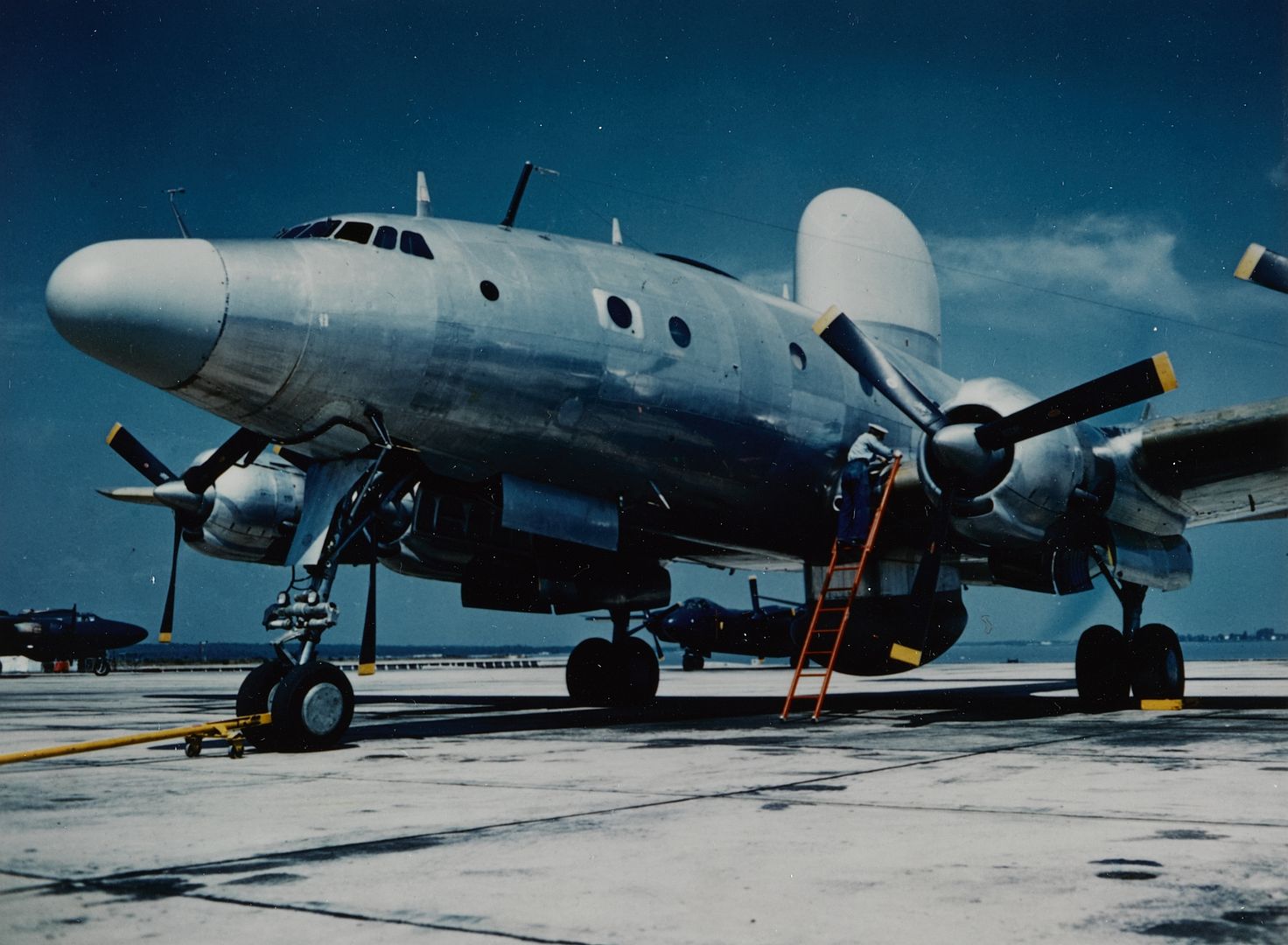
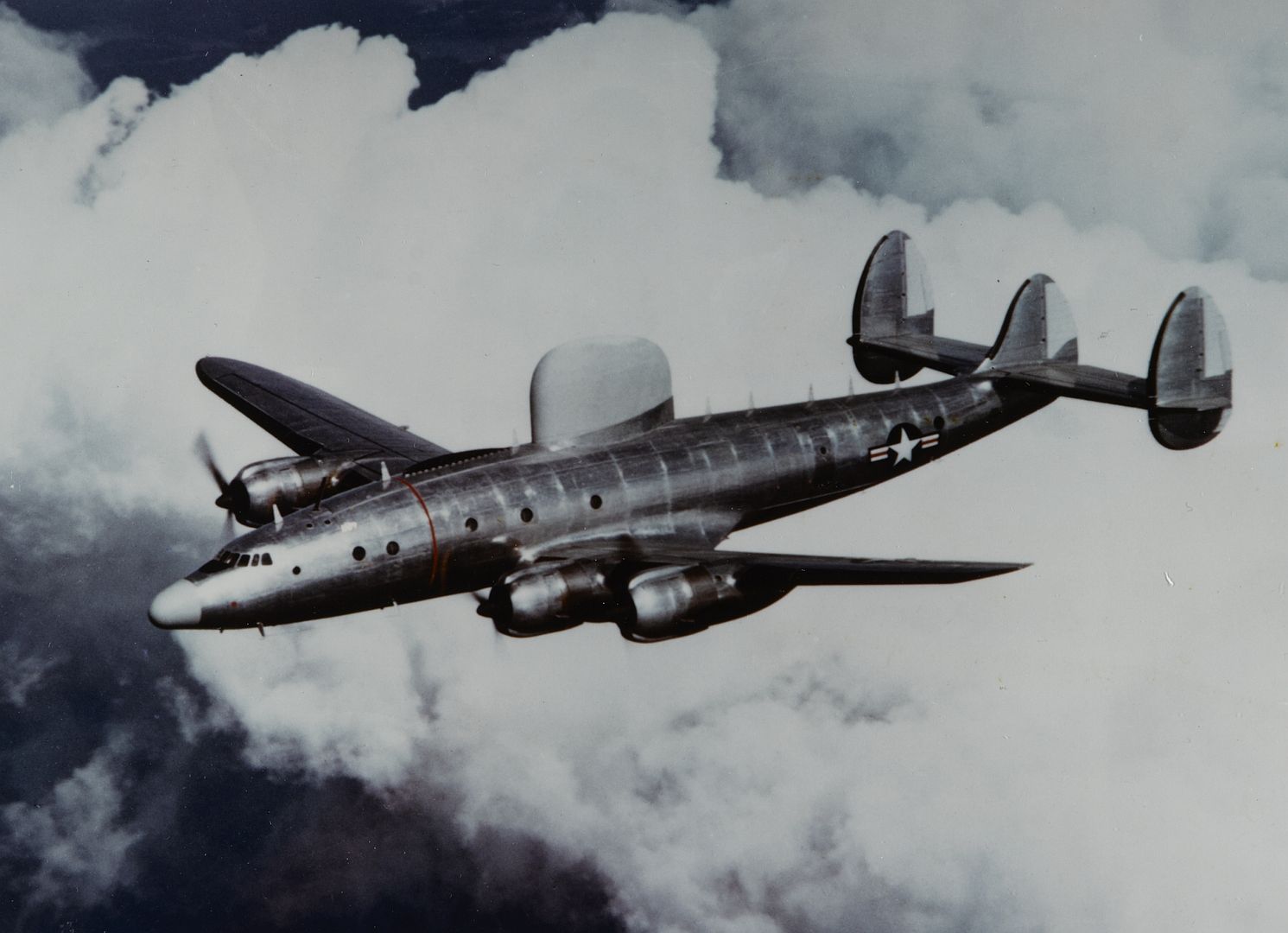
In 1952, the designation was changed to "WV-1", with the letters standing for (again) "Warning" and (somehow) "Lockheed"; they would be nicknamed "Willie Victors". In any case, they had a two-dimensional search radar in a belly radome and a height-finding radar in an elongated dome on the top of the aircraft, as well as a litter of other antennas. They also had weather radar in the nose, extending the Constellation's length by about 90 centimeters (3 feet). The weather radar would become common in later Constellation production, and arguably enhanced the Constellation's already good looks.
The WV-1s had a crew of 31, most of them being systems operators, with bunks and a galley to support the crew on long patrols. To compensate for the aerodynamic instabilities introduced by the radomes, the WV-1s had enlarged outer tailfins -- the tailfins being raised in height by adding a "splice" above and below the tailplane. The WV-1s were eventually stripped of their radomes and warning radar gear, to be used by the US Federal Aviation Agency as support aircraft, and eventually end up in the hands of the Air Force, which may have used them for clandestine surveillance activities. They were retired in the late 1960s.
A total of 59 L-749As was sold to airlines, the big buyers being Airlines that bought the type from Lockheed included TWA, Pan Am, Eastern, TWA (26) and Air France (10), with smaller purchases by KLM (7), Chicago & Southern (6), QANTAS, Air India (4), South African (4), and Avianca of Colombia (2). A total of 131 749/749A Constellations, including the 12 military aircraft and one retained by Lockheed for company use, was built up to end of production in 1951. Some sources give 132 L-749s, but it's hard to figure out where that extra machine went.
The type was highly regarded by airlines, in fact sometimes preferred by operators over later Constellation variants. Some L-749s were updated to L-749A configuration, while some L-649s were updated to a "near L-749A" configuration as "Model 649As", with most or all of these updates later updated to full L-749A configuration.
After their first-line service, many of these machines were converted to air freighter configuration, some even being used as crop sprayers. One L-749 ended up in the hands of the French ENSA aeronautical university, being used for trials of turboprops and de-icing gear -- a turboprop being mounted on a pylon above the fuselage. It made its first flight in as a testbed in 1963, to be finally retired to the French Musee de l'Air in 1980.
Seven ex-Air France L-749As were acquired by SGAC, the French civil aviation directorate, in the for use as maritime search and rescue machines, with observation windows, along with the ability to drop life rafts and rescue kit. They were retired in 1970. Another ex-Air France L-749A was used by the president of Senegal, Leopold Senghor, as a VIP transport through the 1960s. -
5 years agoFri Mar 11 2022, 12:41pmDuggy
 Main AdminMODEL 1049 SUPER CONSTELLATION / MODEL 1649A STARLINER
Main AdminMODEL 1049 SUPER CONSTELLATION / MODEL 1649A STARLINER
Lockheed continued development of the Constellation, resulting in the stretched "Model 1049". The first prototype of the L-1049, which was the original Constellation prototype rebuilt, performed its initial flight on 13 October 1950, with first flight of a production machine on 14 July 1951. The primary change was a stretch by 5.59 meters (18 feet 5 inches), thanks to fuselage plugs fore and aft of the wings. The taller outer tailfins used on the PO-1Ws were fitted to maintain yaw stability. The "Super Constellation", as it was known, also had:
Uprated Wright R-3350-CA1 Duplex Cyclones with 2,020 kW (2,700 HP) each.
An optional new fuel tank in the wing center section, bringing total fuel capacity to 24,824 liters (6,550 US gallons), increasing range by 800 kilometers (500 miles). MTO weight was raised to 54,400 kilograms (120,000 pounds).
Square windows, with rounded corners, instead of the smaller portholes of earlier variants. The cockpit windshield also had enlarged panels, giving more viewing area and more cockpit headroom.
"Integrally stiffened" wing panels, which were large wing panels fabricated out of single pieces of metal, reducing weight and rivets.
Improved de-icing and environmental systems.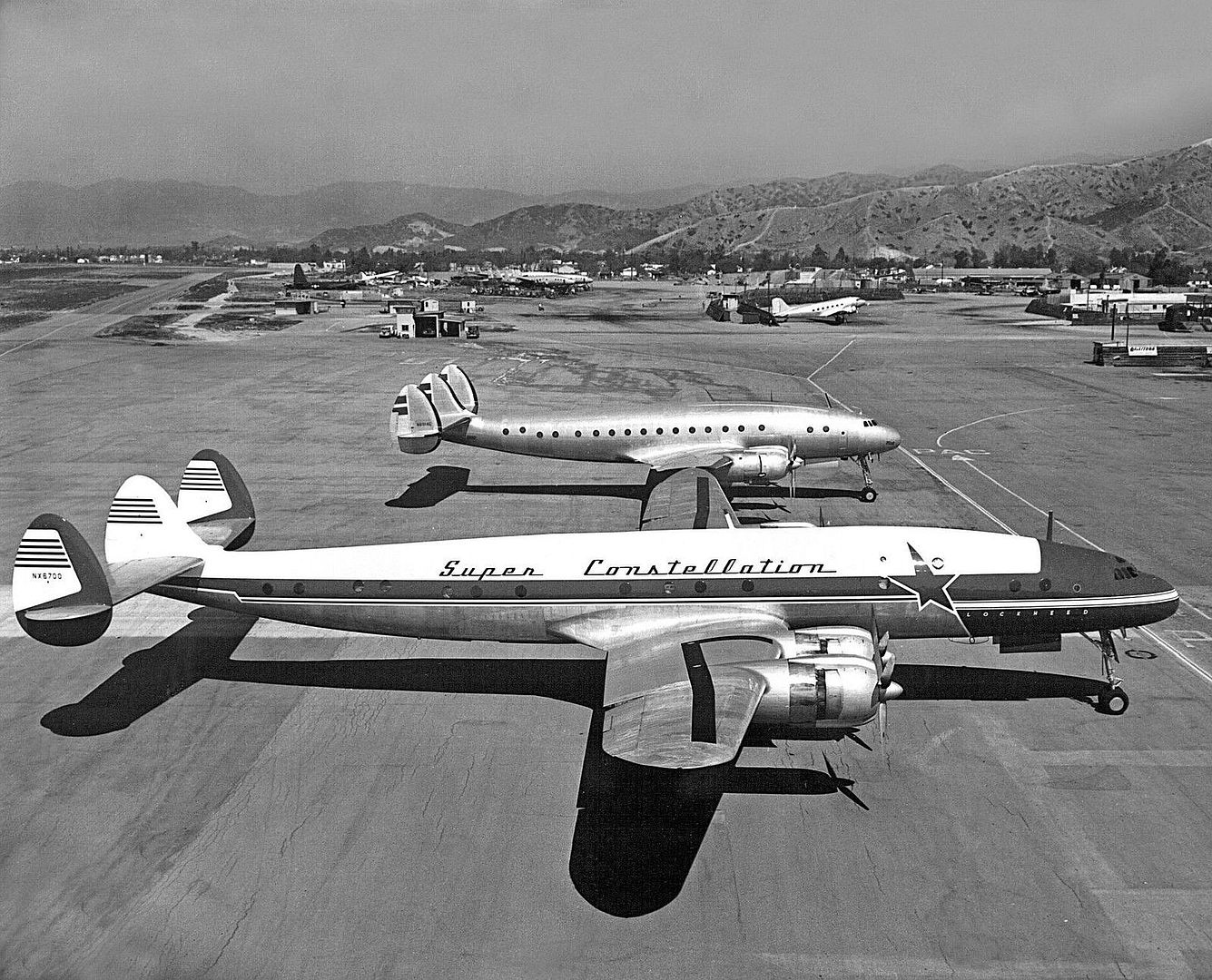
The baseline Model 1049 was underpowered, not quite a match for the latest DC-6s; it struggled to cruise at 480 KPH (300 MPH). Only 24 Model 1049s were sold, with 14 to Eastern and 10 to TWA, neither of them buying aircraft with the center-section fuel tank. TWA set up a transcontinental service with the in the fall of 1953; the airline asked for, and got, various refinements to the engine installation to incrementally improve cruise speed. Most or all the L-1049s were updated in service to improved Duplex Cyclones.
Lockheed had been expecting to power the Model 1049 with the Wright "Turbo-Compound" engine, which was effectively an improved Duplex Cyclone with triple turbochargers, each driven by the exhaust of six cylinders. Strictly speaking, they were actually "power recovery turbines (PRT)", since they didn't force compressed air back into the engine -- instead adding power to the driveshaft directly through hydraulic couplers.
Development of the Turbo-Compound had been delayed, with Lockheed choosing to release the baseline Model 1049 with conventional Duplex Cyclones. All subsequent Super Constellation variants featured Turbo-Compound engines. The additional power came at a price in noise, complexity, and a degree of unreliability. Early versions of the Turbo-Compound poured out flame from the exhausts, which required some protection for the wings, and certainly made passengers nervous on night flights; later versions fixed the worst problems. In hindsight, PRTs aren't seen as having been all that good idea, a manifestation of diminishing returns as big aircraft piston engines reached their peak, to then decline in favor of turbine propulsion.
The "Model 1049A" and "Model 1049B" defined military variants with the Turbo-Compound engines -- sources are confused on exactly which military variants corresponded to the Lockheed model numbers, it matters not. Military Super Constellations are discussed below, being a complicated subject unto themselves.
The "Model 1049C" was the first Super Constellation commercial airliner variant with Turbo-Compounds -- Wright R-3350-DA1 engines, providing 2,425 kW (3,250 HP) each. The additional power, along with airframe reinforcement, permitted higher take-off weight. The L-1049C also featured an updated landing-gear retraction system, oil and fuel management system, revised passenger doors, and enhanced sound-proofing. The L-1049C entered service in 1953. 48 were built, being sold to seven airlines: Eastern (19), Air France (10), KLM (9), Trans-Canada (5), QANTAS (3), Pakistan International (3), and Air India (2). Some L-1049Cs were fitted with improved Turbo-Compound engines while in service.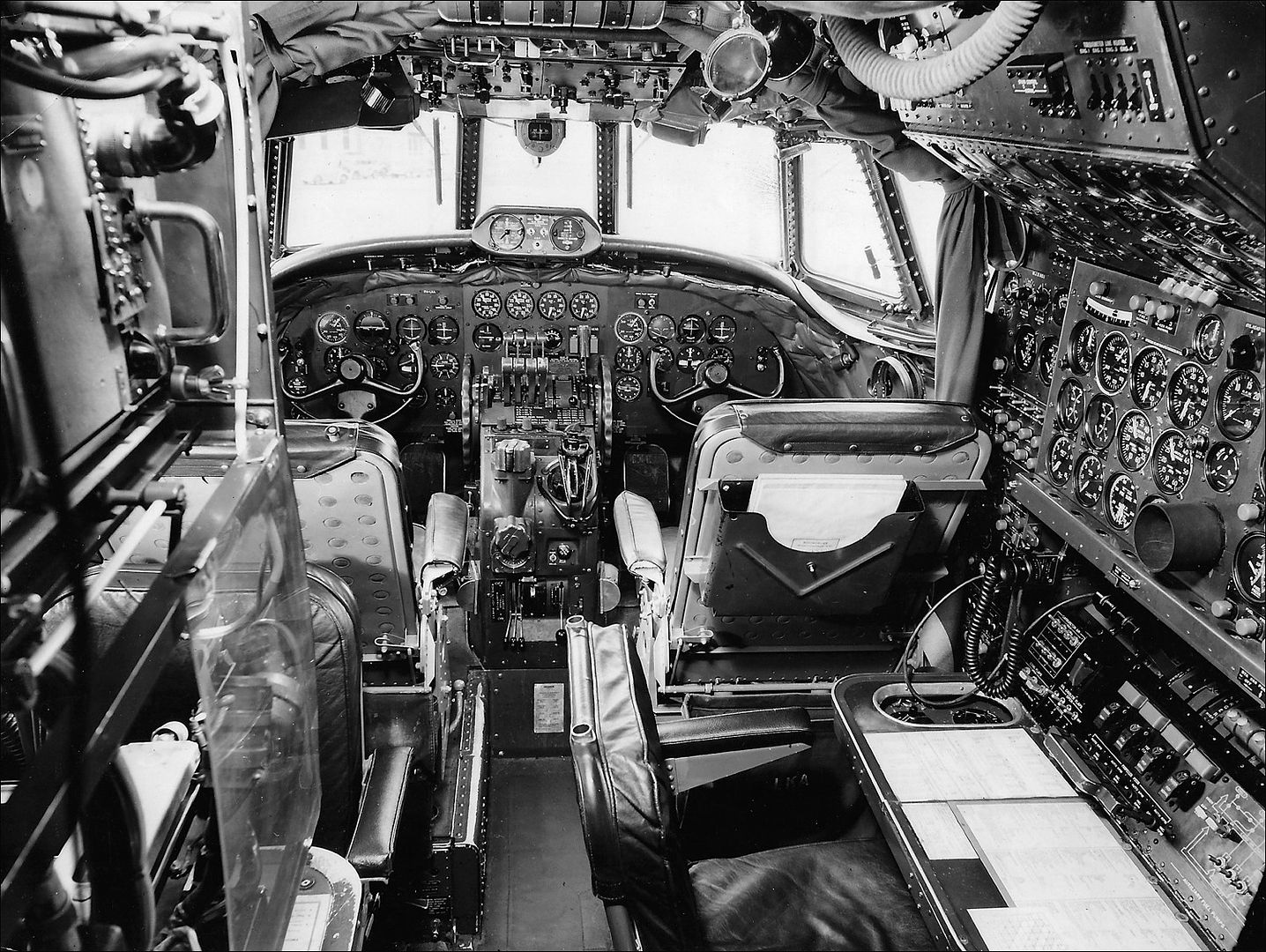
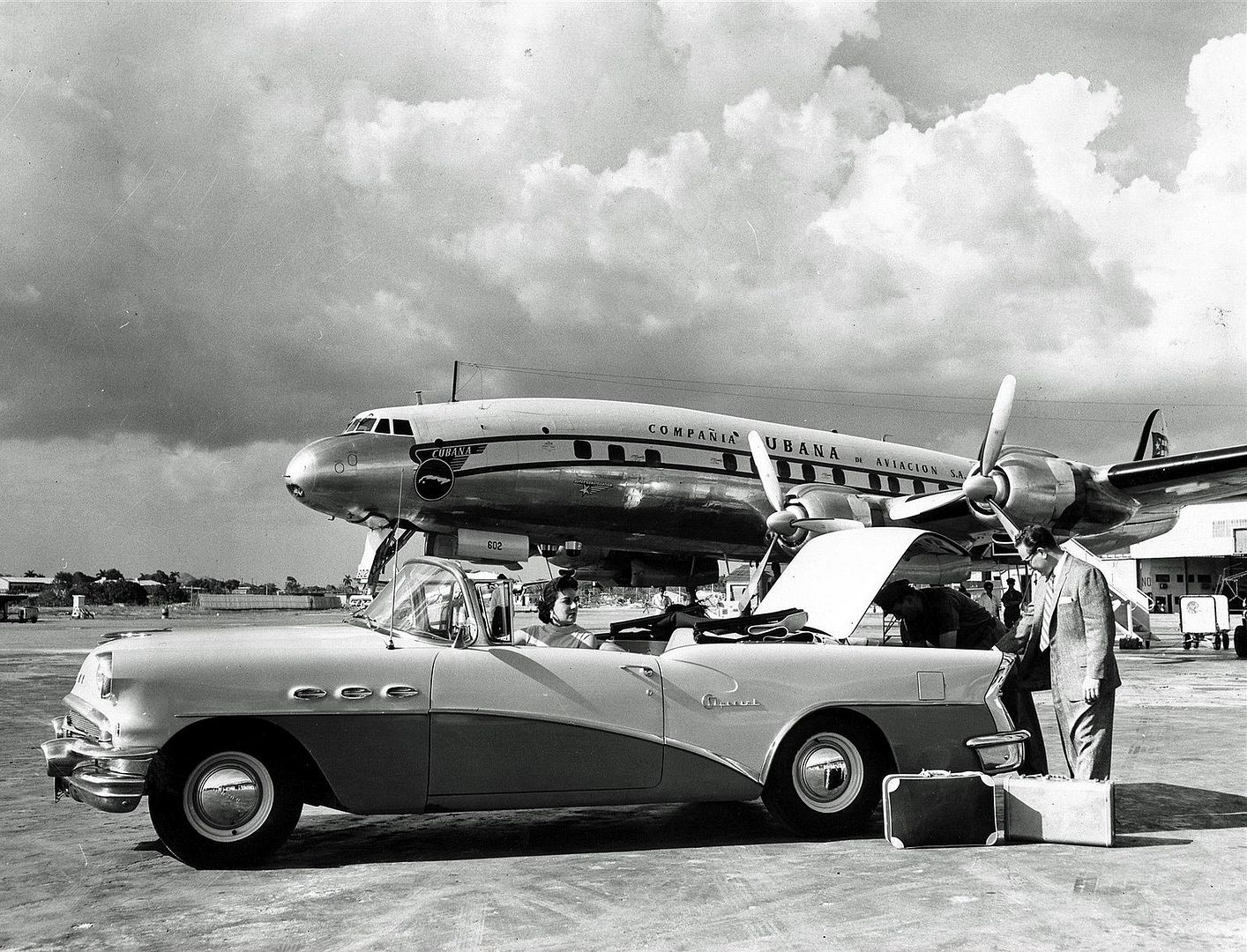
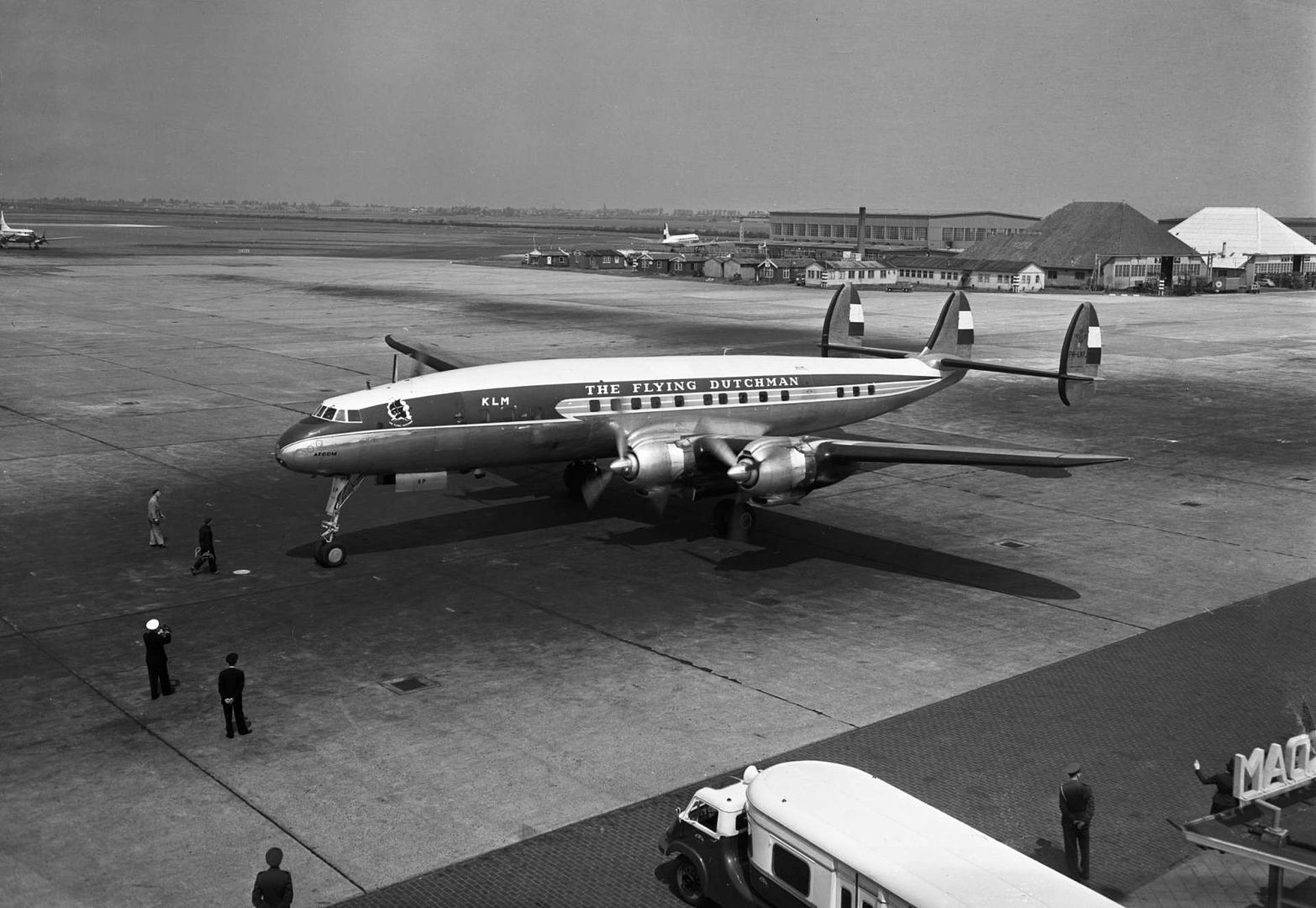
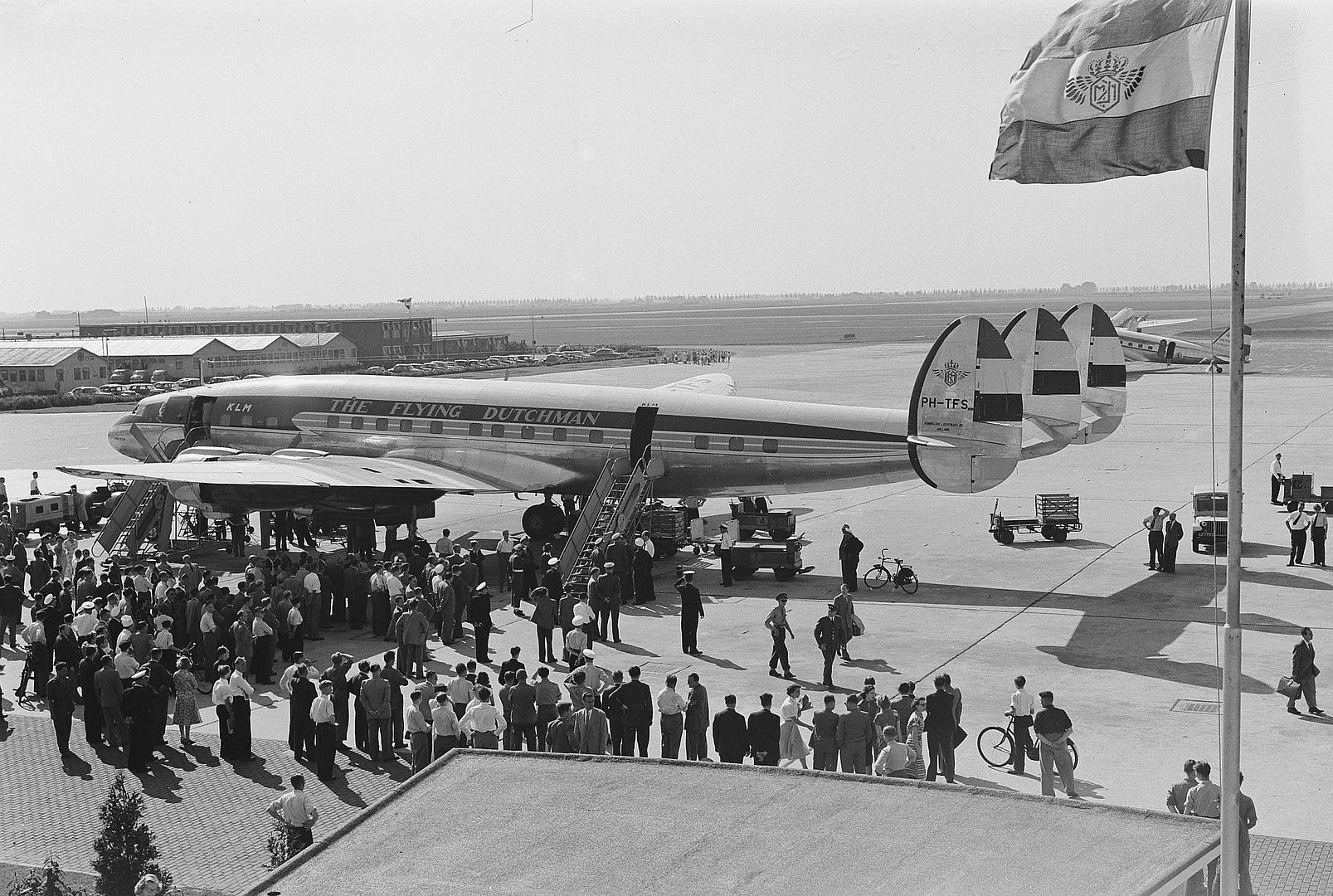
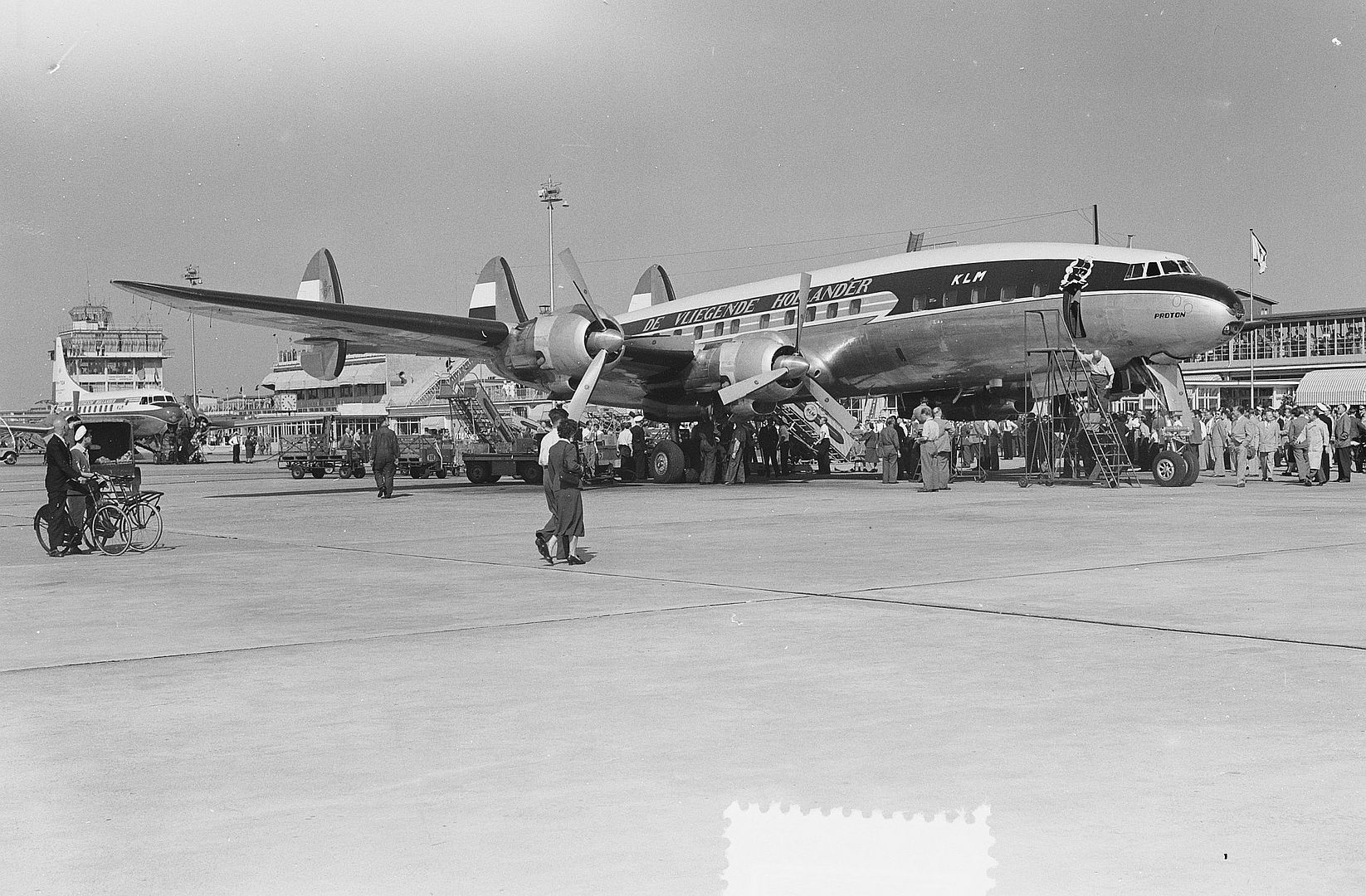
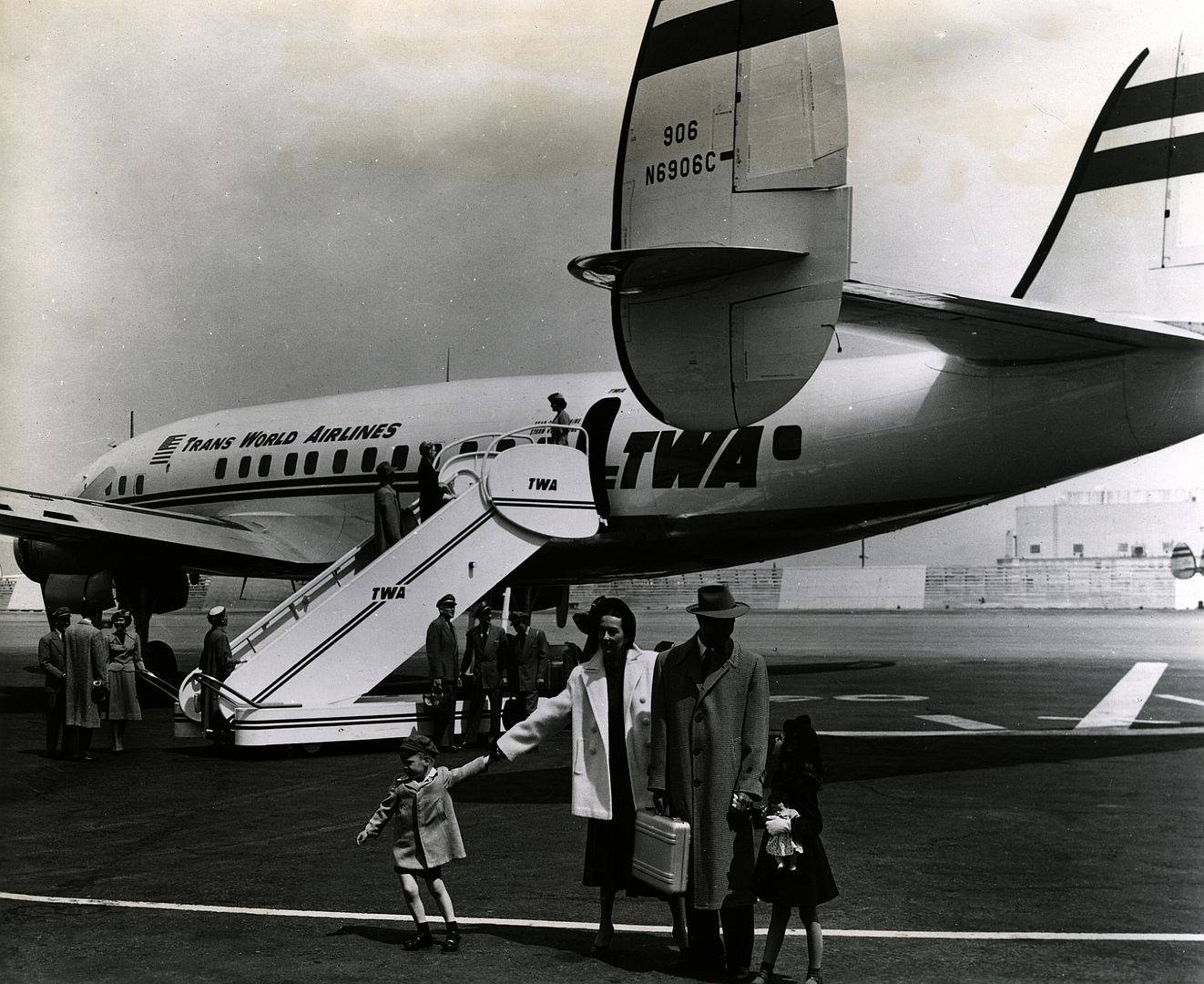

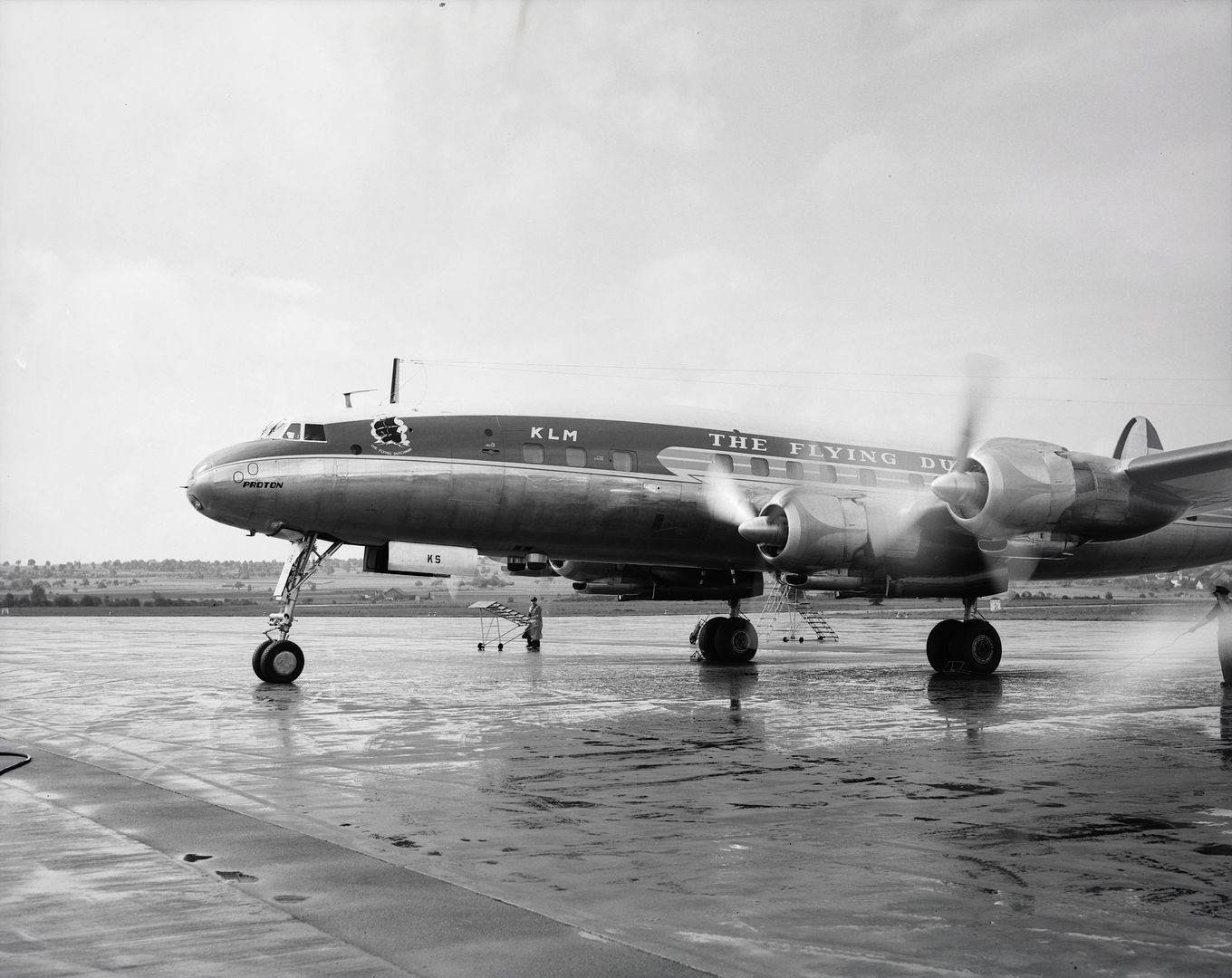
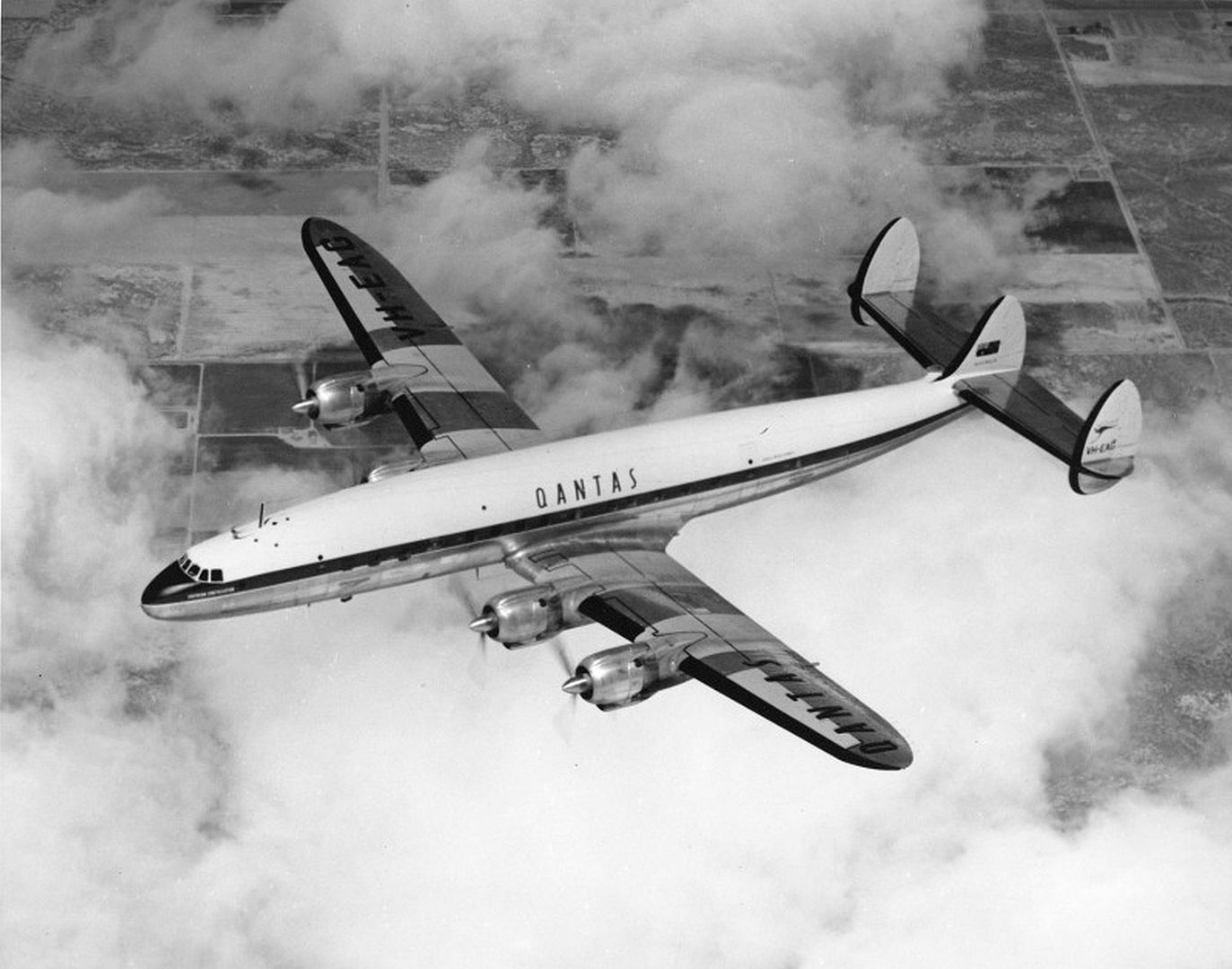
The L-1094C was followed by the "Model 1049D" -- a civilianized version of the military C-121C discussed below, with cargo doors fore and aft of the wing on the left side of the aircraft and reinforced floor, plus airframe reinforcement and gross weight appropriately raised to 60,315 kilograms (133,000 pounds). It was a combi machine, with a quick-change interior that allowed it to be quickly fitted with seats for 109 passengers. Only four were sold, to Seaboard & Western, with deliveries in 1954. It is unclear if they ever carried passengers in earnest.
The "Model 1049E" was effectively an airliner version of the L-1049D, with the increased gross weight of the L-1049D. 28 were built, being sold to eight airlines, including: QANTAS (9), KLM (4), Avianca (3), Iberia (3), Trans-Canada (3), Air India (3), LAV (2), and Cubana (1). Some L-1049Cs were upgraded to L-1049E configuration.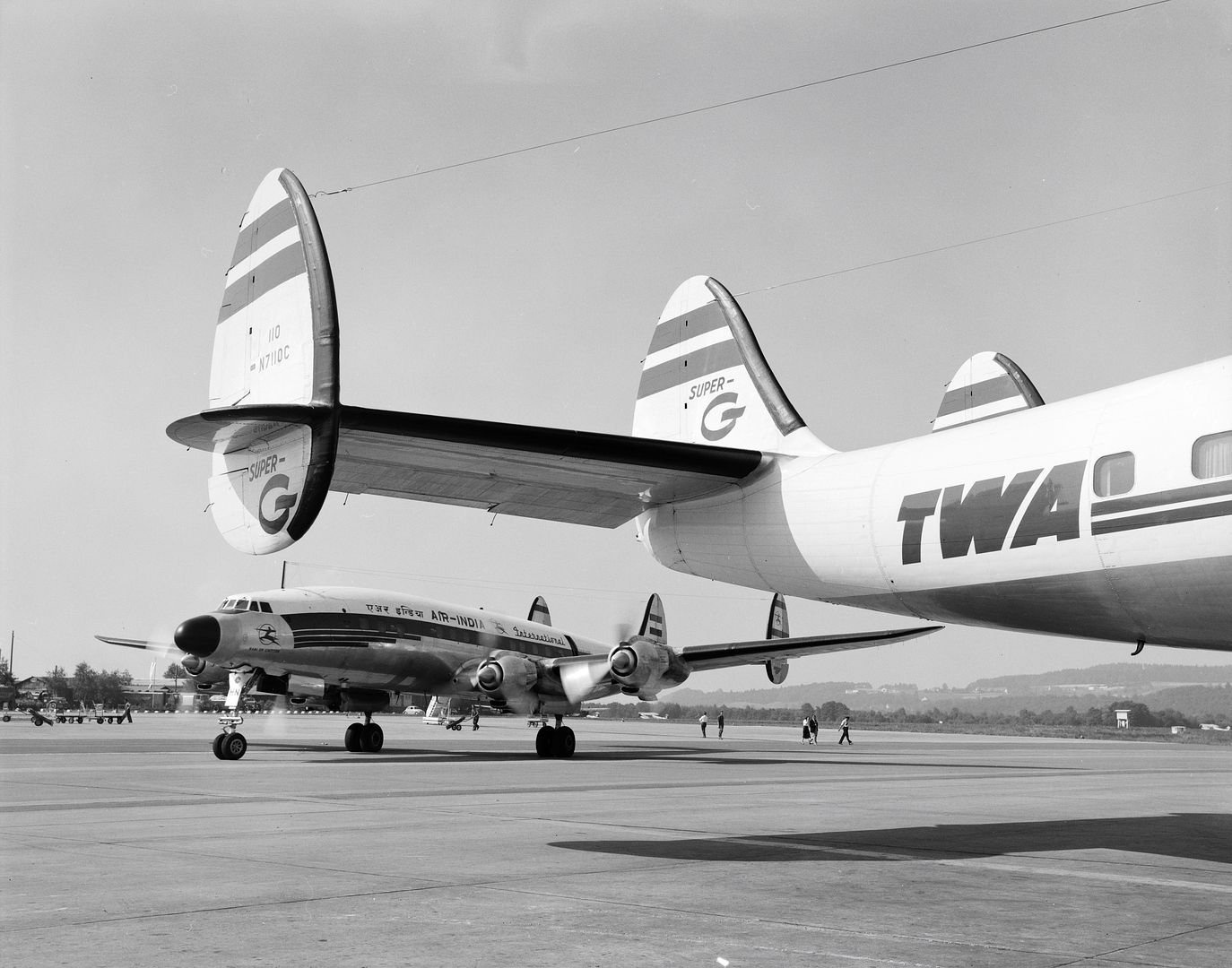
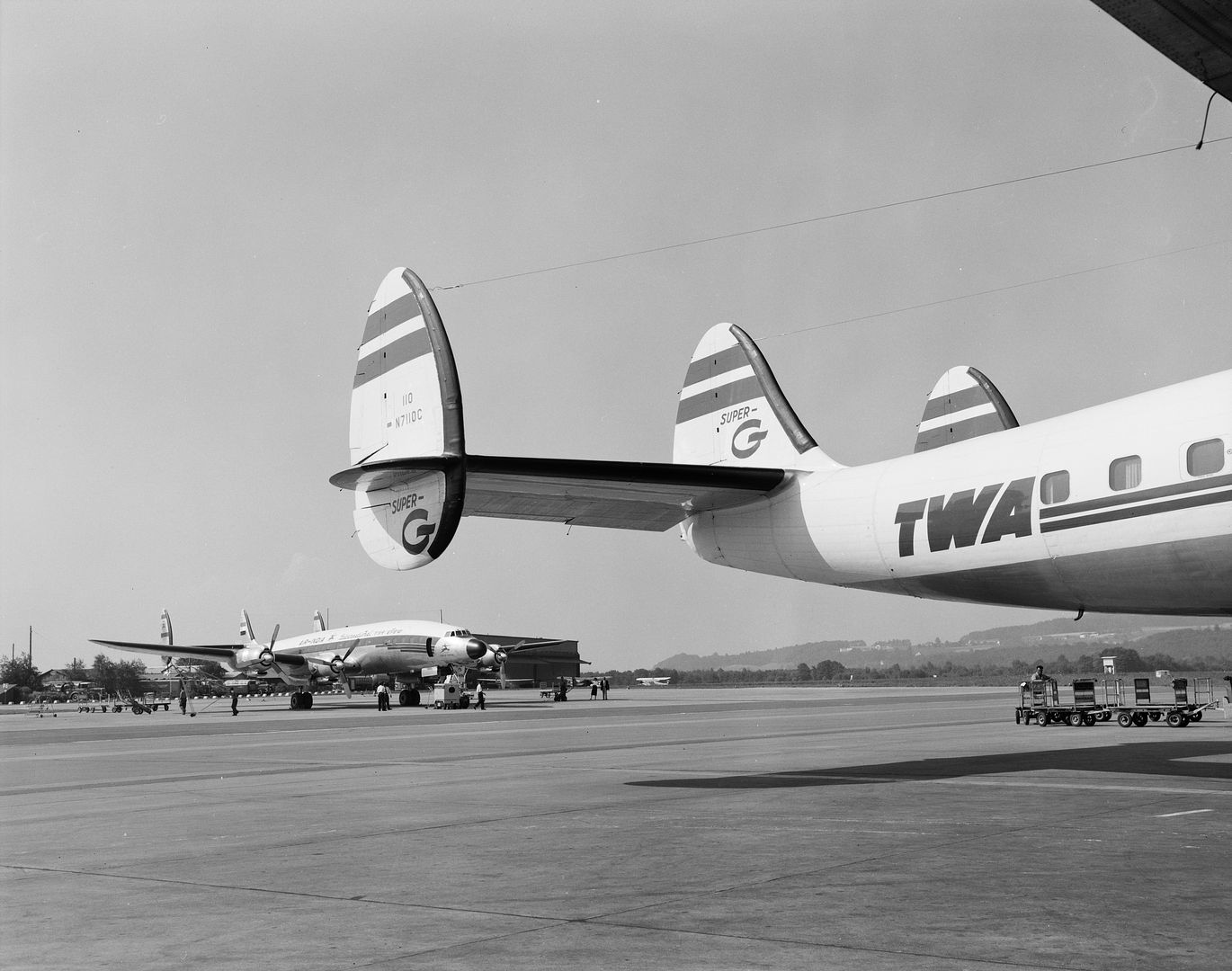
The "Model 1049F" was Lockheed's code for some military variants, and so the next civil version was the "Model 1049G". The primary change was fit of wingtip tanks capable of accommodating 2,308 liters (609 US gallons) of fuel each, raising the total fuel capacity to 29,370 liters (7,750 US gallons) and increasing range by 1,125 kilometers (700 miles). The tip tanks had been originally designed for military Super Constellations.
The L-1049G was also fitted with improved R-3350-DA3 engines; the wingtip tanks, not incidentally, compensated for the increased fuel consumption of the Turbo-Compound engines. The engines had rubber shock mounts to reduce vibration. Other changes included new propeller hubs, an improved de-icing system, and better sound-proofing; weather radar was available as an option.
The L-1049G, sometimes called the "Super-G", first flew in late 1954, and entered service in early 1955. 102 were built -- more than for any other Super Constellation variant -- being sold to 16 airlines, including: TWA (28), Air France (14), Eastern (10), Lufthansa (8), KLM (6), Varig of Brazil (6), Air India (5), Northwest (5), Trans-Canada (4), Cubana (3), TAP of Portugal (3), Thai Airways International (3), Iberia (2), LAV (2), QANTAS (2), and Avianca (1). Some L-1049Es were upgraded to L-1049G configuration. A number of Air India L-1049Es and other Super Connie variants ended up in the hands of the Indian government, to be used for ocean patrol; since they had no combat optimizations, their primary use was likely search and rescue.
The Model 1049G was followed by the "Model 1049H" which was a convertible "combi" machine, in effect an L-109G with the combi features of the L-1049D. It was introduced in the fall of 1956. 59 were built, being sold to 15 airlines and a leasing organization, including: Flying Tigers (13), California Eastern (5), Gulf-Eastern (5), Seaboard & Western (5), National (4), REAL (4), TWA (4), Air Finance Corporation (3), KLM (3), Slick (3), Pakistan International (2), QANTAS (2), Resort (2), Trans-Canada (2), Dollar (1), and Transocean (1). Three Pakistani Super Connies ended up in the hands of the Indonesian Air Force.
The L-1049H was the final production variant of the Constellation family, with the last rolled out in November 1958. There was actually one other production Constellation variant, the "Model 1649A Starliner". TWA had pressed Lockheed to improve the Constellation, with the Starliner featuring substantial refinements. Introducing the Turbo-Compound engines had resulted in increased noise and vibration; the Starliner featured a new, wider-span wing, allowing the engines to be moved away from the fuselage, as well as improving flight efficiency and adding more fuel capacity.
The engine nacelles were redesigned, with the props featuring "synchrophasers" to make sure they rotated at the same speed, eliminating the wearying "beat" of out-of-phase engines. The fuselage was also slightly stretched. The Starliner was introduced in the fall of 1956, just after the introduction of the L-1049H. It set a number of records for piston-engine airliners, but it was behind the times; too little, too late, not able to compete in the emerging age of jet airliners. Only 44 were built, with production ending before that of the Model L-1049H. None were obtained by the military.
The Constellation vanished from first-line commercial service in the early 1960s, with the type lingering in second-line service into the 1970s, even the 1980s. Many are found on display; a number are still flying on the airshow circuit.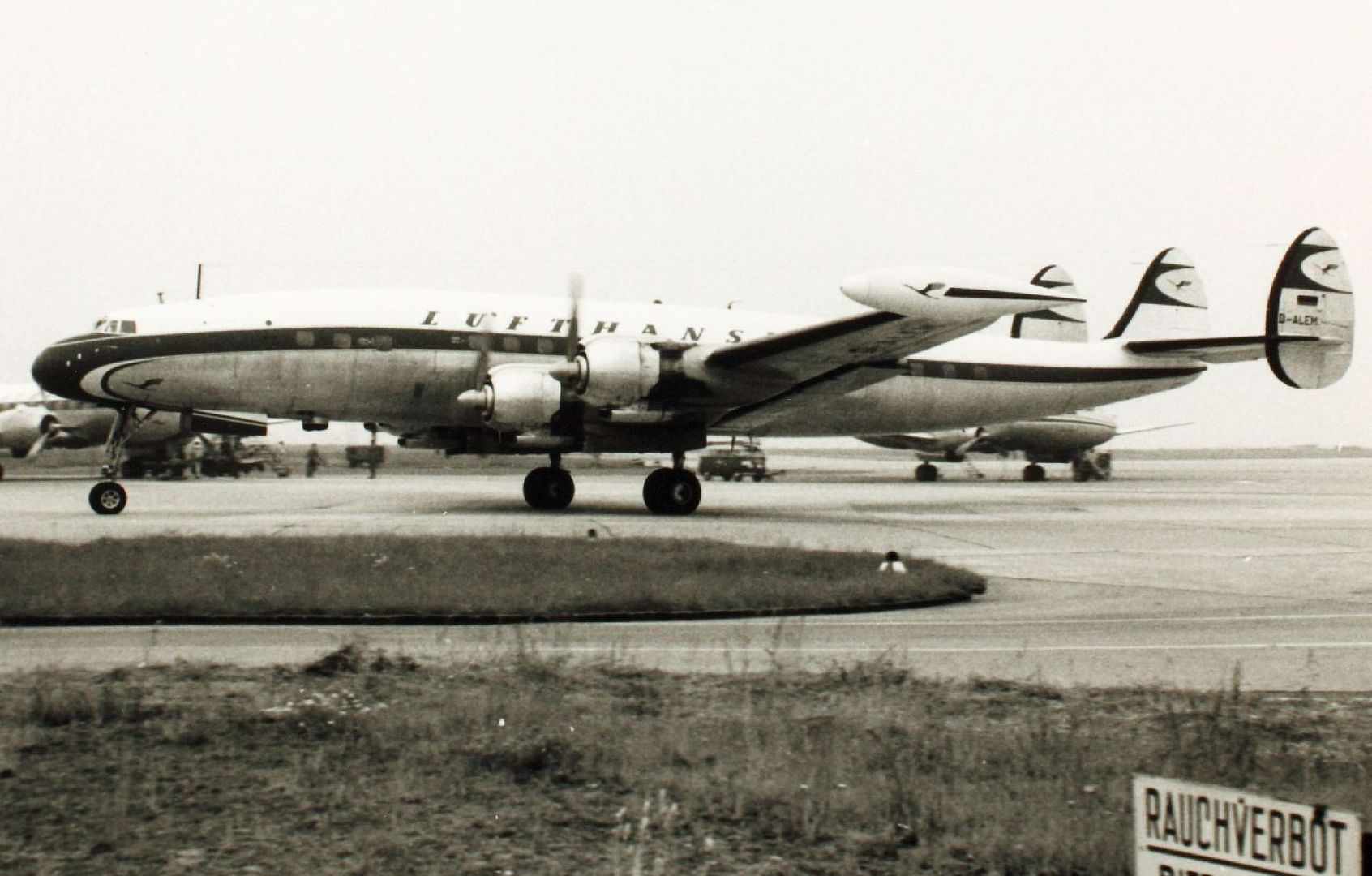
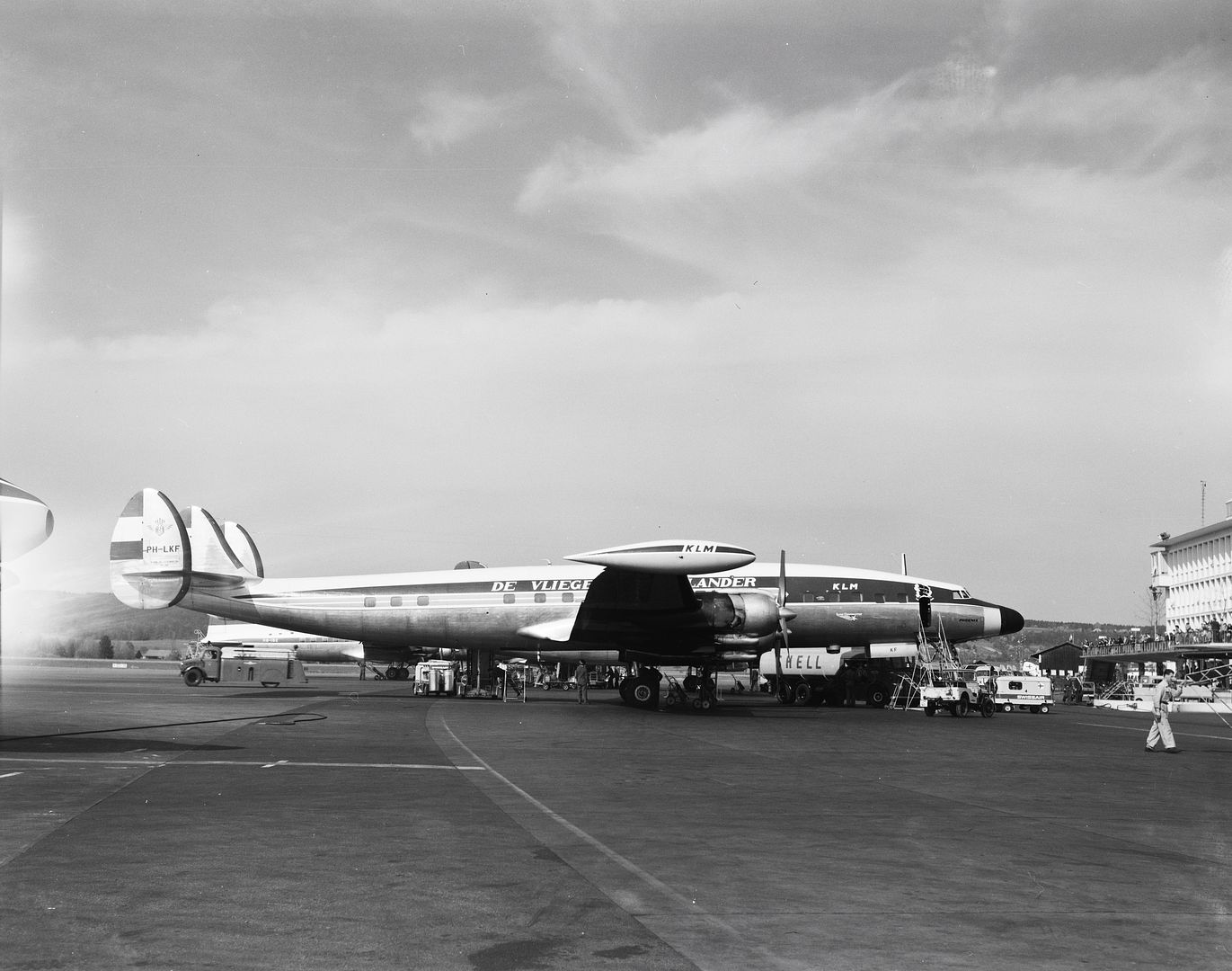
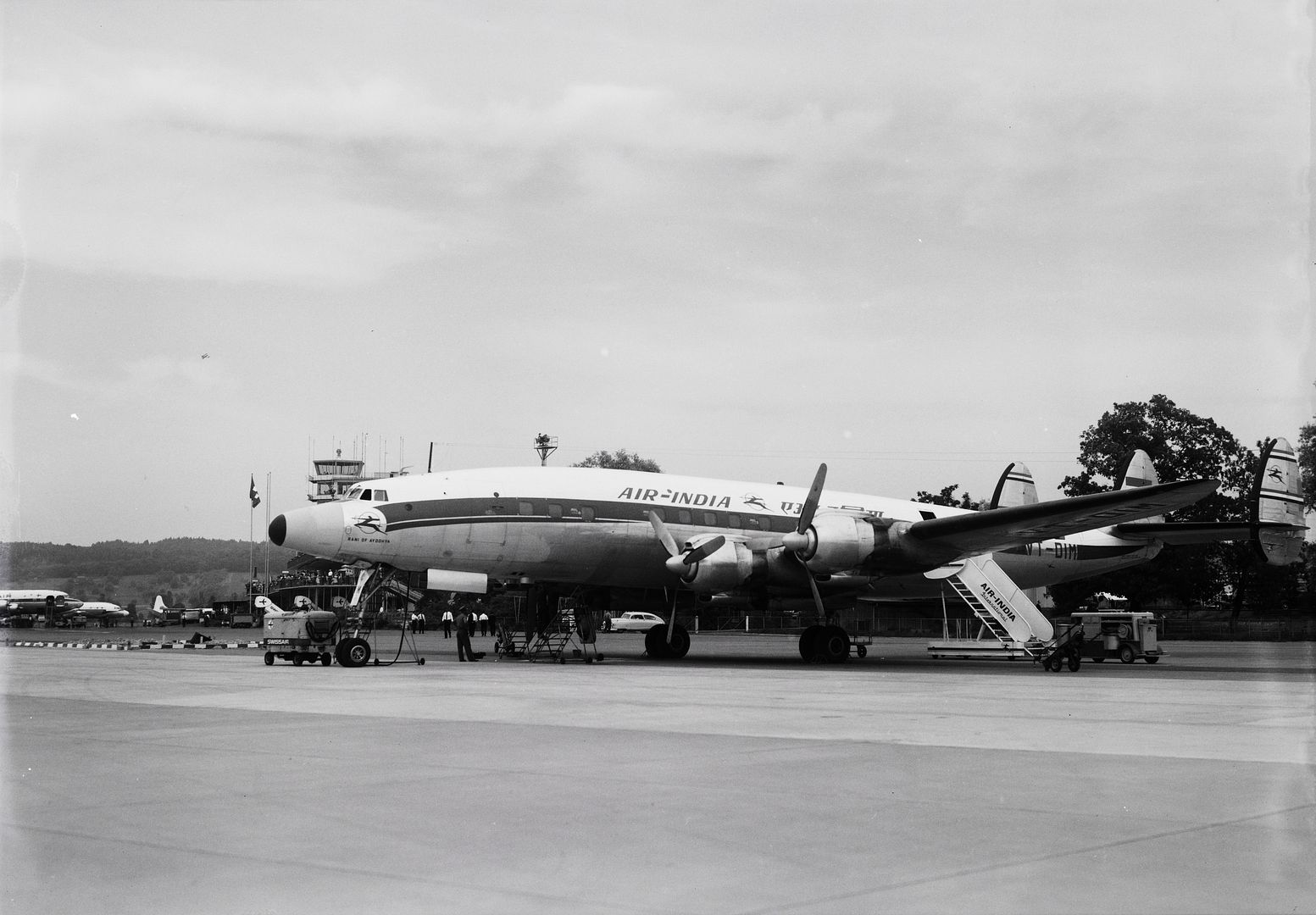


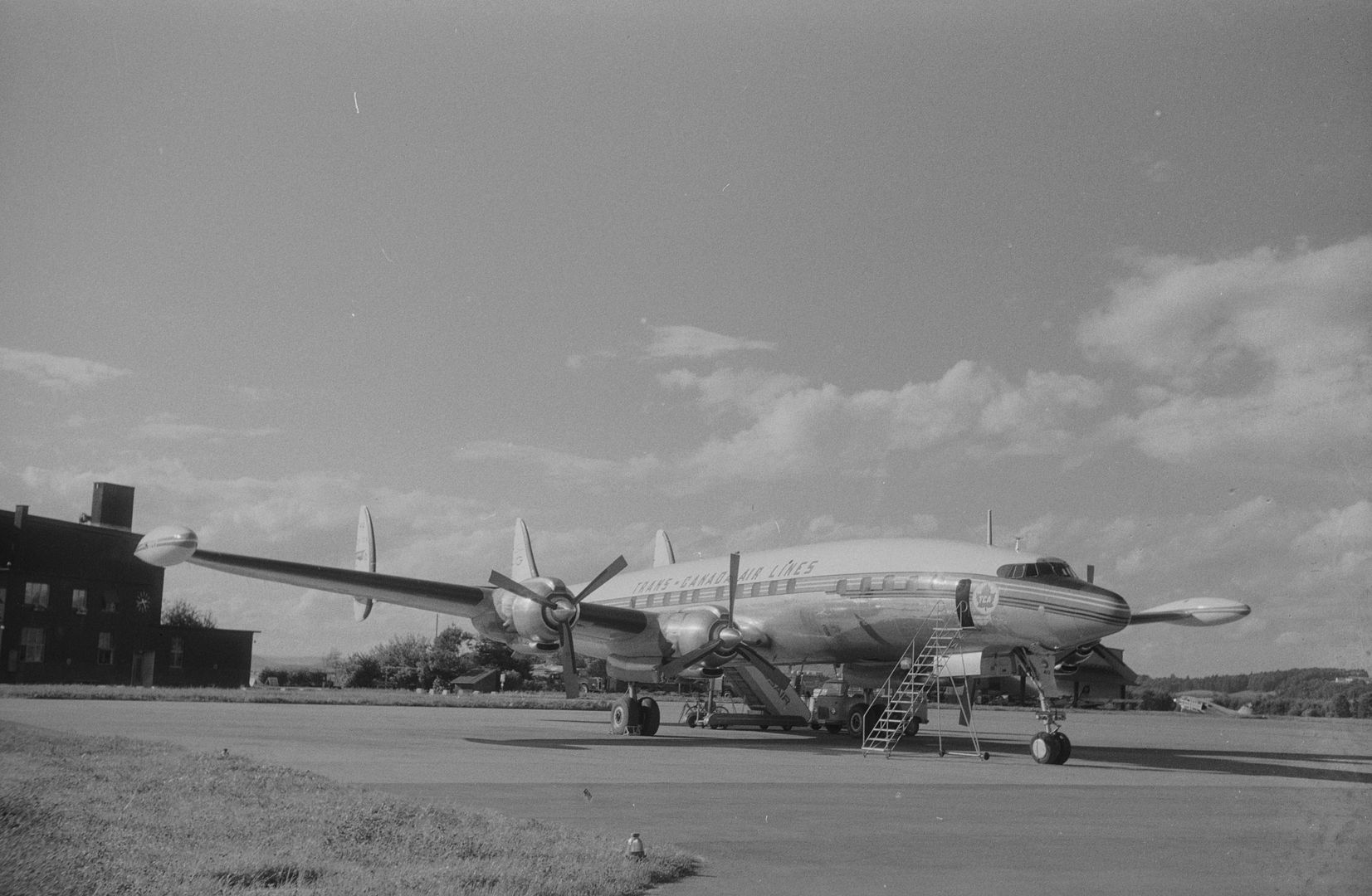
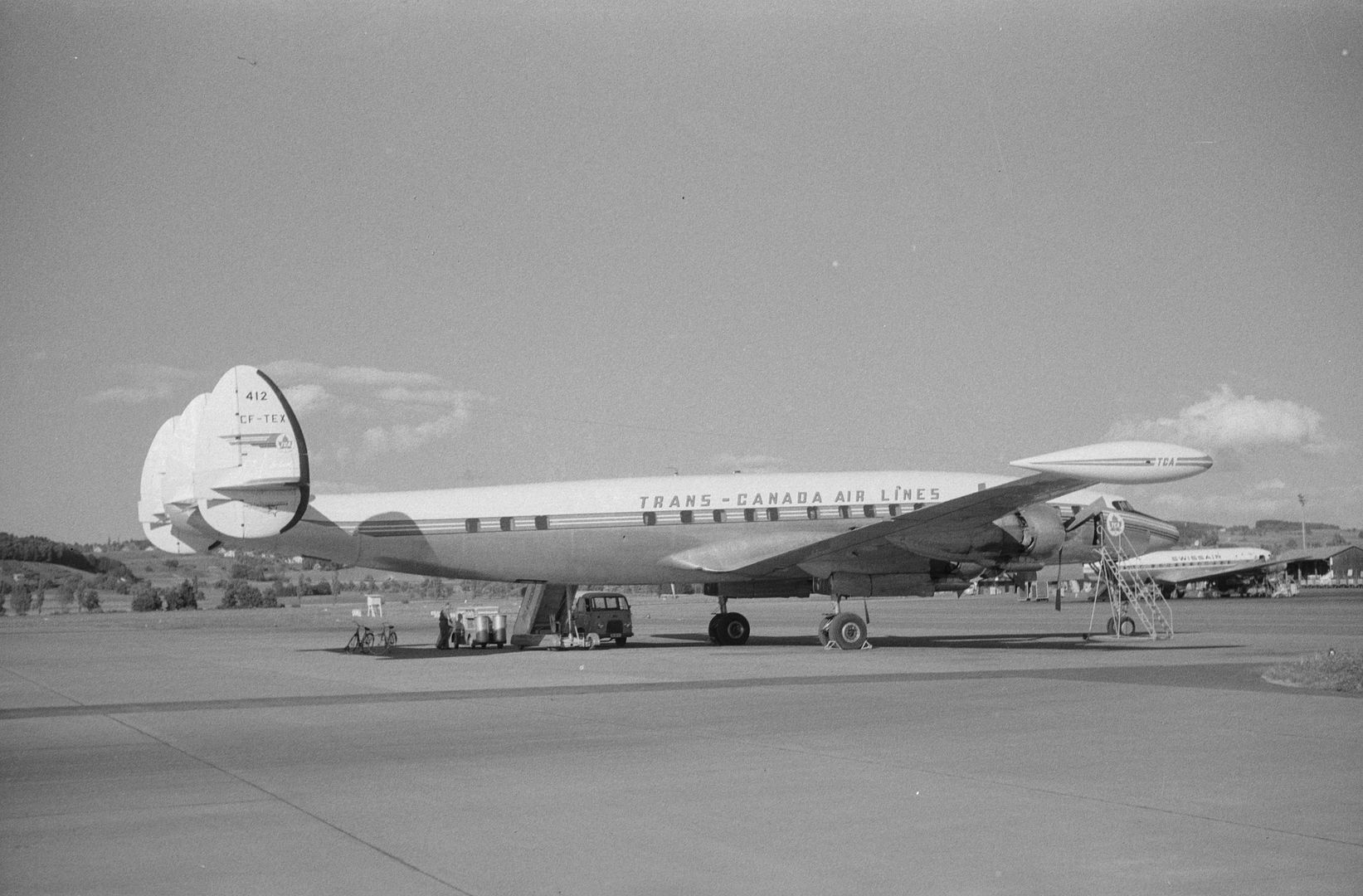

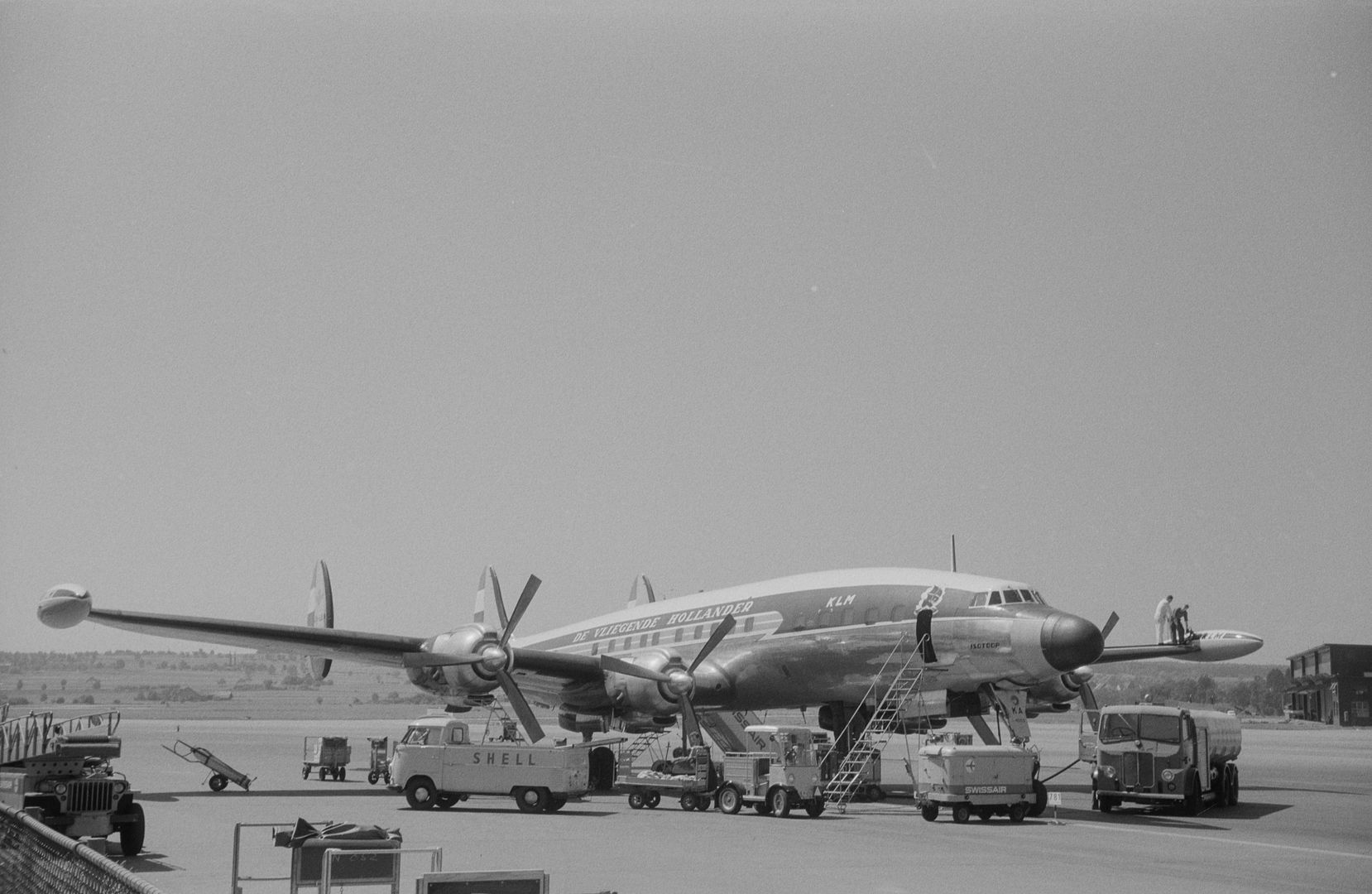

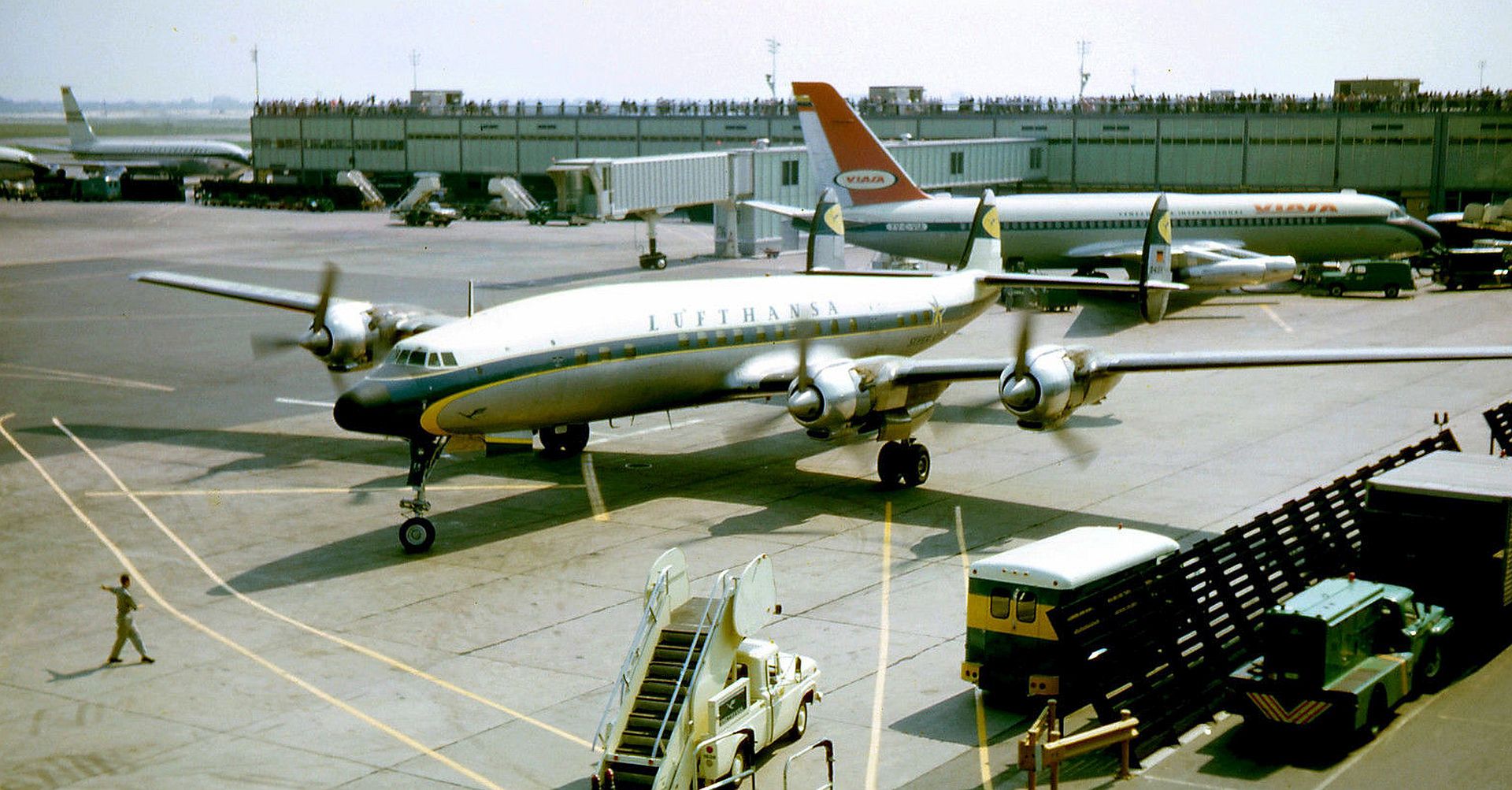
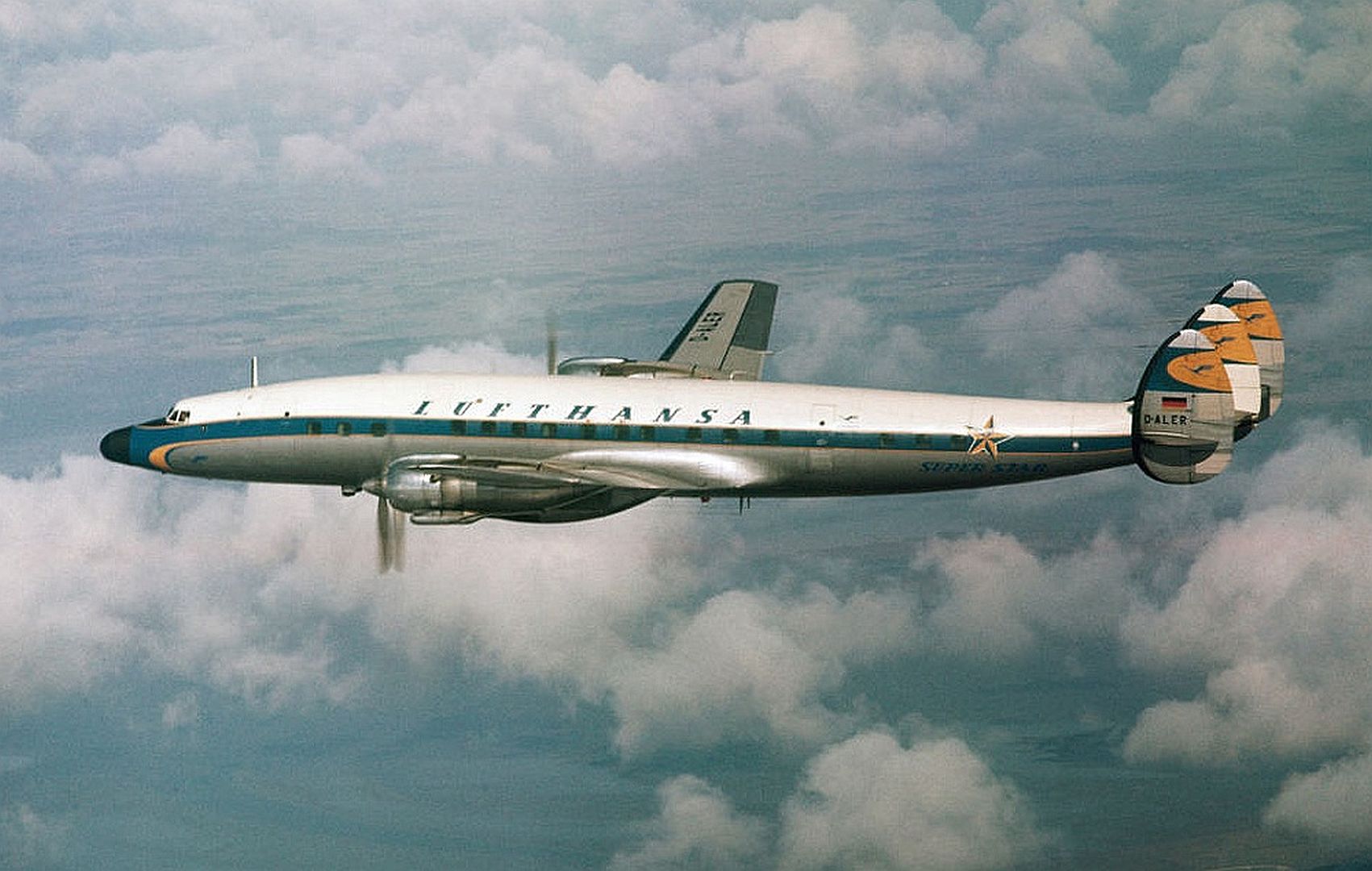
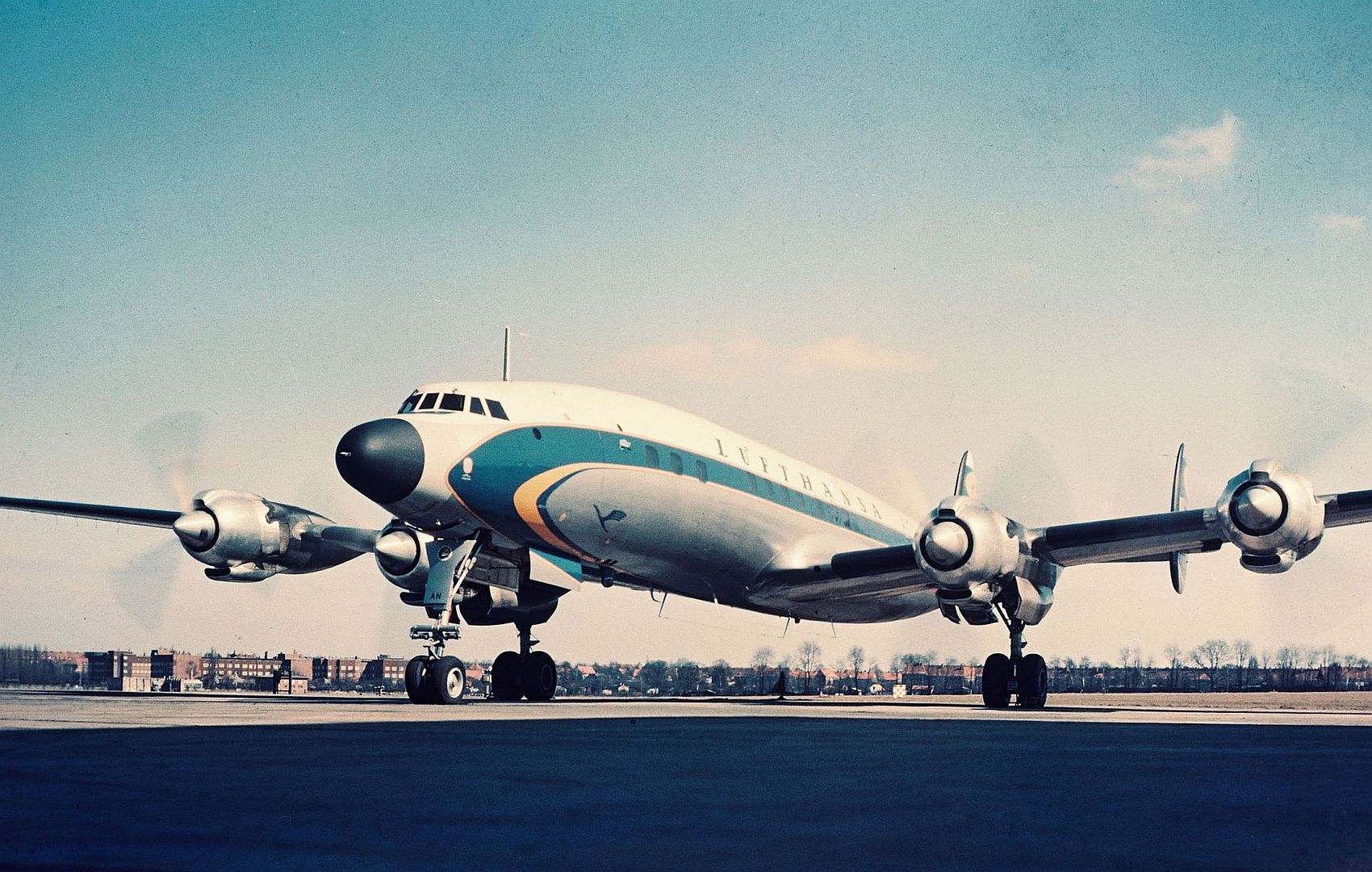
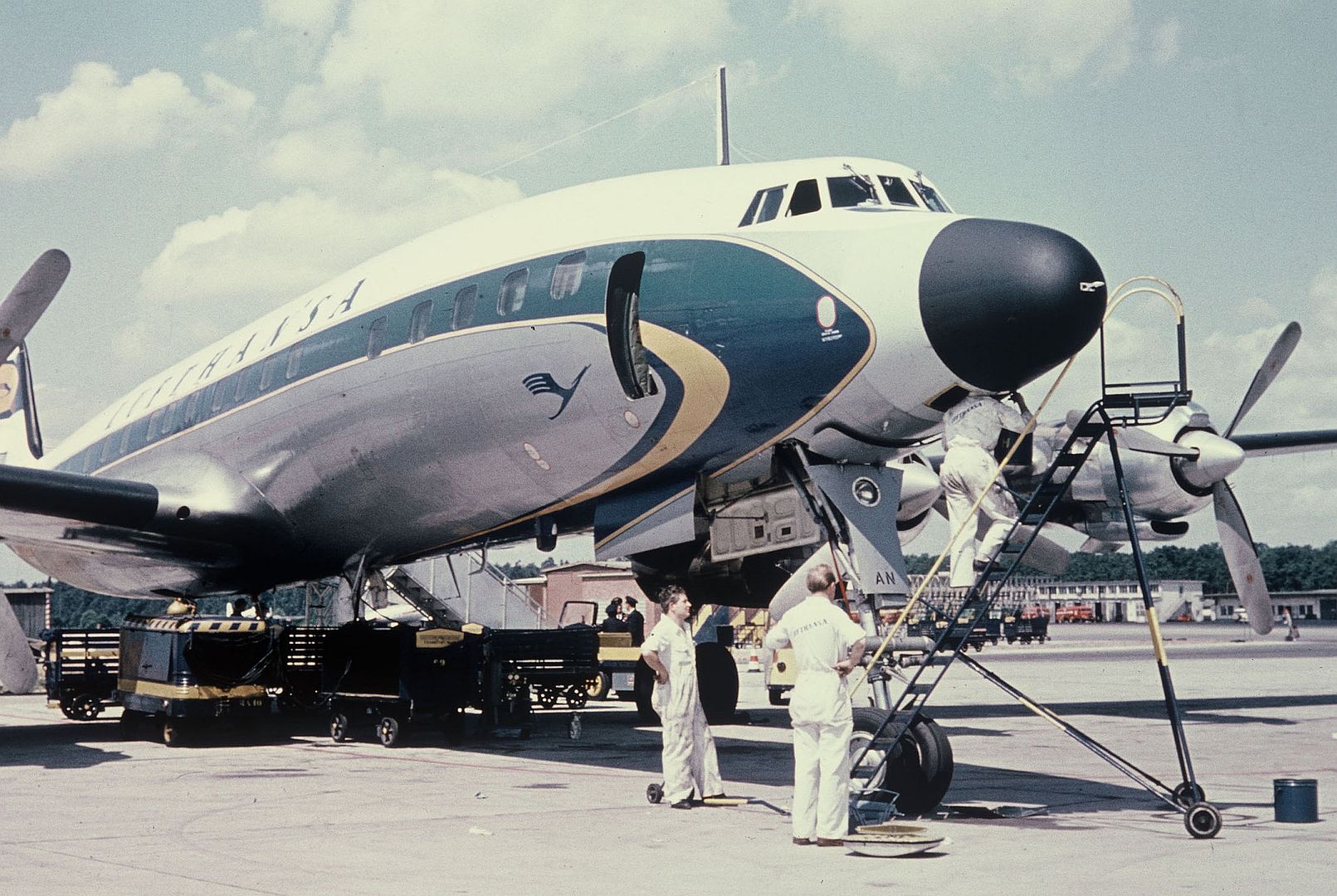
.jpg?width=1920&height=1080&fit=bounds)
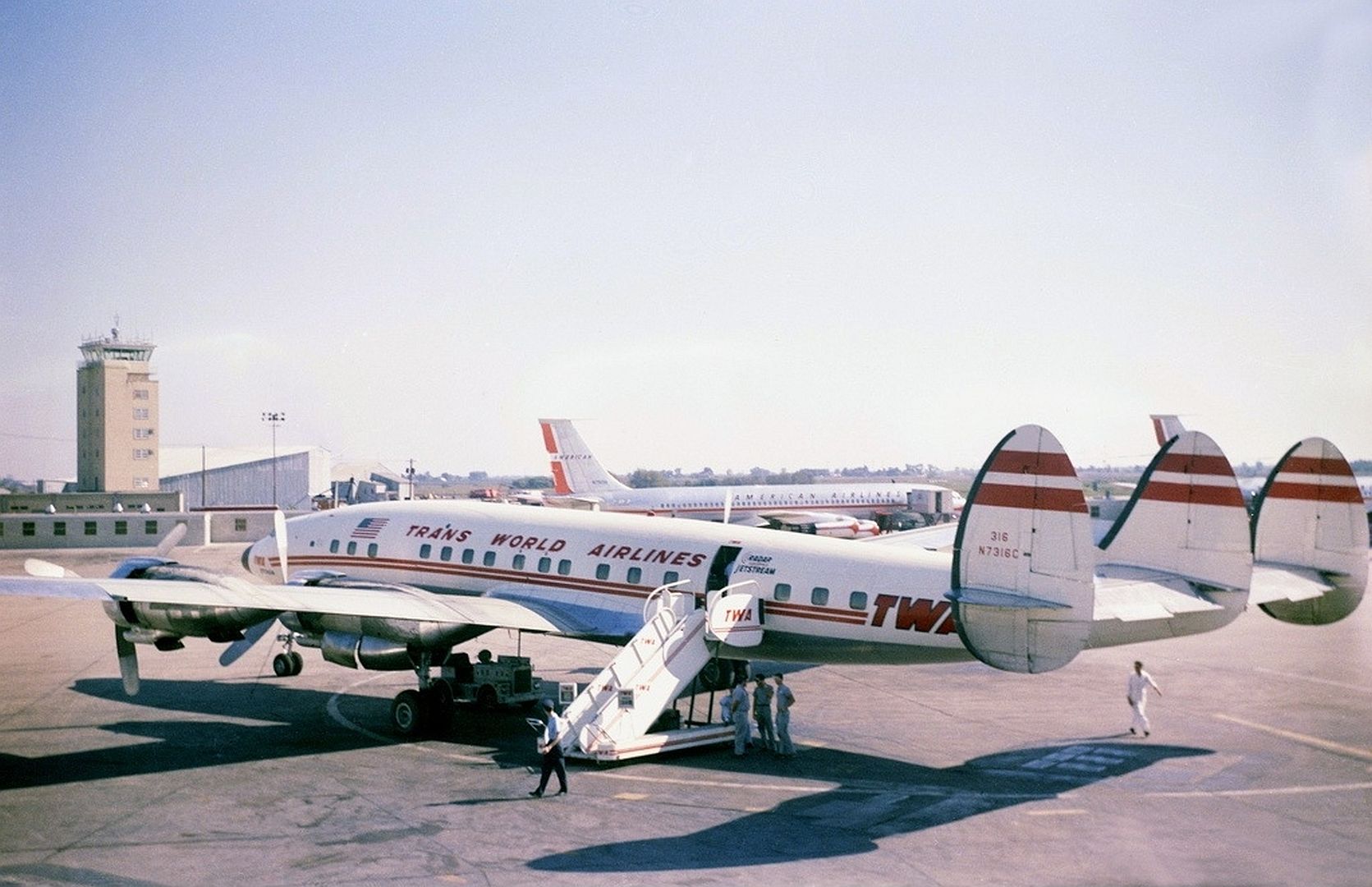
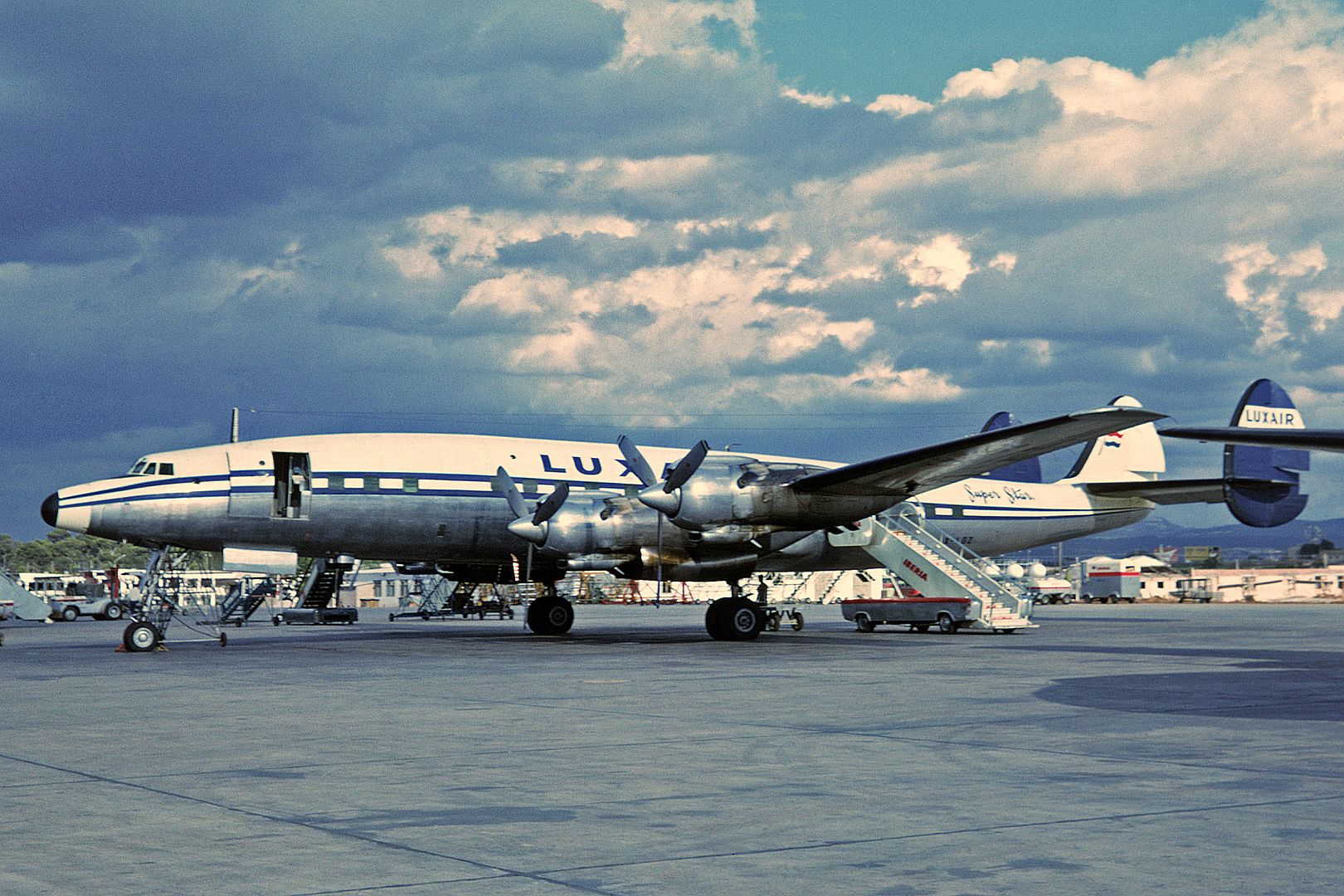
-
5 years agoSun Sep 01 2019, 12:00pm
 Main AdminMILITARY SUPER CONSTELLATIONS
Main AdminMILITARY SUPER CONSTELLATIONS
The US Navy liked the PO-1W / WV-1 AEW very much, and so obtained 142 "WV-2" AEW machines based on the L-1049A Super Constellation. They were originally designated "PO-2W", but the designation was changed to WV-2 before the first was delivered, and so they were never known as PO-2Ws. They had a radome configuration like that of the PO-1W / WV-1, with a topside radome containing an AN/APS-45 height-finding radar, and a belly radome with an AN/APS-20 search radar. The topside radome was much the same as before, but the belly radome was larger. Dummy radomes had been fitted to the long-suffering first Constellation prototype for aerodynamic evaluation. They also had AN/APS-42 weather / navigation radar in an extended nose. There was a upward-hinged cargo door on the left rear fuselage, to make it easier to swap equipment in and out.
The WV-2s were initially powered by R-3350-34 Turbo Compound engines with 2,425 kW (3,250 HP) each, being later upgraded to R-3350-42 engines with 2,535 kW (3,400 HP) each. The WV-2s were the first Super Constellations with the wingtip tanks. The type had an endurance of 30 hours and a crew of 28 -- 16 active, 12 relief -- most being systems operators; five more crew could be added for long-duration missions. The aircraft featured bunks to allow off-shift operators to get some rest, plus a galley to keep the aircrew fed. The WV-2s had a small number of portholes on each side of the fuselage. While the primary mission of the WV-2 was AEW, during the 1960s the type would be used for support of space flight activities as well.
A total of eight Navy WV-2s was converted to "WV-2Q" signals intelligence (SIGINT) platforms by the Martin company, to replace Martin P4M-1Q Mercators in the SIGINT role. The WV-2Qs were externally similar to the baseline WV-2, with the three radars, but they featured various SIGINT systems for location and characterization of radio "emitters" -- such as radar, communications, and radio beacons -- as well as communications interception. The WV-2Qs had a litter of additional small antennas, as well as an auxiliary power unit (APU) turbine in the rear fuselage to provide electrical power. The WV-2Qs were given improved SIGINT gear over their lifetimes.
One Navy WV-2 was fitted experimentally with AN/APS-82 search radar by the US Naval Research Laboratory (NRL) as the "WV-2E", performing its first flight as a testbed in 1956. The radomes for the AN/APS-45 and AN/APS-20 radars were deleted, with the AN/APS-82 antenna mounted in a flying-saucer-shaped "rotodome" on the back. The AN/APS-82 was used operationally on the Grumman "WF-2 Tracer" carrier-based AEW aircraft, known as the "Willie Fudd", though not in a rotating radome. The WV-2E went on to other trials work.
The WV-2s were actually obtained a component of a well larger order -- but that order included several Super Constellation variants for both the Navy and the USAF. Trying to fully sort out what went where is very difficult and not very rewarding, but it is known that eight machines out that enlarged order were delivered to the Navy as "WV-3" weather reconnaissance aircraft.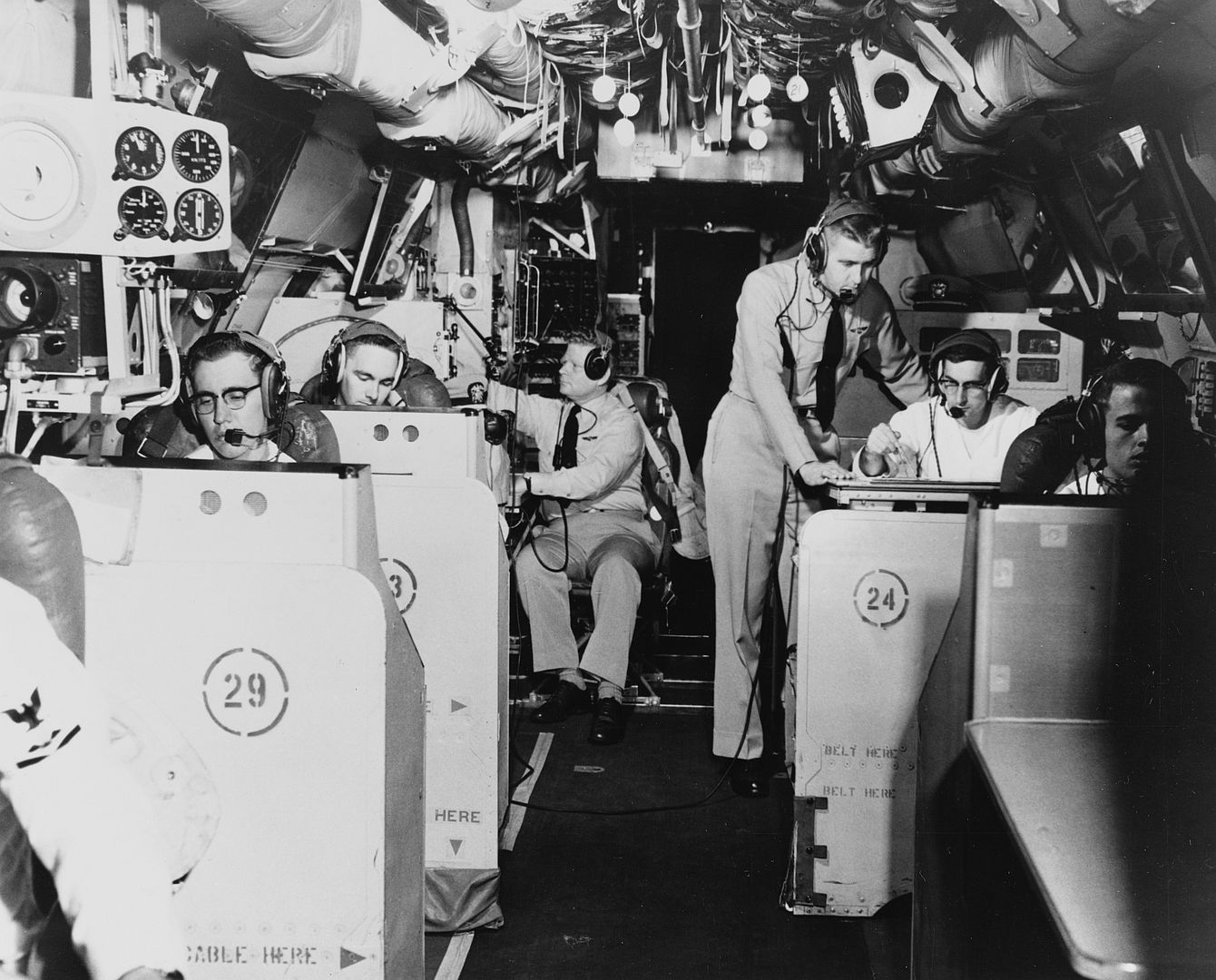
The WV-3 was hard to distinguish from the WV-2. The WV-3s had the same radar gear, but added specialized gear for weather observation. They normally had a crew of 11, though for long-endurance missions with a relief crew, that could go up to 23. They were most prominently used in the "Hurricane Hunter" role, spotting and diving into hurricanes -- which could be exciting, not necessarily in a good sort of way -- though they were also used for weather reconnaissance in support of military operations. Twelve more such machines were eventually converted to WV-3s from other Super Constellation variants.

The Navy acquired transports along with the WV-2s, obtaining fifty "R7V-1" combi transports with the dual cargo doors, reinforced cargo floor, and quick-change interior. They were powered by R-3350-91 engines, providing 2,425 kW (3,250 HP) each, and could carry 72 troops -- but they only had eight portholes on each side of the fuselage. One was temporarily fitted with cameras, being used for Antarctic ice reconnaissance as a secondary mission and designated "R7V-1P", though it later reverted to pure transport configuration.
The US Air Force obtained 33 "C-121C" combi transports, also Model 1049Fs, similar to the Model 1049Ds sold to Seaboard & Western, except for reinforced wings to handle higher take-off weights. Like the L-1049D, they had square passenger windows -- military Super Constellations typically had portholes -- plus fore and aft upward-raising cargo hatches, and reinforced floors. Two ended up in service as trials platforms, to be designated "JC-121C", "EC-121C", and then finally "NC-121C". Two became VIP transports, operated by the Air National Guard, being designated "VC-121C".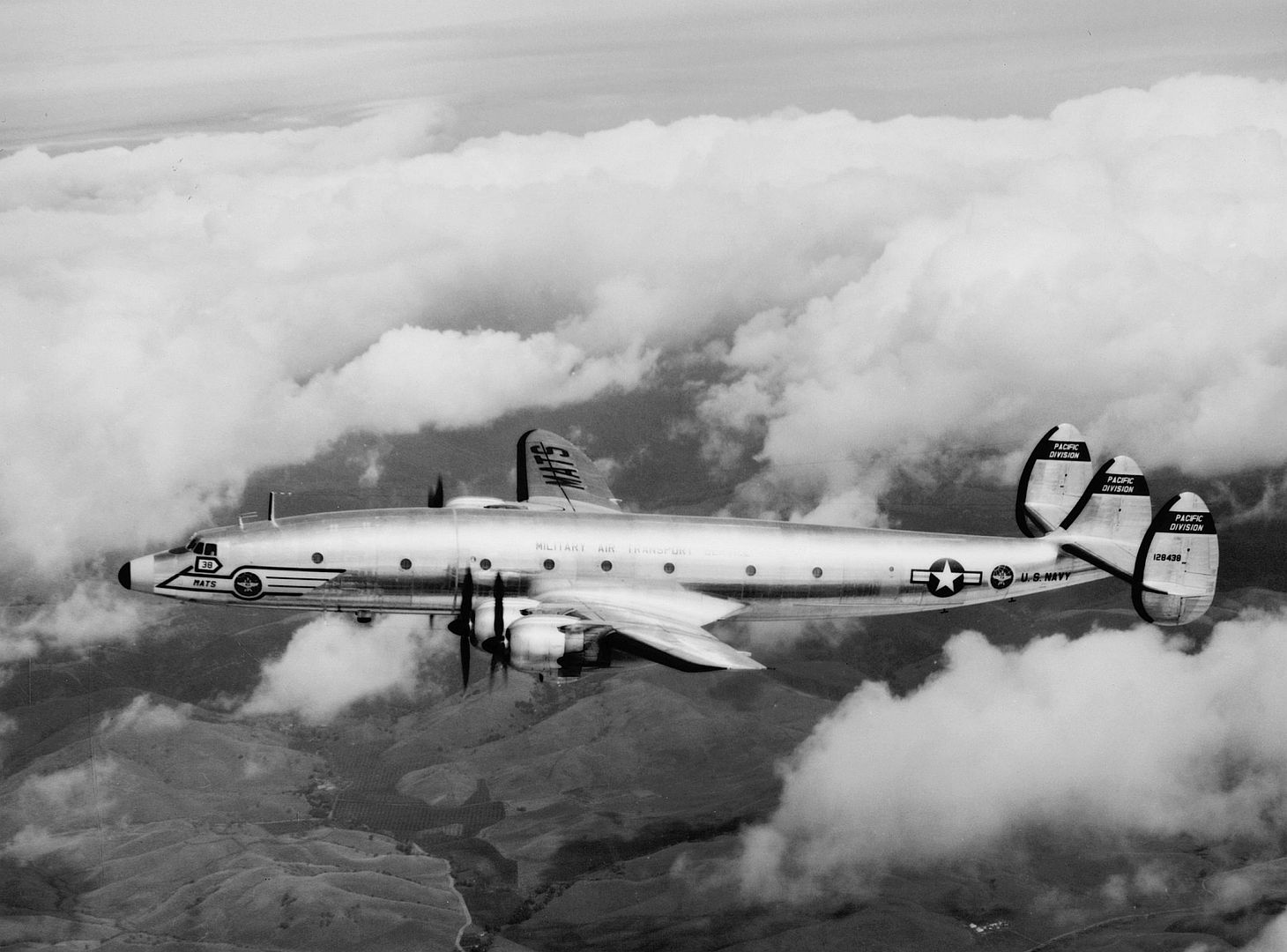
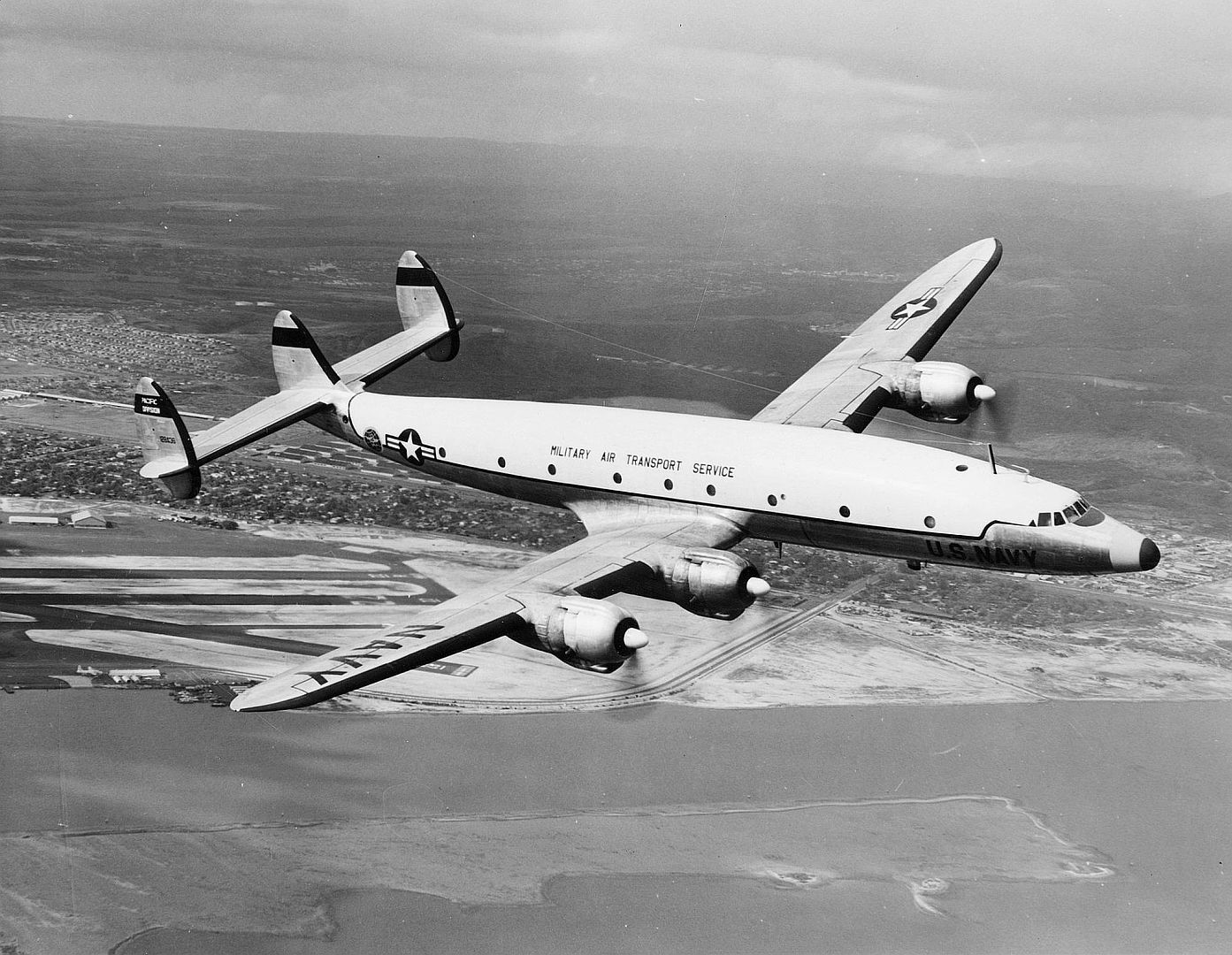

The Air Force also obtained a single "VC-121E" VIP transport with square windows -- though it actually began life as an R7V-1. It went into service as President Eisenhower's personal transport, the COLUMBINE III, in 1954. It was relegated to hauling lesser dignitaries in the Kennedy Administration, and retired to the USAF Museum in 1966, where it resides today.
Of the Navy order for R7V-1s, 32 were quickly passed on to the USAF, being designated "C-121G", being used to flesh out the Air Force Military Air Transport Service, which was the backbone US military airlift support. Three of these ended up as "TC-121G" trainers, with one given VIP fittings for a time as a "VC-121G", to be used as a VIP transport by the US Military Assistance Command / Vietnam (MACV). Two C-121Gs ended up in service with NASA for use as test platforms and support aircraft.
In addition to the C-121C transports, the USAF also obtained ten "RC-121C" AEW platforms, similar to the WV-2. They had the AN/APS-45 and AN/APS-20 radars in the same configuration as the WV-2, but there were some changes in configuration, most notably deletion of the wingtip tanks. They appear to have been an interim batch, delivered in a hurry, because they were followed by what would be a total of 48 "RC-121D" AEW machines, generally similar to the WV-2, including the wingtip tanks, but with USAF communications and other tweaks. The RC-121Ds were given some equipment updates in service, most significantly in being fitted with AN/APS-95 search radar.
The RC-121Ds were the first line of aerial warning for the United States in the Cold War, performing wide-ranging patrols on the continental ramparts and oceanic approaches. The Navy WV-2s complemented the Air Force RC-121Ds by providing air warning over far oceanic approaches. Once the RC-121Ds were in service, the earlier RC-121Cs were used for training, to be re-designated "TC-121C", with one then becoming a JC-121C trials aircraft -- the same designation used for C-121C-based trials machines, suggesting this one was stripped of its radomes.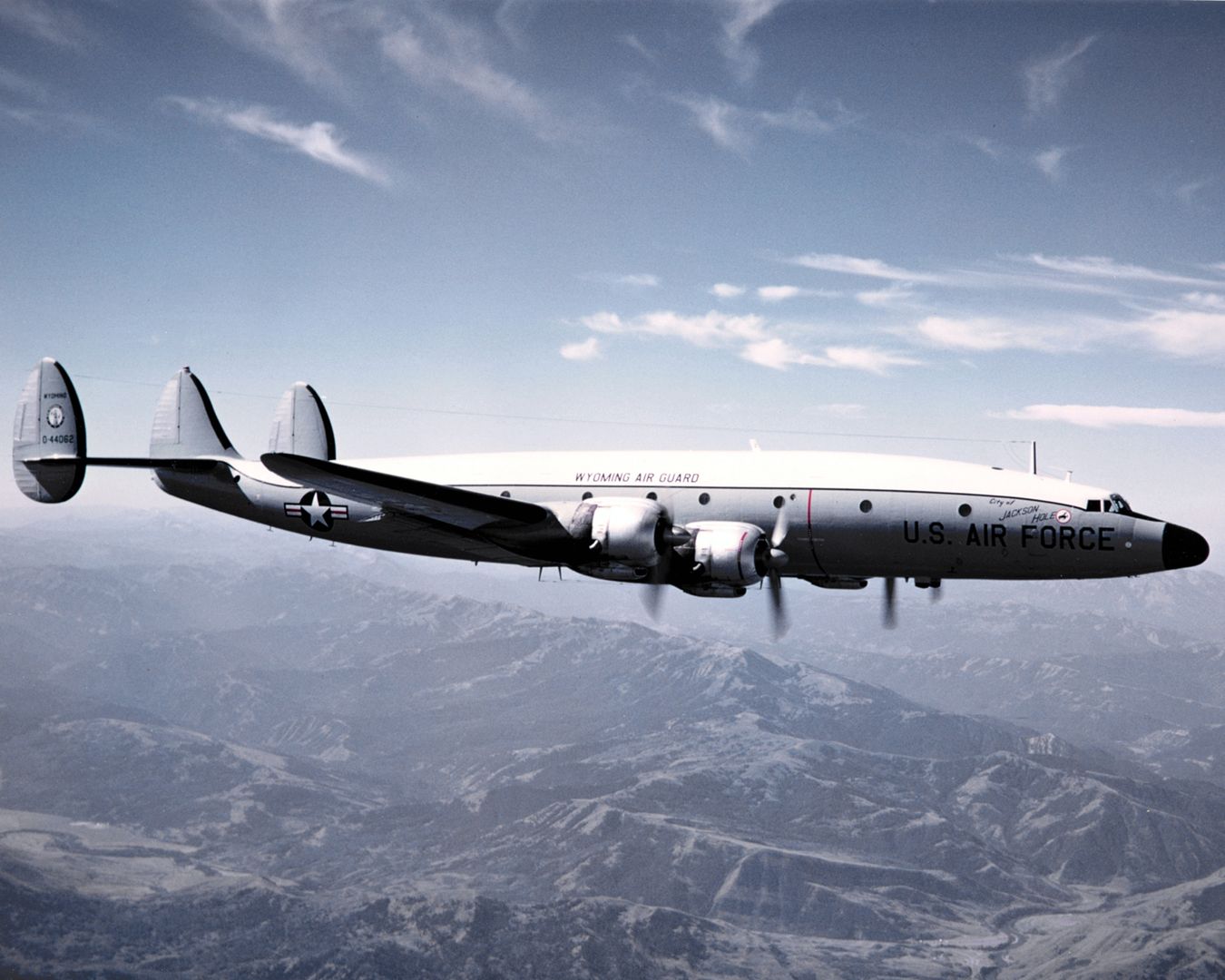

The military, having been instrumental in development of the Turbo-Compound engine, was also pushing turboprop propulsion in that era, with the Navy acquiring four turboprop-powered Super Constellations from 1954 under the designation of "R7V-2", with the Lockheed designation of "Model 1249A". Unlike the R7V-1s, they featured wingtip tanks; they were powered by P&W YT34-P-12 turboprops, providing 4,140 ekW (5,550 EHP) and driving three-bladed fully-feathering paddle propellers. The engines were fitted in distinctively extended nacelles -- apparently due to balance issues and not engine configuration.
Maximum take-off weight was, in overload condition, almost twice that of the original C-69, and the R7V-2s could cruise at an impressive 660 KPH (410 MPH). There was no intent to put them into production; they were simply for operational evaluation of turboprop-powered aircraft. They had confusing service histories, two were bailed to the USAF, to be designated "YC-121F", and one went back to Lockheed to perform turboprop trials, in particular evaluating what would become the Allison T56 turboprop engine.
As noted above, the last Super Constellation, a civil airliner L-1049H, was rolled out in 1958. The refined Starliner was not obtained by the military -- but Lockheed did propose a next-generation Navy "W2V-1" AEW platform based on the Starliner. It would have been powered by Allison T56-A-7 turboprops with 3,020 ekW (4,050 EHP) each -- along with wingtip-mounted J34-WE-34 auxiliary turbojets, with 14.45 kN (1,475 kgp / 3,250 lbf) thrust each, for boost power -- and would have carried the AN/APS-82 search radar, tested on the WV-2E, in a dorsal rotodome.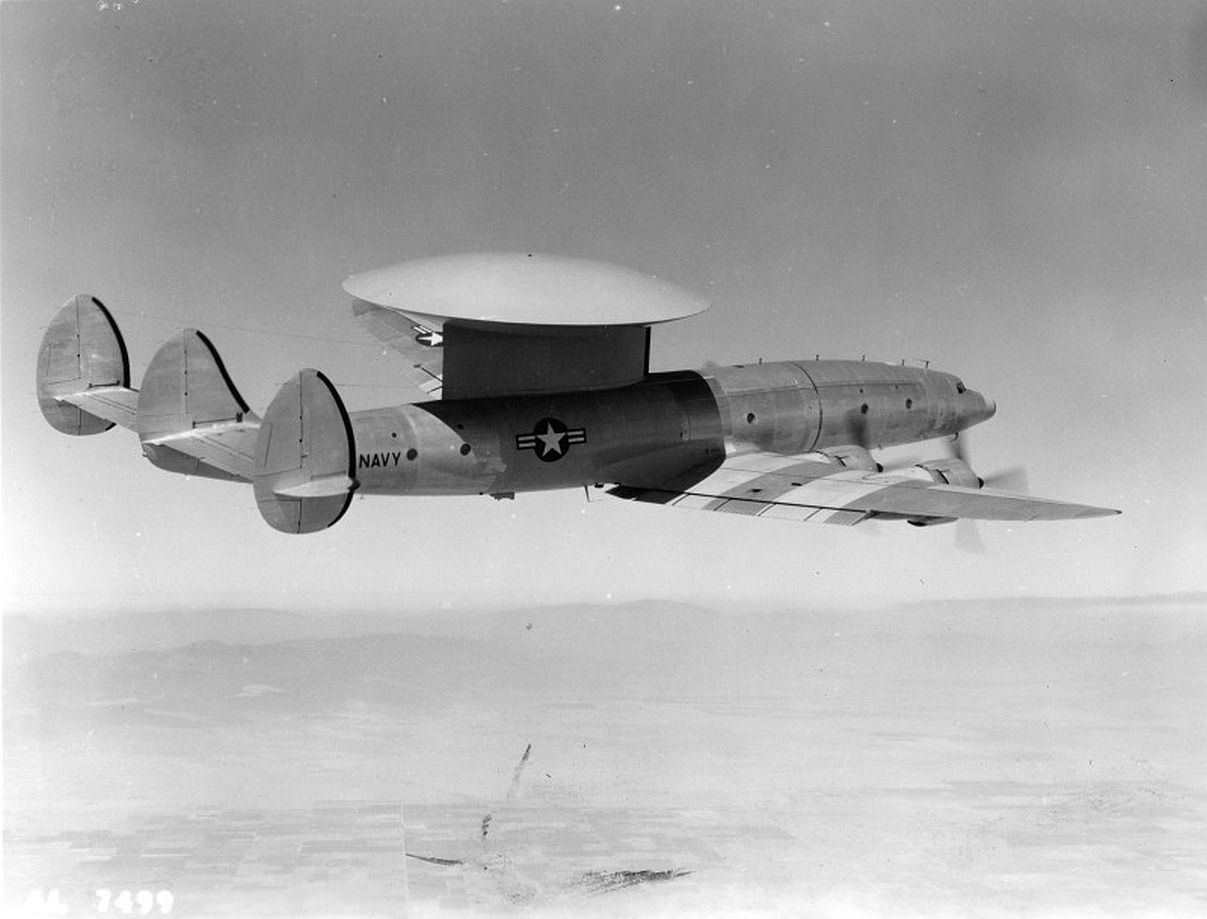
The Navy ordered two prototypes of the W2V-1 in 1957, but overflights of the USSR by the Lockheed U-2 spyplane from 1956 showed that fears of huge fleets of Soviet bombers were greatly exaggerated, and there was no need to ramp up US defenses so aggressively; the WV-2 could do the job. The W2V-1 never flew, and deliveries of new-build military Super Constellations dried up. However, that hardly meant the Super Constellation's military service was coming to an end; in fact, it was just starting to ramp up.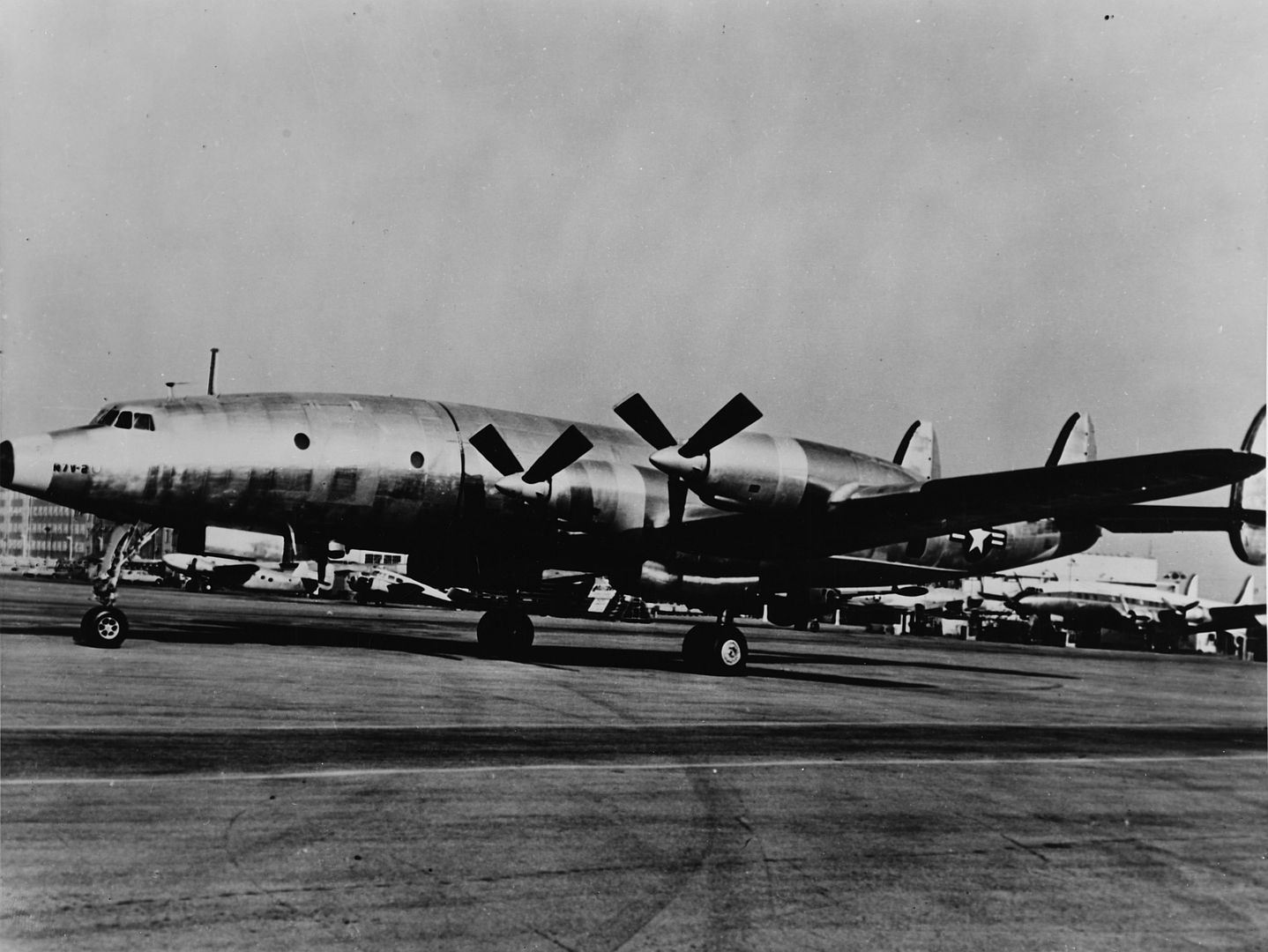
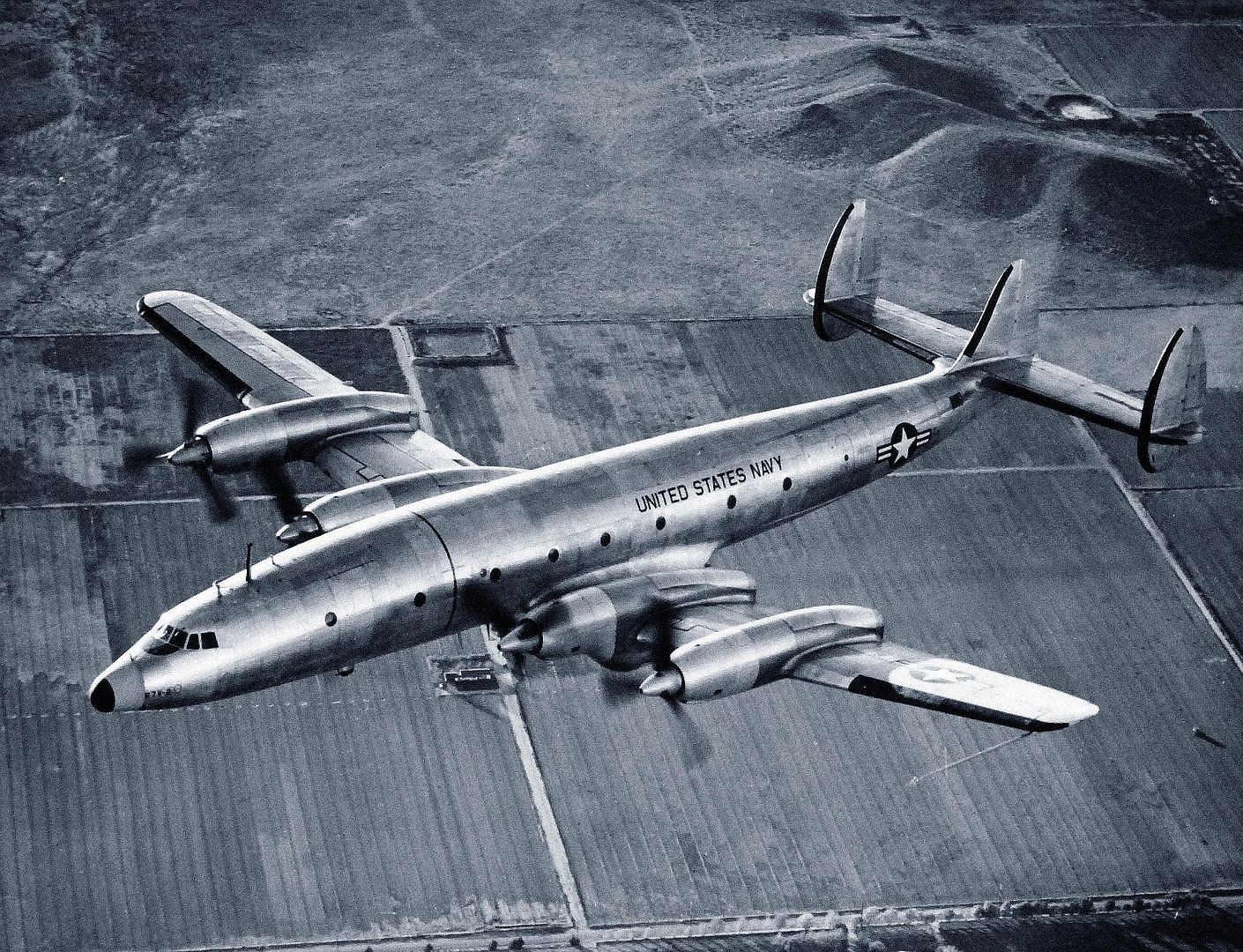
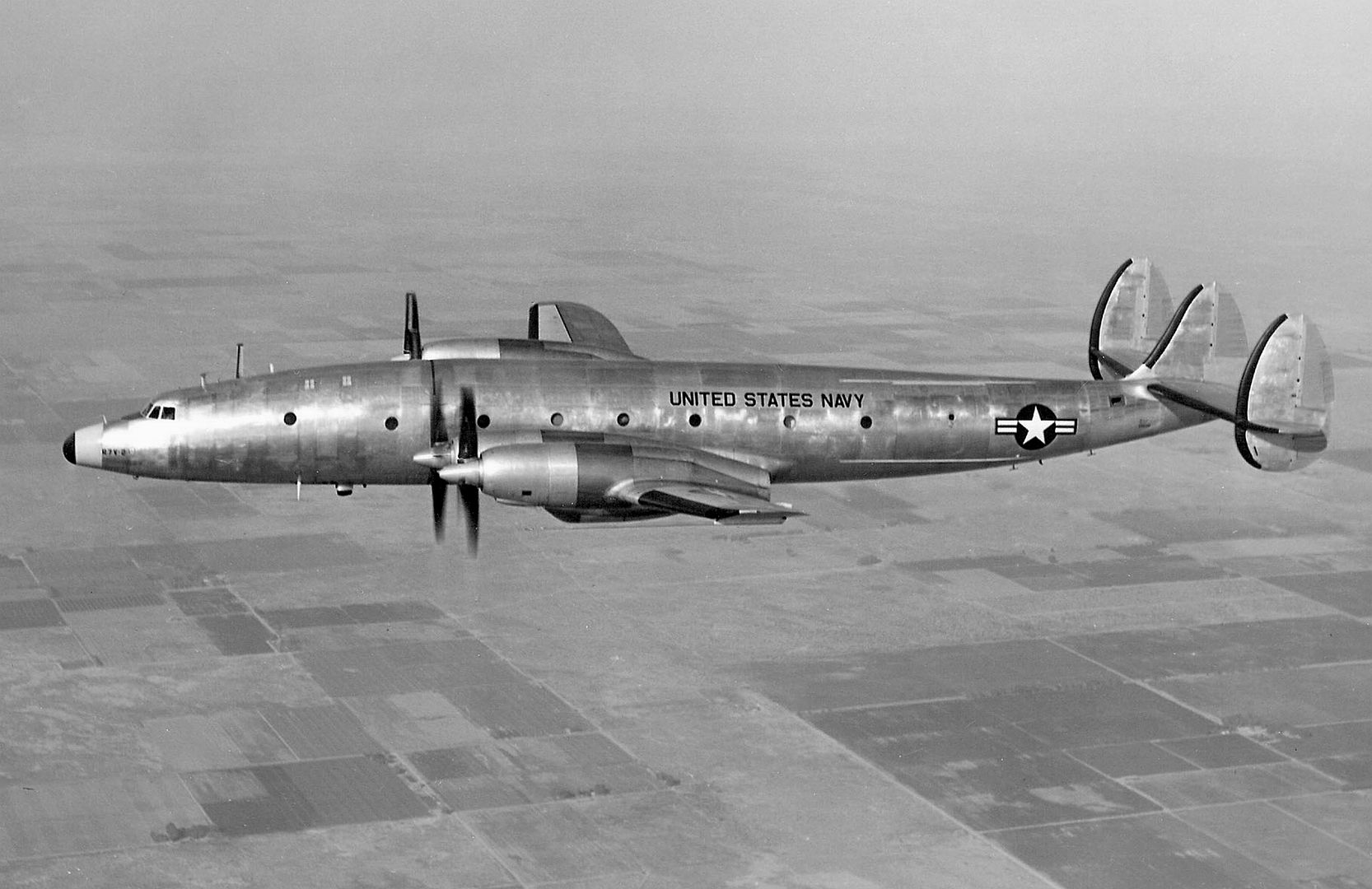
-
 Main AdminTHE SECOND LIFE OF MILITARY SUPER CONSTELLATIONS
Main AdminTHE SECOND LIFE OF MILITARY SUPER CONSTELLATIONS
In September 1962, the Pentagon adopted a uniform designation scheme for aircraft, with the Navy giving up its scheme and adopting that of the Air Force; there were also tweaks to Air Force designations.
From 1962, 27 EC-121D / RC-121D and 7 ex-Navy EC-121K / WV-2 machines, for a total of 34, were upgraded to the Air Force "EC-121H" standard, carrying gear for the Semi-Automated Ground Environment (SAGE) network. SAGE was a pioneering data network, in which radar stations -- including, in this case, flying ones -- fed data to control centers, which then automatically directed interceptors to intruders. The EC-121Hs were characterized by a teardrop radome above the forward fuselage, and also had a belly scoop to provide cooling for their electronic equipment. They retained the belly and dorsal fairings, but the radars were upgraded to modernized AN/APS-95 search radar and AN/APS-103 height-finder radar.
There was also a somewhat mysterious Air Force "EC-121Q" variant, with five conversions from EC-121D / RC-121D and one EC-121H machines, featuring the modernized AN/APS-95 and AN/APS-103, but not the SAGE gear. They were apparently electronics warfare machines, as suggested by the "Q" suffix. The EC-121Qs were associated with a classified program named BRASS KNOB.
The final USAF AEW variant was the "EC-121T", with 22 EC-121D / RC-121D and 1 EC-12H machines updated to this spec. They all had AN/APS-95 search radar in the belly radome, but while eight of them retained the AN/APS-45 radar in the dorsal radome, the rest had no dorsal radome. What other equipment they had is somewhat unclear, though it is known they had an AN/AYQ-5 computing system. Whatever they were fitted with, it raised take-off weight enough to require uprated R-3350-95 Turbo Compounds with 2,535 kW (3,400 HP) each.
The Navy modified 22 EC-121K / WV-2 machines -- including a few that had been previously modified to NC-121K configuration, see below, as an interim step -- to "EC-121P" configuration, which added a limited anti-submarine warfare (ASW) capability. The EC-121Ps looked very much like the EC-121K / WV-2, but the AN/APS-20 search radar was modified to spot submarine snorkels, with two ASW crew stations added as well. The EC-121Ps operated out of Iceland on North Atlantic patrols. Three of them ended up in Air Force use for trials under the designation of "JEC-121P".
* During the Vietnam War, the USAF EC-121D / RC-121D AEW machines would perform sterling duty in support of strike packages flying into North Vietnam, flying orbits over the Tonkin Gulf to warn pilots about adversary aircraft. Although officially called "Warning Stars", they were actually known by their callsign, "Big Eye", later "College Eye"; still later, upgraded to EC-121T spec, they would be called "Disco".
They became more effective from the summer of 1967, when they were fitted with the QRC-248 identification friend or foe (IFF) transponder, which could help pick out North Vietnamese MiG fighters from friendlies. Validating experiments for the QRC-248, as well as other IFF systems capable of reading Soviet-made IFF transponders, were performed with a modified EC-121K codenamed "Rivet Top"; it was later enhanced to carry Vietnamese-speaking crew who listened in on North Vietnamese fighter-control channels, to be codenamed "Rivet GYM". The gear tested ended up in the College Eye / Disco machines.
Ironically, the only combat loss of a US Super Constellation was not in Southeast Asia, but in Korea. On 15 April 1969, a Navy EC-121M / WV-2Q SIGINT machine was on patrol over the Sea of Japan, keeping an eye on North Korean activities -- when it was attacked by North Korean MiG-21 fighters and shot down, all 31 on board being killed. The Nixon Administration, bogged down in Vietnam at the time, responded in a limited fashion, sending a naval task force into the area for a brief time, then resuming surveillance flights -- presumably with fighter protection.
At the height of the Vietnam War, a total of 30 Navy EC-121K / WV-2 and EC-121P Super Constellations were converted to Air Force "EC-121R" configuration by removal of their radomes and fit of radio relay gear, as part of the IGLOO WHITE program. From 1967, these machines -- known as "Batcats", it seems from their radio callsign -- flew out of Korat AFB in Thailand to perform orbits over the Ho Chi Minh trail, relaying data from air-dropped seismic sensors to a control center in Thailand. The control center would map the motions of truck convoys from the reports of the seismic sensors, and call in air strikes on them. The EC-121Rs were painted in a disruptive jungle camouflage scheme, apparently being the only Super Constellations with such colors.
There were also a set of limited or one-off modifications of military Super Constellations:
During the Vietnam War, three Navy R7V-1 / C-121J machines were converted to flying TV / radio broadcast stations under Project JENNY, to be given the designation of "NC-121J Blue Eagle". They had both broadcast and production gear, with the ability to show movies. A fourth machine was converted to NC-121J configuration, but only for radio broadcast. Three of them were damaged by a Viet Cong mortar attack on Tan Son Nhut Air Base on 12 April 1966, though they were all back in service within a month.
The Air Force came up with their own Super Constellation flying broadcast stations for Vietnam service, with six C-121Cs converted to "EC-121S Coronet Solo" configuration.
A WV-2 / EC-121K actually ended up in US Army hands to be used in surveillance of ballistic missile tests, to be redesignated "JC-121K". It was stripped of its dorsal and belly radomes, with a tent-like structure, called a "dog tent", replacing the dorsal antenna. Cameras and other sensors were mounted in the dog tent, other windows added to the airframe, and shooting out the open left rear fuselage door -- some of the sensors didn't shoot through glass very well. It was used primarily in service of the Kwajalein Missile Range in the Marshall Islands.
Another WV-2 / EC-121K ended up in Air Force hands in a similar role, being modified as the "NC-121D" to observe re-entering space vehicles. It was stripped of its top and bottom radomes, the dorsal radome being replaced with three turrets, fitted with high-speed cameras and other test gear.
The "YEC-121K" was a WV-2 / EC-121K modified as an electronic testbed by the Naval Research Laboratory; following a second phase of trials modifications, it became the "NEC-121K", to then become in a third phase an "NC-121K". There were at least seven NC-121Ks, though there was no configuration common to them all. Several were used for fundamental oceanic research relating to ASW, while a number were used as "electronic aggressors", being fitted out with electronic countermeasures (ECM) gear to support training exercises. The ECM NC-121Ks retained the dorsal and ventral radomes, with canoe-type fairings on top of and underneath the forward fuselage, plus a litter of blade antennas.
The AEW Super Connies were out of service for continental defense by the mid-1960s, their mission having been supplanted by ground-based radar installations. The Super Connie began to be more generally retired from the first-line military service in the last half of the 1960s, with some transports having a second life in Air National Guard or Air Reserve service. All the military Super Connies were effectively out of service by the end of the next decade. Strictly military variants of the Constellation family, like the AEW machines, were never operated by foreign forces.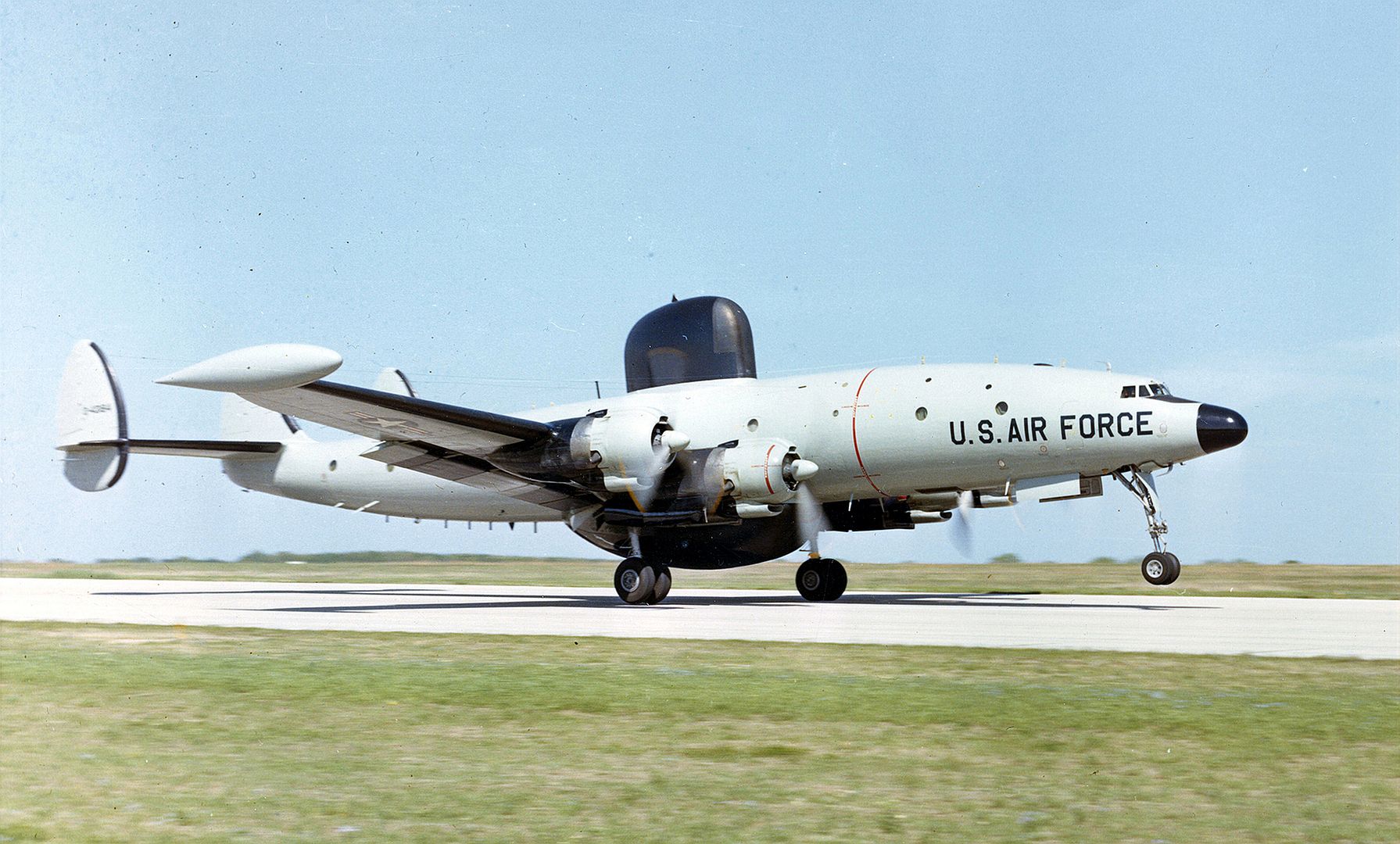
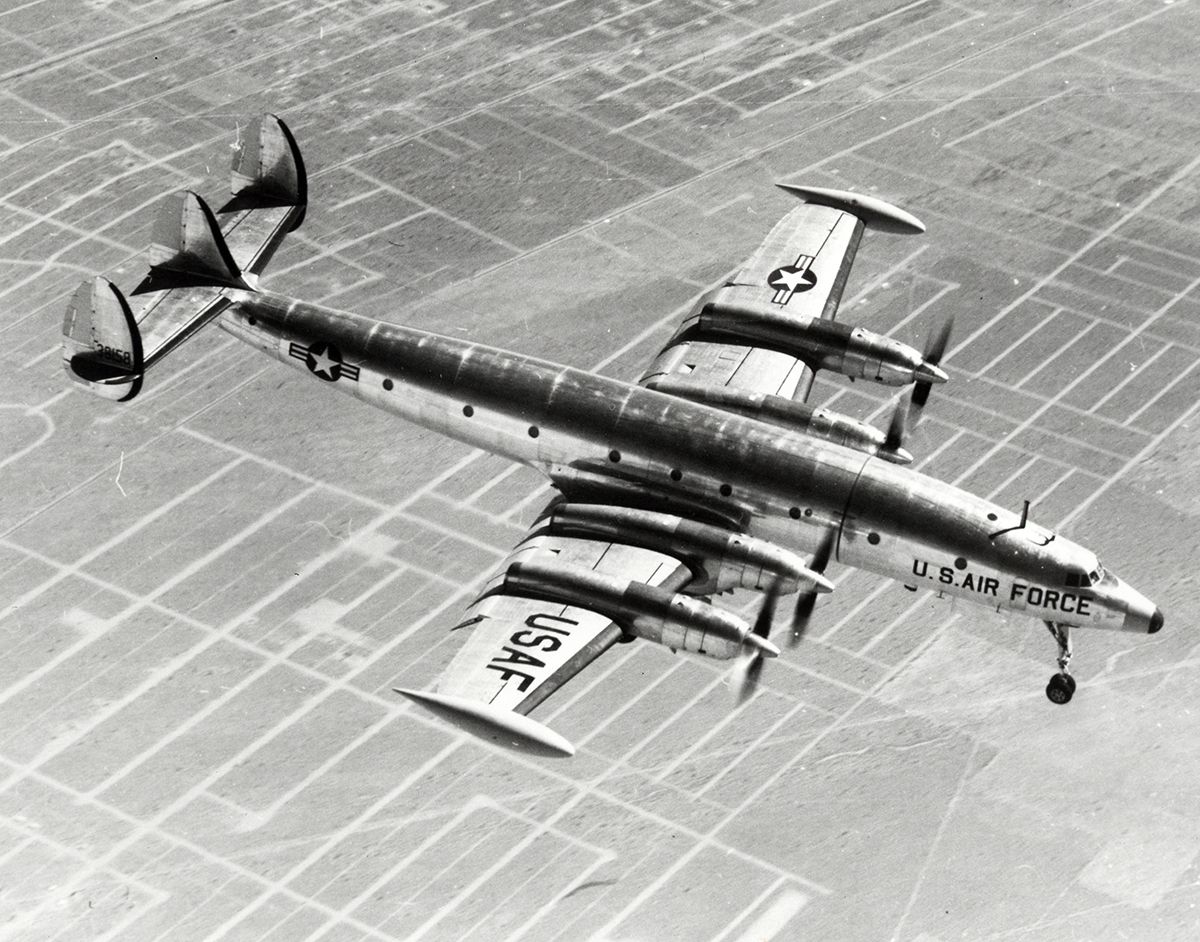
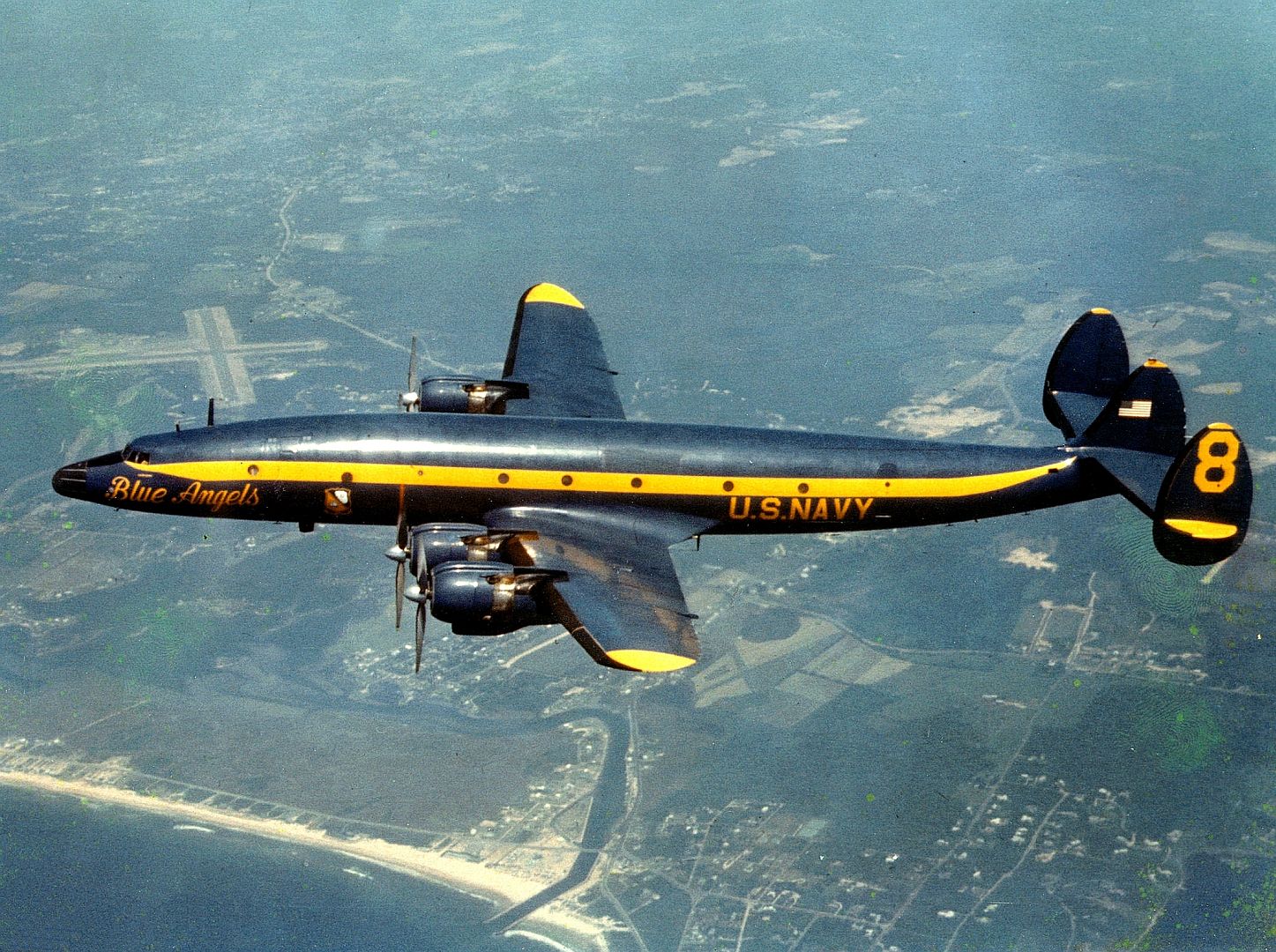
Specifications (L-1049G Super Constellation)
General characteristics
Crew: five flight crew, varying cabin crew
Capacity: typically 62?95 passengers (109 in high-density configuration)
Length: 116 ft 2 in (35.42 m)
Wingspan: 126 ft 2 in (38.47 m)
Height: 24 ft 9 in (7.54 m)
Wing area: 1,654 ft2 (153.7 m2)
Empty weight: 79,700 lb (36,150 kg)
Useful load: 65,300 lb (29,620 kg)
Max. takeoff weight: 137,500 lb (62,370 kg)
Powerplant: 4 ? Wright R-3350-DA3 Turbo Compound 18-cylinder supercharged radial engines, 3,250 hp (2,424 kW) each
Performance
Maximum speed: 377 mph (327 kn, 607 km/h)
Cruise speed: 340 mph (295 kn, 547 km/h) at 22,600 ft (6,900 m)
Stall speed: 100 mph (87 kn, 160 km/h)
Range: 5,400 mi (4,700 nmi (8,700 km))
Service ceiling: 24,000 ft (7,620 m)
Rate of climb: 1,620 ft/min (8.23 m/s)
Wing loading: 87.7 lb/ft2 (428 kg/m2)
Power/mass: 0.094 hp/lb (0,155 W/kg)
Post a reply
- Go to Previous topic
- Go to Next topic
- Go to Welcome
- Go to Introduce Yourself
- Go to General Discussion
- Go to Screenshots, Images and Videos
- Go to Off topic
- Go to Works in Progress
- Go to Skinning Tips / Tutorials
- Go to Skin Requests
- Go to IJAAF Library
- Go to Luftwaffe Library
- Go to RAF Library
- Go to USAAF / USN Library
- Go to Misc Library
- Go to The Ops Room
- Go to Made in Germany
- Go to Campaigns and Missions
- Go to Works in Progress
- Go to Juri's Air-Raid Shelter
- Go to Campaigns and Missions
- Go to Works in Progress
- Go to Skinpacks
- Go to External Projects Discussion
- Go to Books & Resources
